15 things you need to know before going to Austria

May 25, 2024 • 7 min read

Lake Hallstatt proves that it's worth making time to venture beyond Vienna © svetikd / Getty Images
Whenever someone asks me about my favorite country, I answer “ Austria ” wholeheartedly. This small but mighty place is a bottomless treasure chest and I feel honored to have grown up here and still call it home.
There are some things you should know before embarking on your Austria adventure. With these insider tips – covering everything from transportation to table manners – and a few astounding facts up your sleeve, you'll have all the intel you need for a smooth and memorable trip.

1. Spend at least a week in Austria
While it might be tempting to hop over and explore Vienna on a weekend break or pass through on a whirlwind European tour, do yourself a favor and plan to stay at least an entire week in Austria. The country is so much more than its (admittedly incredible) capital. Make time to venture into the countryside and explore lesser-known places such as Steyr in Upper Austria, Leoben in Styria or Lake Millstatt in Carinthia.
2. Skip Vienna's CAT and take the local train instead
The city airport train (CAT for short) is heavily advertised throughout Vienna airport, kind of implying that it’s the only option. But there are several other ways to get to the city center, including bus and express train, that are cheaper than CAT tickets. These usually won’t take longer than 25 minutes. The quickest way is to hop on ÖBB’s Railjet which will get you to the main station within 15 minutes.
3. Consider arriving by (night) train
Austria is well-connected train-wise. If you are planning a bigger Europe trip, or have the time and means, skip the plane and opt to arrive by train instead. There’s a plethora of options during the day and connections to more than 25 cities in seven countries with the ÖBB Nightjet .
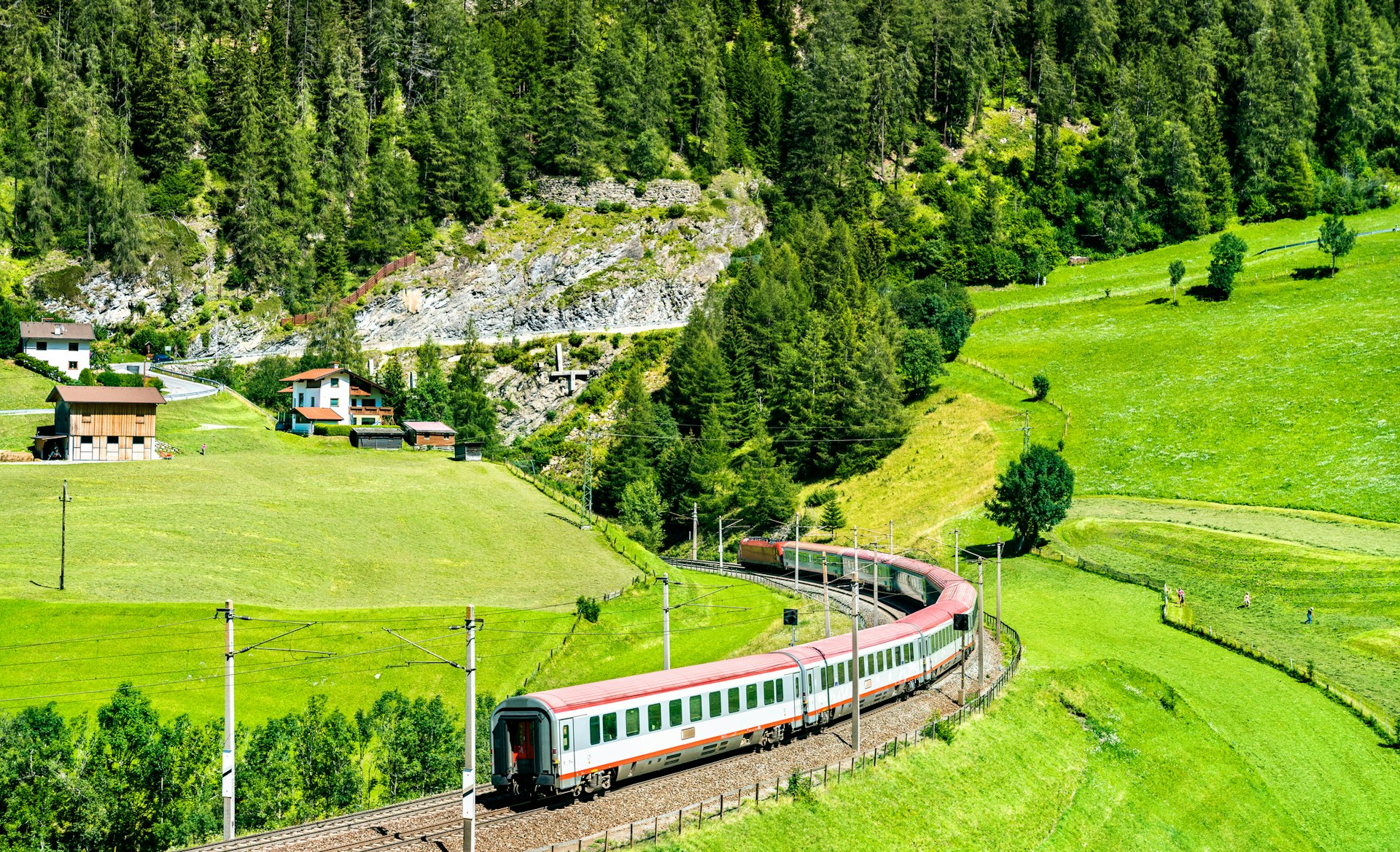
4. An ÖBB Vorteilscard will save you lots when planning a train-based trip
Austria’s railway network is pretty extensive and will get you to most places comfortably and on time. Keep an eye out for Sparschiene tickets. These are discounted tickets for certain days and times. If you like to be more flexible and plan to take multiple train journeys in Austria, sign up for a Vorteilscard online. It’s €66, valid for an entire year, and entitles you to a 50% discount on all train journeys operated by ÖBB (except for night trains).
Trains, ferries and bikes: our best tips for getting around in Austria .
5. Always buy a ticket for public transportation
In Austria, you can hop on any train or tram (and even most buses) without having to show a ticket, unlike other European cities such as London. Here it’s a trust-based system. Check out ÖBB’s “SimplyGo!” app, activating your journey online before you get on the train, bus or tram and then deactivating it when you arrive. You’ll be billed the next day and won’t be caught trying to cheat the system. Be aware that the app uses GPS to help you get the cheapest ticket, so could eat your international roaming data. However, many bigger train stations and trains offer free WiFi.
6. Head to a local bakery
Austrians love their Gebäck (pastries) in the morning and Jause (open sandwich) in the evening. Seek out a traditional local bakery and explore what’s on display. Each type of bread roll has a different name, and there are more pastries than you could ever imagine. And did you know that croissants are not French but an Austrian invention?
7. On Sundays, we rest
We take the weekend seriously. Most shops, including supermarkets, are closed on Sundays. There might be some farmers’ markets or flea markets taking place, but stores in general are closed. Some bakeries and smaller supermarkets in bigger train stations such as Vienna main station or Linz main station are open, but with a very limited selection.

8. Most Austrians have never seen or heard of The Sound of Music
When I travel abroad, especially in the Americas, people often mention The Sound of Music when they find out where I’m from. Funnily enough, most Austrians have never even heard of the musical film from 1965 with Julie Andrews that won five Academy Awards – so it's probably not the best conversation starter.
9. Don’t mistake Austrians for Germans
Don’t ever compare Austrians to Germans and suggest they are the same. The two countries share a bit of friendly rivalry, similar to the USA and Canada, Chile and Argentina, and England and Scotland.
While we speak the same language (on paper), Austria’s dialects across the nine states vary greatly – and some of them aren’t even understood by fellow Austrians. We might have some cultural similarities with the Germans, but you’re not doing yourself a favor by saying that out loud. Stay away from that topic during the day – but if you're going out with local friends in the evening, you could start a conversation to get their unique take on it.
10. Greetings have evolved
Before the pandemic, it was a firm handshake on business occasions and when meeting for the first time – or a kiss on each cheek for friends and family. The handshake has returned after a weird fist bump intermezzo during the pandemic. Friends and family still do the two kisses on the cheeks, but often combine them with a hug – or just hug and leave out the kisses.
If you are unsure how to greet someone, stick to the handshake and if the other person reaches out for friendly cheek kisses, then go with it – if that’s what you want.
11. When in Vienna…
Vienna has developed into a magical metropolis that offers it all – with a twist. Don’t take it personally when a waiter or waitress in the capital hardly looks at you, snaps, or doesn’t seem to be overjoyed to see you. That’s part of the Viennese spirit.
12. Never order Schnitzel with sauce, opt for lingonberry instead
Austrian cuisine is hearty and for those with a sweet tooth. In most restaurants, you’ll find Wiener Schnitzel on the menu. While in neighboring countries, schnitzel is served with sauce, never ever pour sauce on your Schnitzel in Austria. The breaded meat (traditionally veal, but most often served in a pork or turkey version) is crispy, and you don’t want to drown it. Traditionally, it is served with lingonberry jam instead – trust me on that, it is delicious.
Top tip: Whenever eating with other people, wait until everyone is served and then start your meal together.
Eat your way through Austria with our food and drink guide .

13. Tipping isn't mandatory, but it is appreciated
There are big cultural differences when it comes to tipping across the world. In Austria, there’s no set rule of tipping 5% or 20%. If you liked the service and the food, round up to the next euro(s). If you weren’t happy, don’t feel pressured to leave a tip.
14. There are hardly any scams, but look out on the train from the airport
Austria is one of the safest places you can travel to, whether you're visiting with friends and family or traveling solo. But it's wise not to keep your wallet in your back pocket or an open purse. One place I’d be particularly wary of my belongings is the train from the airport to Vienna main station. Don’t put your backpack or carry-on in the overhead compartments, and watch your luggage.
15. Enjoy the Trinkwasser
Austria’s tap water is ranked among the best in the European Union. Straight from the alps through the pipes into your glass. No need to buy bottled water during your stay in Austria. Bring your own reusable bottle and simply enjoy the tasty and refreshing tap water. Did you know that even most lakes are of such excellent quality that they qualify as potable water?
Explore related stories

Destination Practicalities
May 21, 2024 • 4 min read
Snowcapped mountains, swimmable lakes, cultural festivals and unique traditions make exploring Austria a joy to visit at any time of year.

May 20, 2024 • 6 min read
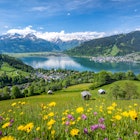
May 9, 2024 • 14 min read
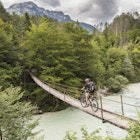
Apr 27, 2024 • 5 min read

Jan 19, 2024 • 11 min read

Jan 5, 2024 • 20 min read

Nov 6, 2023 • 5 min read
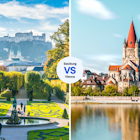
Oct 9, 2023 • 7 min read

Sep 29, 2023 • 7 min read

Jul 3, 2023 • 3 min read
Travel Guide Austria
Book your individual trip , stress-free with local travel experts
Select Month
- roughguides.com
- Travel guide
- Local Experts
- Travel Advice
- Accommodation
Plan your tailor-made trip with a local expert
Book securely with money-back guarantee
Travel stress-free with local assistance and 24/7 support
Glorious Alpine scenery, monumental Habsburg architecture, and the world’s favourite musical – Austria’s tourist industry certainly plays up to the clichés. However, it’s not all bewigged Mozart ensembles and schnitzel; modern Austria boasts some of Europe’s most varied museums and contemporary architecture not to mention attractive and sophisticated cities whose bars, cafés and clubs combine contemporary cool with elegant tradition.
Where to go in Austria
Travel ideas for austria, created by local experts.
_listing_1640546826392.jpeg)
15 days / from 6322 USD
Capitals of Europe - Berlin, Prague, Vienna and more
This trip is ideal for all city & culture lovers: the Reichstag in Berlin, the castle in Prague, historical Cesky Krumlov, St Stephen's Cathedral in Vienna, the fortress above Salzburg and Schloss Neuschwanstein near Munich - these are just some of the highlights of this incredible roundup trip.
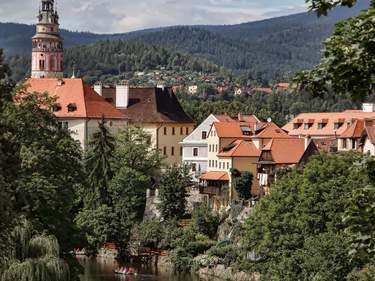
11 days / from 4251 USD
Castles across Austria and Czechia
Austria and Czechia are home to some of the world's most beautiful architecture and culture gems, such as Schloss Schönbrunn in Vienna, Prague castle, the fortress above Salzburg and many more. Finish your tour with a visit to Schloss Neuschwanstein before flying out of Munich.
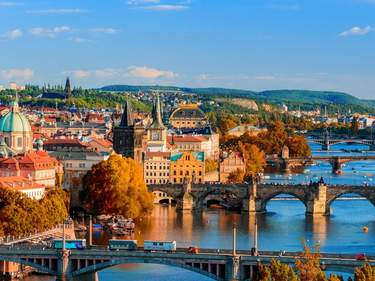
11 days / from 3543 USD
Exclusive trip to Prague and Austria
Explore the main highlights of Central Europe: fascinating Prague & historical Cesky Krumlov, the highlights of Vienna, Salzburg and Innsbruck in Austria and then further on to Germany - get in the Disney spirit at Schloss Neuschwanstein.
- Population 8.47 million
- Language German
- Currency Euro (€)
- Capital Vienna
- International phone code t 43
- Time zone GMT +1hr
Long the powerhouse of the Habsburg Empire, Austria underwent decades of change and uncertainty in the early twentieth century. Shorn of her empire and racked by economic difficulties, the state fell prey to the promises of Nazi Germany. Only with the end of the Cold War did Austria return to the heart of Europe, joining the EU in 1995.
Politics aside, Austria is primarily known for two contrasting attractions – the fading imperial glories of the capital, and the stunning beauty of its Alpine hinterland. Vienna is the gateway to much of central Europe and a good place to soak up the culture of Mitteleuropa .
Less renowned provincial capitals such as Graz and Linz are surprising pockets of culture, innovation and vitality. Salzburg , between Innsbruck and Vienna, represents urban Austria at its most picturesque, an intoxicating Baroque city within easy striking distance of the mountains and lakes of the Salzkammergut , while the most dramatic of Austria’s Alpine scenery is west of here, in and around Tyrol , whose capital, Innsbruck , provides the best base for exploration.
If you are looking for great travel experiences in Austria while avoiding the crowd, check out our tips here.

Without a visit to Vienna you’ll return home with only half the picture. Built on a grand scale as seat of the Habsburg Empire, it’s a place that positively drips with imperial nostalgia.The pickings are rich, with the old palaces of the Hofburg and Schönbrunn high on the list, as are the cultural offerings from the gargantuan art collections of the Kunsthistorisches Museum to the new cultural complex of the MuseumsQuartier.
Equally compelling, nowadays, are the ghosts of Vienna’s golden age at the end of the nineteenth century, when the likes of Freud, Klimt, Schiele and Schönberg frequented the city’s cafés.The city boasts some wonderful Jugendstil and early modernist buildings and a bevy of traditional fin-de-siècle cafés patrolled by waiters in tuxedos. Last, but by no means least,Vienna is by far the best place in the country for night- life, and that means everything from top-class opera to techno.
Salzburg is no less intoxicating. Its Altstadt contains the country’s most concentrated ensemble of Baroque architecture, and the Hohensalzburg fortress is arguably the country’s most impressive medieval castle. A substantial musical pedigree is ensured by the city’s status as the birthplace of Mozart and venue of the Salzburg Festival, one of the world’s most renowned celebrations of classical music and theatre.
Of Austria’s other regional capitals, Innsbruck combines both a buzzing 9 nightlife and close proximity to some of the Tyrol’s highest peaks to make it one of Austria’s most popular destinations. Its attractive and largely medieval city centre focuses on the Hofkirche, site of the memorial to sixteenth-century Habsburg strongman Emperor Maximilian I.
In the Styrian capital, Graz, the main attractions are the Altstadt, the fine-art collections of the Landesmuseum Joanneum and the Baroque Eggenberg Palace. Austria’s second largest city is also a good base from which to venture out into the vineyards and pumpkin fields of the rural southeast.
Top image: Hallstatt village © Rastislav Sedlak SK/Shutterstock
Travel advice for Austria
From travel safety to visa requirements, discover the best tips for traveling to Austria
- How to get to Austria
- Culture and Etiquette in Austria
- Eating and drinking in Austria
- Getting around Austria: Transportation Tips
- Sports and Outdoor activities in Austria
- Travel Tips Austria for planning and on the go
- Best time to visit Austria
The Rough Guides to Austria and related travel guides
In-depth, easy-to-use travel guides filled with expert advice.

Find even more inspiration here

Planning your own trip? Prepare for your trip
Use Rough Guides' trusted partners for great rates
written by Rough Guides Editors
updated 09.07.2021
Ready to travel and discover Austria?
Get support from our local experts for stress-free planning & worry-free travels.
- Where to stay
- Travel advice
Cookies on GOV.UK
We use some essential cookies to make this website work.
We’d like to set additional cookies to understand how you use GOV.UK, remember your settings and improve government services.
We also use cookies set by other sites to help us deliver content from their services.
You have accepted additional cookies. You can change your cookie settings at any time.
You have rejected additional cookies. You can change your cookie settings at any time.
Register to vote Register by 18 June to vote in the General Election on 4 July.
- Passports, travel and living abroad
- Travel abroad
- Foreign travel advice
Warnings and insurance
Before you travel.
No travel can be guaranteed safe. Read all the advice in this guide and any specific travel advice that applies to you:
- women travellers
- disabled travellers
- LGBT+ travellers
- solo and independent travel
- volunteering and adventure travel
Travel insurance
If you choose to travel, research your destinations and get appropriate travel insurance . Insurance should cover your itinerary, planned activities and expenses in an emergency.
About FCDO travel advice
The Foreign, Commonwealth & Development Office ( FCDO ) provides advice about risks of travel to help British nationals make informed decisions. Find out more about FCDO travel advice .
Follow and contact FCDO travel on Twitter , Facebook and Instagram . You can also sign up to get email notifications when this advice is updated.
Related content
Is this page useful.
- Yes this page is useful
- No this page is not useful
Help us improve GOV.UK
Don’t include personal or financial information like your National Insurance number or credit card details.
To help us improve GOV.UK, we’d like to know more about your visit today. Please fill in this survey (opens in a new tab) .

The Ultimate 5 to 7 Days in Austria Itinerary
Last Updated on February 20, 2024
by Maggie Turansky
Disclaimer: This article contains affiliate links. That means if you click a link and make a purchase, we may make a small commission. As an Amazon Associate we earn from qualifying purchases. For more information, see our privacy policy.

Planning out an Austria itinerary is one of the top things to do when visiting Central Europe. This beautiful country nestled between Germany, Switzerland , Italy , the Czech Republic , Slovenia , Hungary and Slovakia has a lot to offer beyond Vienna or Salzburg . And whether you have 5 or 7 days in Austria, you’re sure to have a blast exploring this gorgeous Central European nation.
From chic cities to charming villages, to gorgeous mountaintops to lovely lakes, Austria is a dynamic and interesting destination that is a joy to explore. Easy to navigate and filled with history, planning out the ideal trip to Austria is a treat.
So if you’re planning to spend a few days to a week in Austria, follow this itinerary to ensure you get a good feel for this country – though you may want to plan another trip in the future!
Table of Contents
How Many Days in Austria?
If you want to see more than the capital city and get to a couple of different places, then consider spending at least 5 days in Austria.
However, if you’re interested in digging deeper and visiting more than two different cities, then mapping out at least 7 days is going to be your best bet.
With a week in Austria, you have the opportunity to visit several different places, have the time to get to know some of the cities and also have the opportunity to explore some smaller towns and natural areas as day trips.
You also really can’t go wrong with spending 10 days in the country or more. With this amount of time, you don’t need to leave anything off of your itinerary and you will be able to spend time in some more far-flung places and areas a bit off the beaten tourist trail.

Getting To & Around Austria
Located in the centre of Europe, Austria — and, particularly, the capital of Vienna — is easy to reach from virtually all of Europe and many destinations further afield.
Vienna Airport is a large international airport that has countless flights to and from a myriad of countries and cities in the world, so arriving in Austria from abroad is not a problem.
Austria is also well-connected by rail and bus from nearby countries and cities. Vienna is directly connected to cities like Budapest , Prague , Munich and Ljubljana and many other smaller cities are also well-linked across the continent. You can view train schedules here.
Once in Austria, you have a few options when it comes to getting around. In the cities, plan to rely on getting from point A to B on foot or using the city’s public transit. Austrian cities are incredibly easy to navigate and there is no need to have a car while exploring.
You also can easily get between cities and major urban areas via both an extensive rail system and bus.
However, if you want to easily make stops between cities or would like to get out in nature, see the countryside and have some flexibility, it can be worth it to opt for a car rental and go for an Austrian road trip.
This will allow you to spend time in the Bavarian Alps, the Zillertal Alps and the town of Mayrhofn, the Danube Valley and drive along the Grossglockner High Alpine Road.
If you decide to hire a car while in Austria, you can compare prices across several major companies on Rentalcars.com.
One thing to note when driving in Austria is that you will need a vignette – or toll sticker. If you rent a car while in Austria already, this will be taken care of for you. However, you will need to purchase one upon crossing over from a neighbouring country.

5 to 7-Day Austria Itinerary
Day 1 – vienna.
The perfect place to begin any visit to Austria is in the capital city of Vienna . Often considered to be one of the most liveable cities in the world, Vienna is an absolutely beautiful city that is packed with history and interesting things to do.
Spend your first day in Vienna wandering around and taking in all of the top sites.
You can go on a walking tour to get your bearings before heading to sites like the Vienna Opera House, enjoying the art collections at the Albertina Museum or taking in the iconic attractions of the Spanish Riding School and the Sisi Museum at the Hofburg. End your day taking in the beautiful St Stephen’s Cathedral.
Vienna is also absolutely wonderful to simply wander around or to park yourself at one of its iconic cafes and enjoy a classic Viennese pastry and coffee. This is absolutely one of the best things to do.

Where to Stay in Vienna
Motel One Wien – Hauptbahnhof — This hotel is a fantastic accommodation option for those travelling on a mid-range budget in the Austrian capital. Located very close to Vienna’s main train station, they have several room sizes to choose from and an option to add breakfast each morning.
Hotel Brauhof Wien — Those after luxury in the Austrian capital will love this 4-star hotel. They have a range of beautiful, plush rooms to choose from and countless other amenities to ensure that your stay is an unforgettable one.
Hostel Ruthensteiner — This family-run hostel can be a fantastic option for both budget or solo travellers in Vienna. They have both private rooms and dorm beds available and several common areas and kitchen facilities that make it easy to meet other travellers in the city.
Not quite what you’re looking for? Click here to browse more Vienna hotels!

Day 2 – Vienna
Day 2 of your Austria trip should still be spent in Vienna. As the capital and largest city in the country, there is a lot to do here and you definitely need at least two full days within the city itself to do it justice.
On your second day, it’s time to explore a bunch of sites that you didn’t get to the day before. These can include touring Schonbrunn Palace (you can book a guided tour here ), heading to Karlskirche or wandering around Schloss Belvedere.
Plan to spend your afternoon taking in the museums in the Museums Quartier, which includes places like the Leopold Museum and the Modern Art Museum.

Day 3 – Vienna
One of the benefits of spending 3 days in the Austrian capital is that you will have the time to go on a day trip from the capital. Because we’re exploring more of Austria itself if you’re spending 5 or 7 days in the country, this is a great time to take a day trip outside of Austria.
Heading to the Slovak capital of Bratislava is an excellent day trip option from Vienna.
Located only about an hour via train from the Austrian capital, Bratislava is an interesting place to spend a day and it is completely different from Vienna so you will get a good change of pace. You can go independently or organise a guided tour.
Bratislava’s compact nature means that it can easily be explored in just one day and it’s the perfect way to head outside of Austria during your trip to Austria!

Day 4 – Salzburg
After spending a few days in Vienna, the next stop on your itinerary through Austria should be the western city of Salzburg . Known for being the birthplace of Mozart and the filming location for the classic musical The Sound of Music , Salzburg is a lovely city to enjoy and no trip to Austria would be complete without visiting.
Though small in size, Salzburg has enough to offer visitors to merit spending 2 days here. So if you’re only planning for 5 days in Austria, this will be the final stop on your itinerary.
Spend your first day in Salzburg taking in the main sites of this beautiful city. In the morning, explore the old town, wander down Getreidegasse, browse through the stalls in the Grünmarkt, visit the Salzburg Cathedral and take in the views at Residenzplatz – Salzburg’s main square.
Later, head up to the imposing Hohensalzburg Fortress and stroll along the walking trail on Monchsberg until you reach the Augustiner Brau Brewery, which is well-known for its classic and massive beer garden.

Where to Stay in Salzburg
Gästehaus im Priesterseminar – This guesthouse is an excellent option for mid-range visitors to Salzburg. They have a wonderful, centrally located in a beautiful baroque building and they have several lovely rooms on offer – perfect for exploring the city!
Boutique Hotel Auersperg – If you’re after a luxury option in Salzburg, you’re sure to love this boutique hotel in the centre of the city. It has been family-run for generations and it is located within spitting distance of all of Salzburg’s top sites. They have luxe rooms available and countless other amenities to ensure your stay is a great one.
Yoho International Youth Hostel – Budget and solo travellers will love this centrally located hostel. They have both private and dorm rooms available, good common areas and self-catering options and, for those who want it, they screen “The Sound of Music” every evening
Not quite what you’re looking for? Click here to browse more Salzburg hotels!

Day 5 – Salzburg
On the final day of your 5-day trip to Austria (or simply your final day in Salzburg if you’re planning on spending 7 days in Austria), plan to spend the day digging deeper and getting to know Salzburg just a bit better.
There is plenty to keep you occupied on your second day in Salzburg. Plan to spend your day wandering through the Mirabell Palace and Gardens, take in one or two of the city’s many museums and take a river cruise along the Salzach to see the city from a different perspective.
You can end your day in one of the city’s fine restaurants or even visit another beer garden to sample some great Austrian brews.

Day 6 – Gollinger Waterfall & Hallstatt
Treat day 6 as a travel day between Salzburg and Austria’s second-largest city of Graz. This day is best to do if you have a car, as it will give you the flexibility to make stops along the way and to enjoy the rural and natural side of Austria.
For those looking to get a bit active, then make your first stop en route to Graz be the Gollinger Waterfall. This waterfall is absolutely beautiful and there is a hiking trail that can take you around the falls and allow you to view it from different vantage points. The hike is pretty easy and it’s suitable for those of a moderate fitness level.
After enjoying the waterfall, drive a bit further to visit the iconic town of Hallstatt. This town is well-known on Instagram feeds and it is absolutely beautiful. However, it is also incredibly popular amongst international visitors and can be absolutely packed with tourists.
If you’re keen to avoid crowds and want a more laid-back alternative to Hallstatt, then consider making a trip to the town of St Gilgen on Wolfgansee, a large lake located a little bit closer to Salzburg.
For those who don’t have a car and are going this by public transport, it’s not going to make sense to stop at Hallstatt or the Gollinger waterfall. What you can do instead is spend your morning on a lovely day trip to St Gilgen and Wolfgangsee before taking an afternoon train from Salzburg to Graz.
End your day of exploration in the beautiful city of Graz.

Where to Stay in Graz
Schlossberghotel – Das Kunsthotel – This classic hotel is an excellent option for those looking for a great place to stay in Graz. They have a range of beautifully decorated rooms and it is filled with antiques and artwork. There are lots of rooms to choose from, a swimming pool, and plenty of other fantastic amenities.
Aiola Living Graz – This boutique hotel is a great option for visitors to Austria’s second city who are looking for a swish place to stay in the centre of town. They have clean, modern and comfortable rooms on offer and there is also an on-site fitness centre for guests to use at their leisure.
B&B Hotel Graz-Hbf – This hotel is a great option for those travelling in Austria and visiting Graz on a budget. They have a range of private rooms available and a great location close to the train station – perfect for exploring the city and for continuing on your trip in Austria. There is even an option to include breakfast.
Not quite what you’re looking for? Click here to browse other hotels in Graz!

Day 7 – Graz
The final day of your 7-day Austria itinerary should be spent exploring the absolutely beautiful and charming city of Graz .
This city often gets overlooked when people plan trips to Austria and this is really a shame – it has quite a lot to offer and its compact size means that you don’t need to dedicate a lot of time to it.
Start your day at the Kaiser Josef Market before meandering over to the Grazer Burg where you can take in the fascinating double spiral staircase. Then, head over to the Graz Cathedral and tour this incredible structure before watching the clock chime and the interesting puppets at the city’s Glockenspiel.
Spend your afternoon up at Schlossberg, the castle hill that has incredible views over the city – it is accessible via funicular. Then, head over to the hip Lend area and, if you’re so inclined, visit the Kunsthaus – a modern art museum. If you’re more interested in history, then you could head to the Styrian armoury, instead.
End your day at one of Graz’s many phenomenal restaurants – and make sure to sample some of the great wines grown in the region!
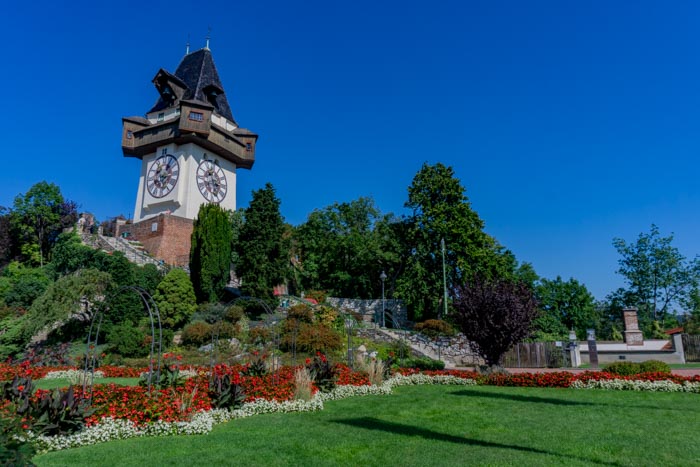
Have More Time?
If you, for example, have 10 days in Austria or more, then the world is your oyster. For those who want to see more of this beautiful country, head to the west and make sure to explore the Tyrol region. The Alpine city of Innsbruck is infinitely popular and is a perfect getaway for those looking for an active holiday. From here, you can also visit the gorgeous glaciers at Dachstein.
If you’re interested in heading to some neighbouring countries, Slovenia is well-located and easy to get to from Graz. Consider spending heading to the city of Maribor before venturing onto Ljubljana (and beyond, if you have the time!).
There is a lot to see and do in and around Austria and it is likely impossible to plan a bad itinerary in this beautiful country. However, with the proper planning and knowledge, you can map out the absolutely perfect trip for you and your travel style.
Are you planning a trip to Austria? Have any questions about this itinerary? Let us know in the comments!

Related Posts:

The Ultimate 2 to 3 Days in Salzburg Itinerary

The Ultimate One Day in Hallstatt Itinerary

The Perfect 2 to 3 Days in Vienna Itinerary

About Maggie Turansky
Maggie is a co-founder and writer for The World Was Here First. Originally from the US, she has lived in five different countries and has travelled to dozens more, both solo and with her partner, Michael. She particularly loves exploring Spain and spending time in the Caucasus and the Baltics. Read more about Maggie
would like to know about visiting Styria and Karnten
Hi, Amazing article, helps a lot!
I have more questions around sightseeing near Hallstatt and Salzburg- for eg- 5 fingers, lake wolfgangsee..what else can i explore on these lines? and any budget hostels to stay a night probably in or near Hallstatt?
Leave a Comment Cancel reply

20+ Austria Travel Tips for First Timers & Must Knows Before You Go
Last Updated: July 6, 2023
*FYI - this post may contain affiliate links, which means we earn a commission at no extra cost to you if you purchase from them. Also, as an Amazon Associate I earn from qualifying purchases. Check out our Privacy Policy and Disclosure. for more info.
Despite its relatively small size, Austria is a country packed to the brim with sights – from majestic mountains and opulent palaces to elegant cities and more stunning cakes than you could ever eat in one lifetime.
… it’s also full of potential culture shocks and silly travel mistakes.
I used to live just across the border in Munich, so over the years I’ve gotten to know Austria fairly well… the hard way! Namely by bumbling around, committing the faux pas and embarrassing myself in the name of research.
But luckily, you’re here just in time to prepare for Austria the easy way – by reading my full list of Austria travel tips, collected over years of first hand experience (and many a starry-eyed day trip from Munich to Salzburg ).
So, from avoiding saucy schnitzels to preparing for naked saunas, here are a few weirdly specific must-knows before you visit Austria. I hope you find it helpful!
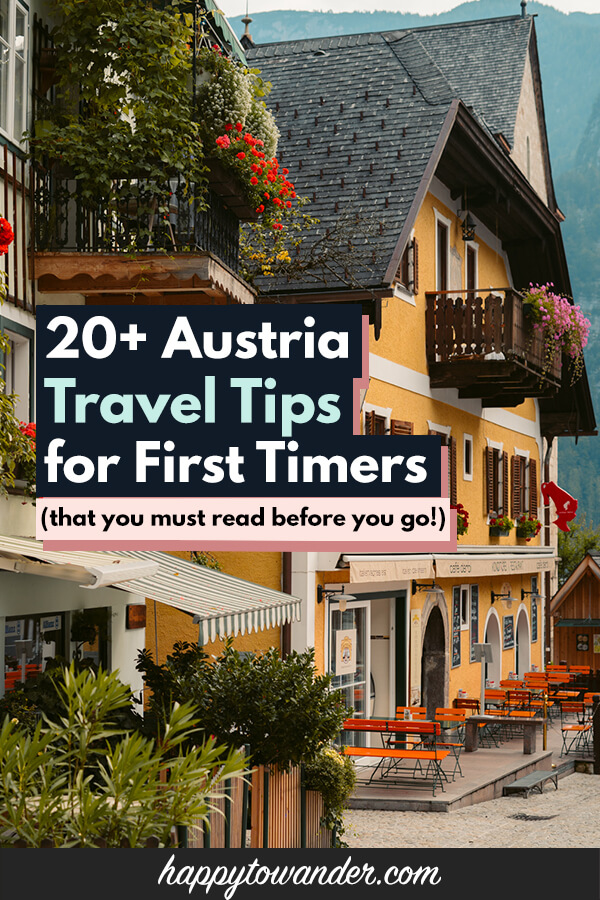
Save this list of Austria Travel Tips for later!
You’ll be very glad you did.
1. Remember: Austria ≠ Australia
We’ll start with a silly Austria tip, and one that I (frankly) cannot believe needs saying.
But from US presidents to famous news outlets , it’s a gaffe that pops up time and time again, so, just to make sure we’re all on the same page… Austria is a country in Central Europe, and completely different to Australia, the Southern Hemisphere country famed for its kangaroos and koalas.
Walk around Austria for even a few minutes and you’ll come across silly souvenirs mocking this confusion, and probably a tour guide or two telling a joke about it.
So, again, before you start planning that Austria trip, make sure it’s mountains, schnitzel and Sound of Music you’re looking for, not the Outback, Didgeridoos, and giant spiders that hide in your shoes.
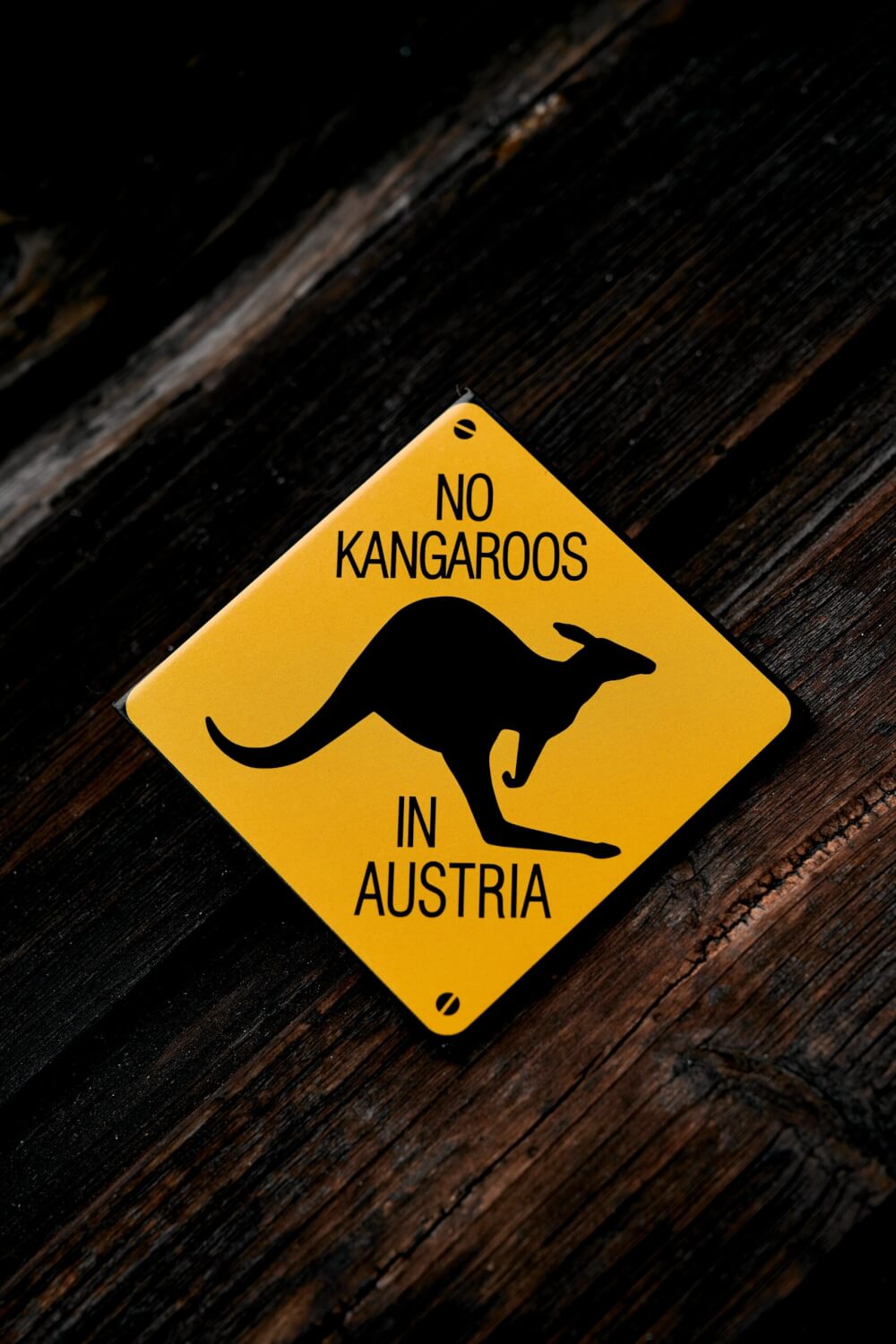
2. Never mistake Austrians for Germans
Just as Austria and Australia are (shockingly) not the same country, the same goes for Austria and its neighbour, Germany.
A very important Austrian etiquette tip I must shout from the rooftops is simply this: Austrians don’t take kindly to being mistaken for German.
So, remember to never say that Germany and Austria are the same, or make jokes about Germans and Austrians being the same. At best, they’ll laugh it off, at worst, you’ll cause legitimate offense.
Sure the two countries share a language and there are (admittedly) similarities, but Austrians are really proud of their country and don’t love it when people just dismiss them as the exact same as Germany, so keep that in mind.
As a Canadian who’s frequently mistaken for American, I totally get it.

3. Be sure to add Austria’s nature spots to your itinerary
Now in terms of where to go in Austria, I find that overseas visitors often gravitate towards the country’s most famous cities, Vienna and Salzburg.
But there is SO much more to explore beyond that, especially Austria’s natural marvels, which many overseas visitors miss. In fact, it’s often Austria that Europeans choose for their nature-forward holidays (whether it be for skiing or hiking), so don’t miss out!
Filled with soaring mountains, glimmering lakes, and charming swathes of countryside, Austria is (in many ways) a more budget-friendly version of Switzerland, so I highly recommend extending your time and expanding your itinerary to include at least a day trip or two to take in some of these incredible natural landscapes.
There’s the valleys and waterfalls of Salzburgerland, the alpine majesty of Tyrol’s nature parks, the beautiful lakes of Carinthia, along with more under-the-radar picks like the Bregenzerwald in Vorarlberg (which offers amazing mountains and cute alpine towns).
All that to say – there’s plenty of amazing nature to be enjoyed in Austria, so don’t just limit yourself to cities.
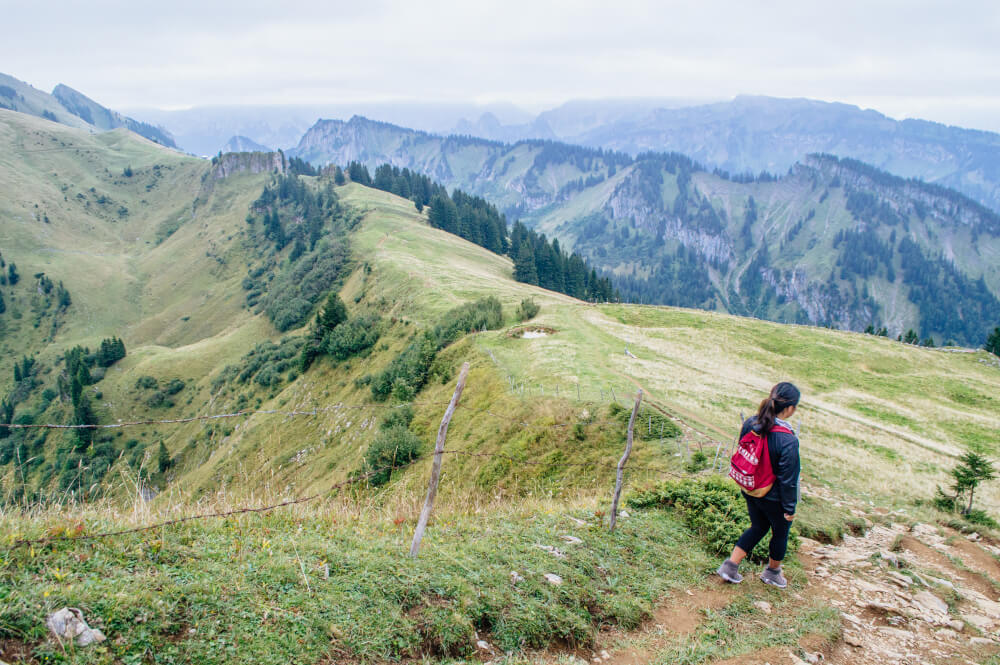
4. Seek out new destinations by reading Austrian websites
On that note, if you are open to visiting more offbeat places during your Austria trip, one thing I can highly recommend is doing your research on local Austrian websites.
In my opinion, there’s quite a big difference between the Austrian destinations that international tourists visit and the destinations that domestic tourists visit.
Both are great, but if you want to explore beyond the most famous sights, then reading Austrian blogs to see where locals vacation is a good starting point.
NOTE: This is also a great way to discover more offbeat things to do in individual cities as well. For instance, if I wanted to find more alternative things to do in Graz , I might browse local blogs/event websites to find pop-up events or unique festivals.
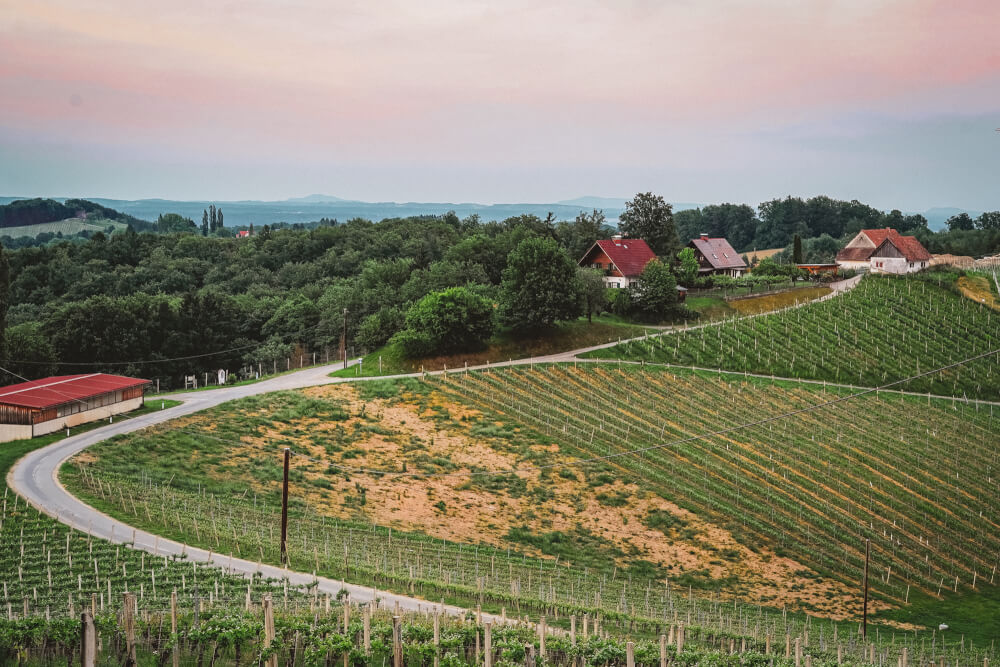
5. Don’t miss Austria’s Christmas markets
I know that neighbouring Germany is probably the best known country in the world for Christmas markets, but Austria has a fair few incredible gems too, often with far thinner international crowds.
So, if you’re looking for a magical winter destination in Europe, consider pencilling in some Austrian Christmas Markets between mid November to Christmas.
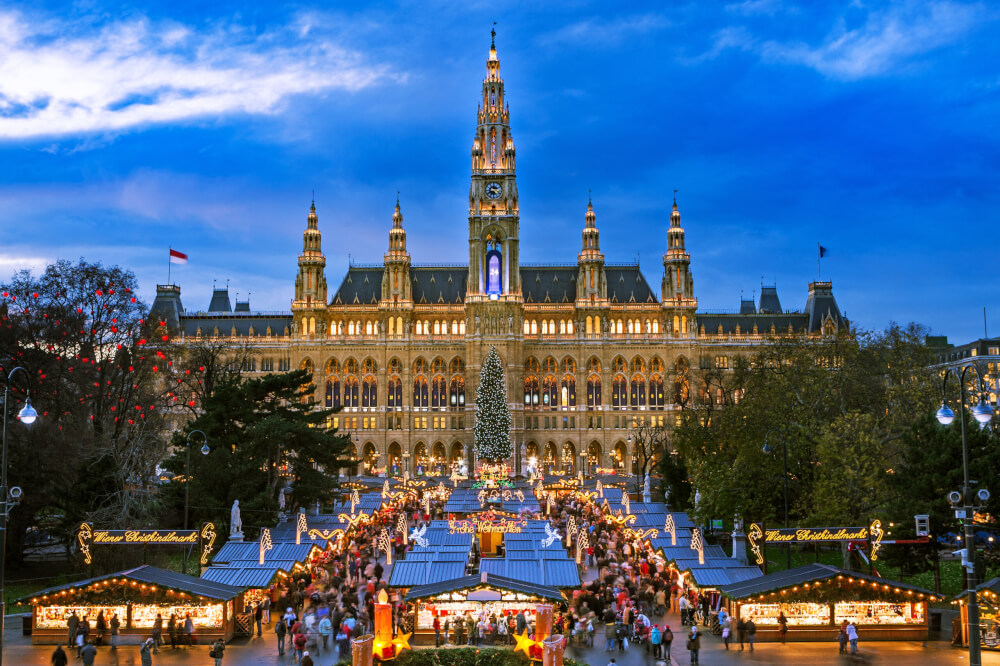
6. Learn the basics in German
In terms of which language to panic-learn before your trip, German is the official language of Austria, so that’s what everyone will speak.
In larger cities, it won’t be tough to get by with English, but it may be more difficult in the countryside.
In any case, it’s good to at least know the basics, like…
- Hello – Hallo (Ha-low!) or Grüß Gott (Grewss-got!)
- Thank you – Danke (Dahn-keh)
NOTE: The German spoken in Austria can sound very different depending on where you are because there’s a lot of different regional dialects, so don’t be surprised if you have trouble understanding locals (or vice versa). It’s all part of the fun!

7. Only rent a car if you plan to do nature trips
If your trip mainly consists of city to city travel, then I’d advise relying on public transport to save yourself the headache of driving.
Public transport is amazing in Austria, so you’ll have no trouble getting around, both from place to place and also within cities themselves.
But, if you plan to do a lot of more offbeat nature spots to see mountains, lakes and national parks, then having a car would be ideal. Be sure to check out my considerations before renting a car in Europe if that’s the case.
Of course, a more convenient alternative would be to book day tours to nature spots from the city you’re staying in – that way you can simply drool in the back seat while you see all the landscapes, without the stress of navigating.
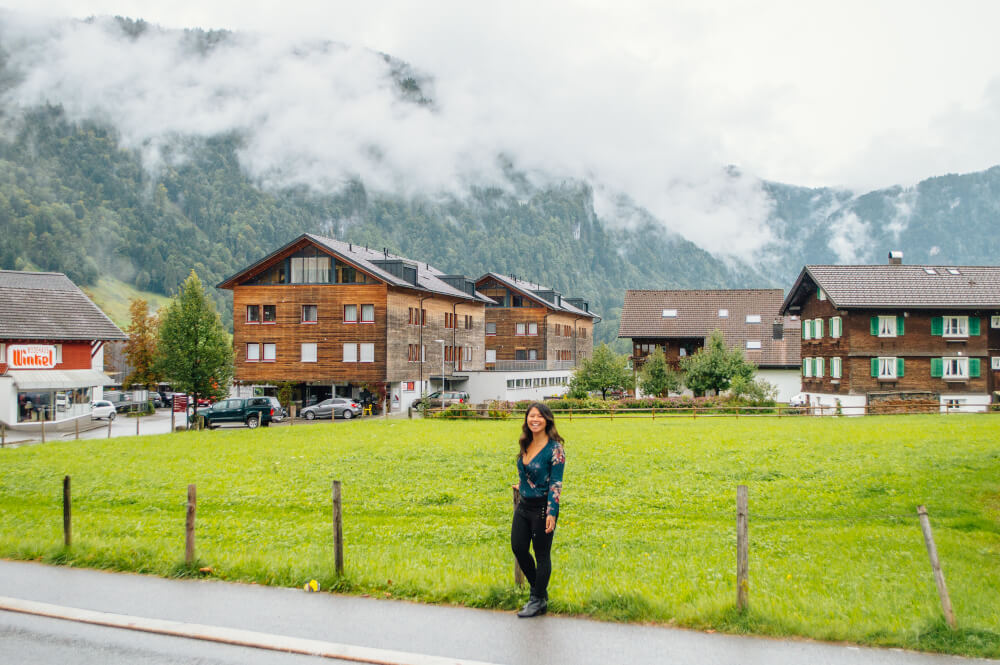
8. Get a vignette if you’re driving
If you do plan to rent a car however, one important Austria must-know is you’ll need a vignette.
This is a sticker that you must buy for your car in order to use the country’s motorways. Failure to procure one means an aggressive fine in the mail weeks after the fact. (Ask me how I know that).
IMPORTANT: Make sure this sticker is purchased and adhered to the car before you enter the country because there are automatic scanners that look for them at the border… so you may get fined even if you buy one upon entry. (Again, ask me how I know that)

9. Understand that public transport is on an honour system
Unlike other countries which have fare gates and other measures in place to ensure you pay, public transport in Austria works on a very trusting honour system where you are responsible for buying your own ticket, and only need to show it if you are asked to (via random controls).
So, make sure you always buy the right ticket and validate it properly in case you get checked!
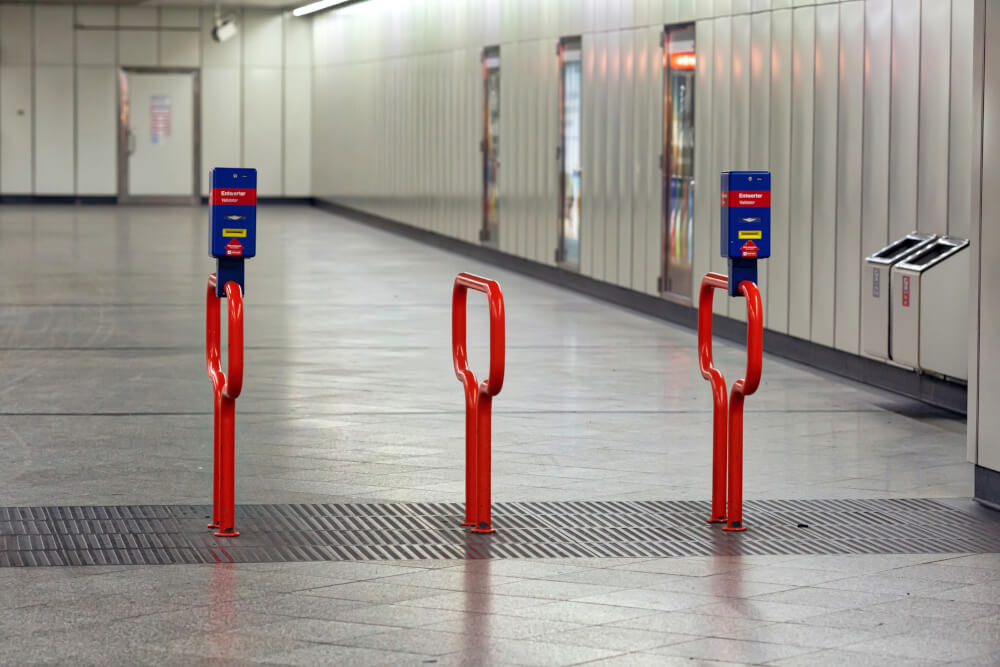
10. Learn the tricks to saving money on Austrian trains
Train travel is one of my personal favourite ways of getting around Austria. If you are new to train travel in Europe, then be sure to read my step by step guide to get acquainted, and scope out my favourite scenic train rides while you’re at it.
After you’ve decided that you do want to glide elegantly across the country by rail, then there are a few different ways to save money on tickets:
- Einfach-Raus-Ticket: A group ticket that gives you unlimited travel for a day on all local/regional trains across Austria. The more people you have, the cheaper it works out to be per person. Great for group day trips!
- Regional Tickets/Offers: Special passes that give you unlimited travel for a day on local/regional trains for a particular region/area. Great for day trips in a smaller area!
- Eurail: A rail pass that covers train travel across most European countries. Great only in certain instances, i.e. when you are visiting many countries and want flexibility/spontaneity. I explain more in my full Eurail review.
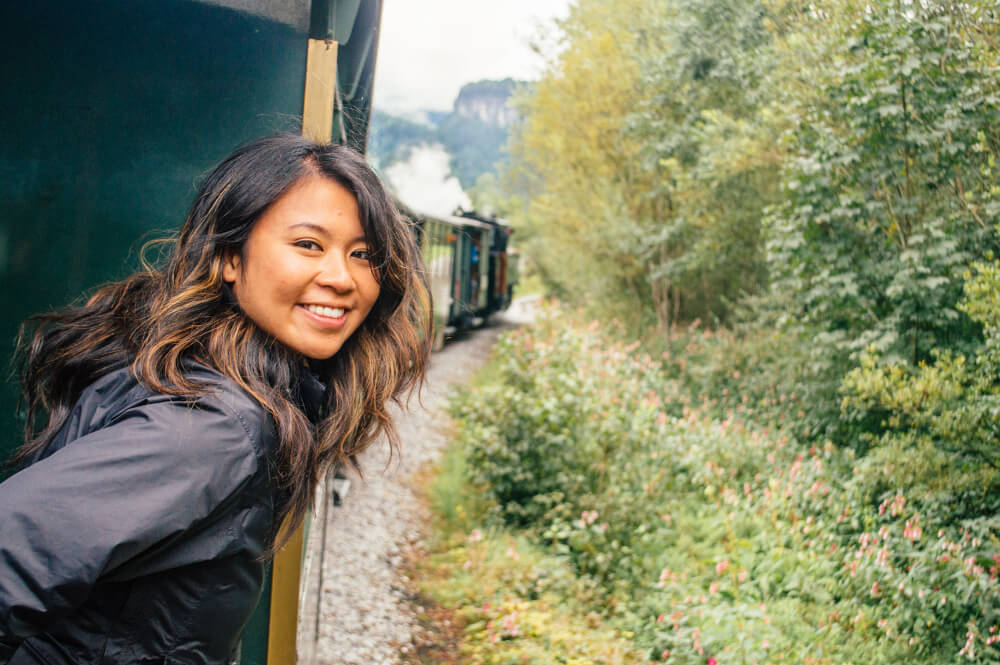
11. Sorry – Austrians do not know the Sound of Music
I hate to be the bearer of bad news.
And trust me – as someone who grew up watching the Sound of Music religiously every Christmas, this fact is definitely not one of my favourite things, but here goes…
Austrians do not really care about the Sound of Music. It’s not a classic film for them, they have no nostalgia tied to it, and (frankly) many of them don’t even like it.
So, when you head to Salzburg for your big Sound of Music pilgrimage, just know that your enthusiasm is probably best shared among your fellow tourists, rather than among locals.
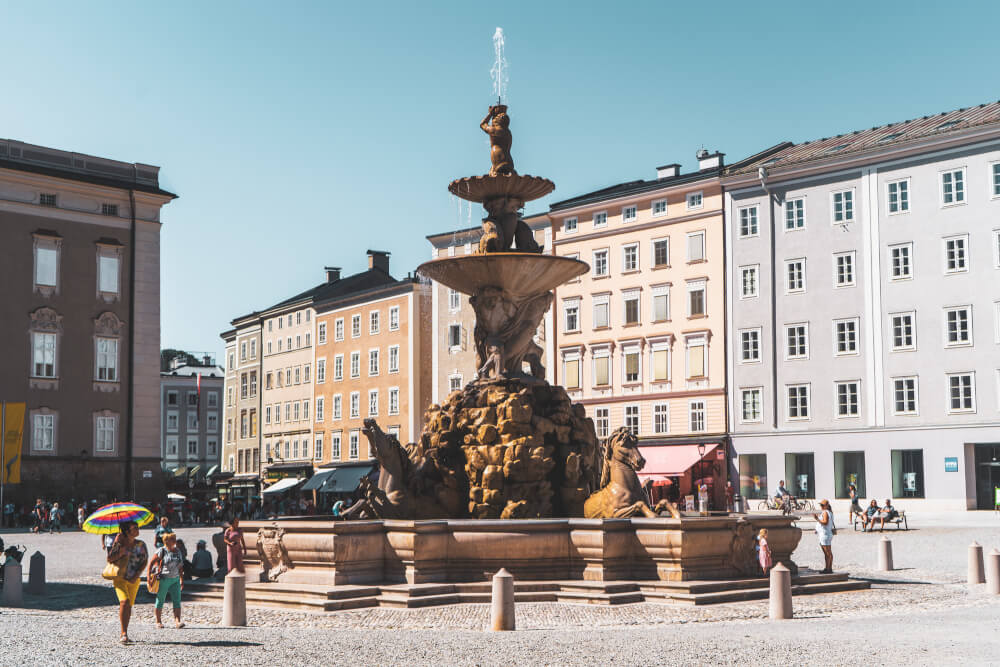
12. Remember “W” is pronounced like V
In terms of language, a good thing to remember is that the letter W in German is pronounced like a V so if you’re saying any words or names, say it with a “Vuh” sound.
In Austria, the most prominent example would be the German name of Vienna which is spelled Wien, but pronounced “Veen”.
You’ll catch this pronunciation trap in the city’s most popular dish too -Wiener Schnitzel. So remember: if you do decide to indulge in this fried slab of goodness during your trip, order it as a “Veen-uh” schnitzel and not “Weeeeee-ner” schnitzel.
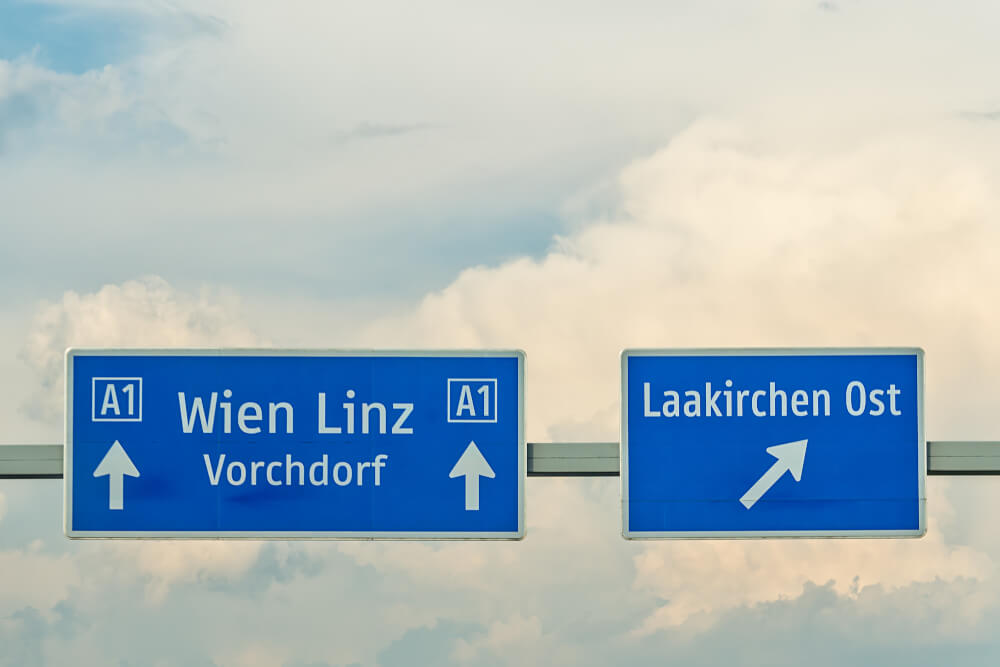
13. Avoid catching locals in photos/videos without their consent
Upon arrival in Austria, your first instinct may be to whip out your phone and capture as many of those beautiful sights as possible, to the chagrin of your 52 Instagram followers.
But just a quick note before you do that – Austrians can be very private people who don’t like having their photograph taken without consent.
So, a very important Austrian etiquette tip is to be mindful of others’ privacy and try not to blatantly take photos that might accidentally catch someone’s face head on.
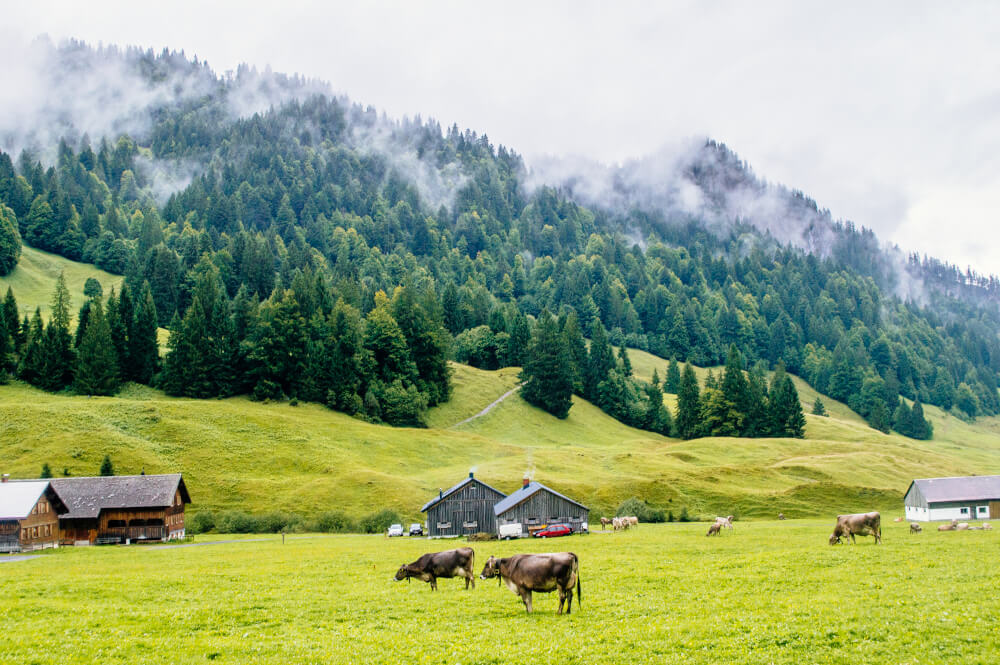
14. Don’t be alarmed if you catch people staring at you
While taking photos of others’ faces is considered very rude, one thing that isn’t is… staring.
To the shock of many first time visitors, Austrians don’t mind staring. So you could very well be sitting on the bus, minding your own business, only to feel the stony stare of a stranger who is (rather shamelessly) staring at you while you just try to peacefully exist.
Can it be jarring? Of course! But don’t worry – it’s just a cultural difference where they don’t consider staring to be a rude practice. Think of it as just them perceiving you (or if it helps your confidence, pretend it’s because you’re wowing them with your stunning face).
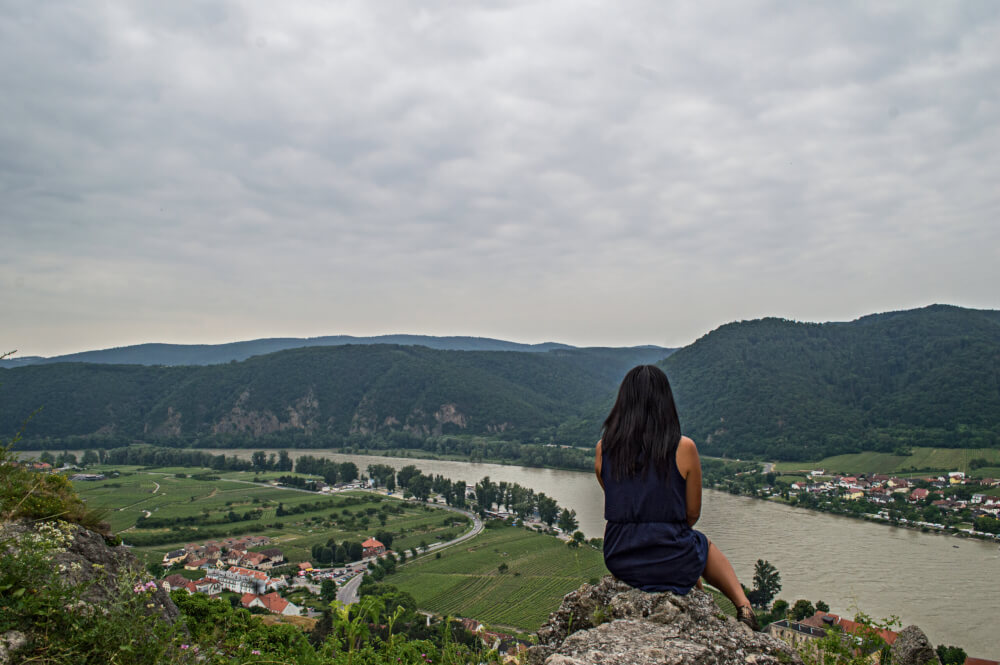
15. Learn how to tip in Austria
In terms of tips, tipping culture in Austria is definitely not as aggressive as in North America.
For good service you’ll tend to tip 5-10%, usually rounding up to a number that makes sense so if your meal was 45 euro, you might hand them 50.
What’s worth noting though is that tipping works a little differently here.
For instance, you wouldn’t just leave money on the table after the meal. Instead, you have to tell them how much you intend to pay in total (including tip) as you hand over your cash or card.
So let’s imagine that (including tip), you want to pay 40 euro. In this instance, you would say “40” as you hand over your cash or your card, and then they’ll give you the appropriate change.
If you want them to just keep the change, then you hand your cash over and say “Stimmt So!”, and they’ll know to just keep the whole thing.
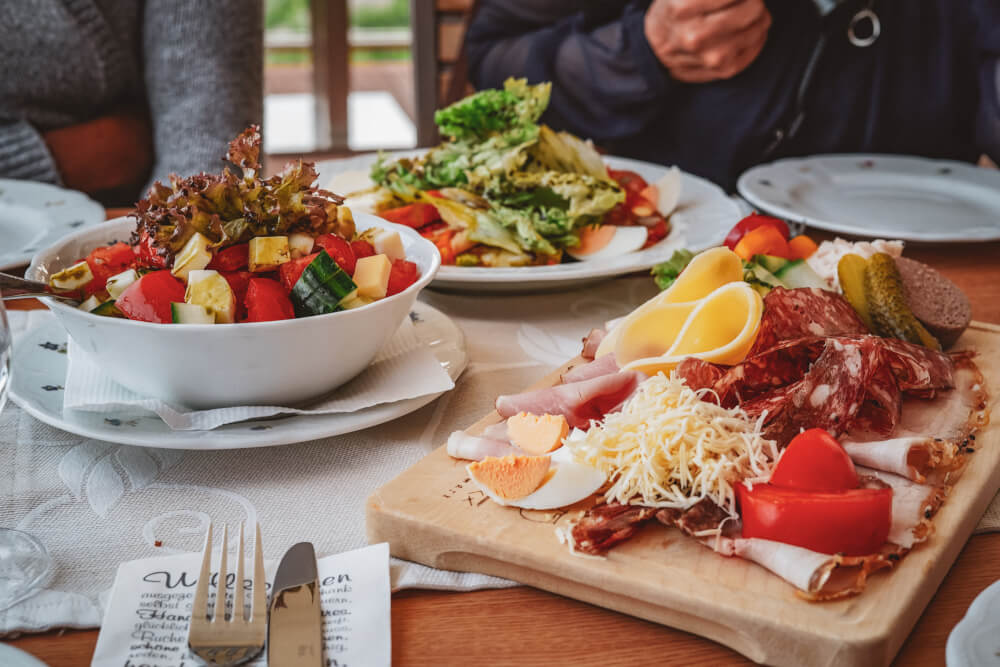
16. Be prepared for a different style of customer service
Now in terms of culture, it is often said that Austrians can seem cold and direct. I personally haven’t had this experience as much, but maybe I’ve just been lucky. (And tend to surround myself with the drunk ones ).
Anyways, what I will concede though is that Austrian customer service is very different from typical North American customer service.
In contrast to typical North American service which involves being bright, cheery, friendly and hands on, Austrian customer service is usually a lot less animated, and to someone who’s not used to it, it may even seem like you’re being ignored on purpose.
The way I’ve had this explained to me though is that Austrians just really value their privacy, hence why they take such a hands-off approach.
At a restaurant for example, the server will come, take your order and then leave you alone, hence why you need to flag them down if you want anything, because they consider constant check-ins a rude interruption.
So, don’t take ‘colder’ customer service personally – it’s just another one of those cultural differences.

17. Prepare for nude saunas and public nudity areas
Another fun cultural difference? The Austrian approach to nudity!
Namely, that they’re very into it.
If you go to a sauna in Austria for instance, it’s very much expected that you go naked (for sanitary reasons), and there’s often designated nude (FKK) zones at lakes and swimming areas as well.
Add on the fairly common occurrence of both men and women alike sunbathing topless, and you have a sure recipe for culture shock. So, if you’re from a part of the world where this kinda bare-it-all attitude isn’t common, just remember it’s normal here, so adapt accordingly.

18. Eat as much dessert as humanly possible
An easier thing to adapt to perhaps is the absolutely WONDER that is Austria’s sweet scene.
Truly, Austrians are masters of dessert.
While North Americans will have no doubt heard of strudel or the famous Sacher Torte, there are SO MANY more options than those. My personal favourite is the Esterházytorte which is originally Hungarian but is commonly found in Vienna these days too, or the almighty Kaiserschmarrn, shredded pancakes served with jam or apple sauce.
With hundreds of options and special regional desserts all over, I’d recommend you simply go to a coffee house or bakery and let your senses guide you.
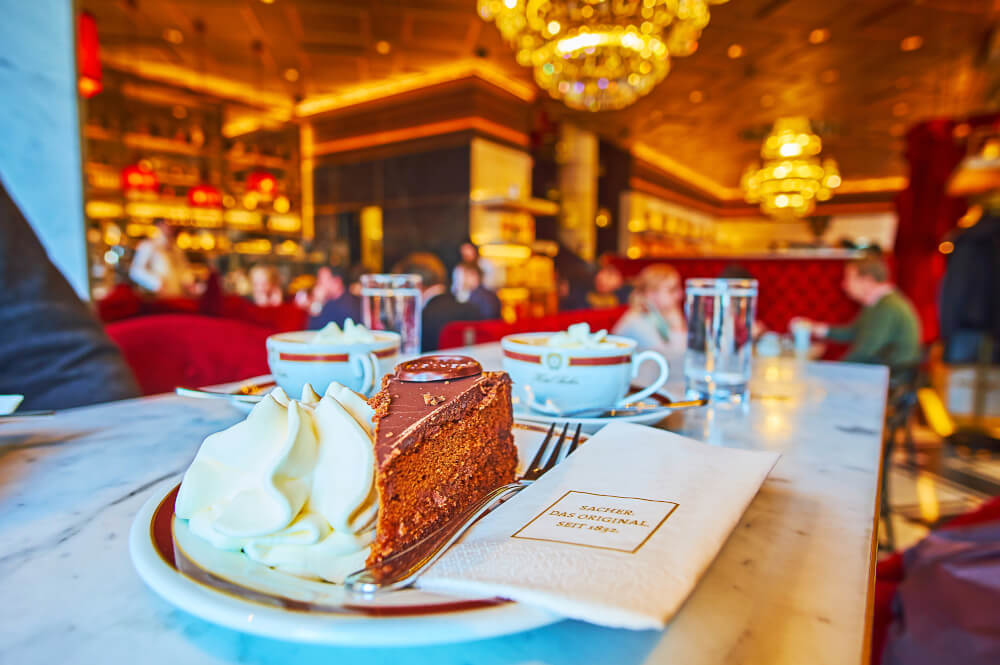
19. Try regional specialties wherever you are
While overseas visitors often think of Austrian food as simply schnitzel and not much else, the truth is there’s a lot of culinary variety across the country, so choose your eats accordingly.
For instance, Styria is known for its crispy fried chicken (Backhendl) and delicious pumpkin seed oil. Some alpine regions are also known for their hearty eats like Käsespätzle, bouncy little dumplings slathered with cheese and onions.
Other regions do a lot of fish dishes, others work miracles with potatoes – all to say be sure to try the local specialties wherever you are.

20. Don’t miss out on Austrian wine
Despite its proximity to Germany, Austria is definitely more of a wine country than a beer country, so take advantage of all the crisp and delicious wines that they have to offer.
Or better yet – book yourself a trip to a wine region to enjoy it close to the source! South Styria is one of my favourite areas of Austria.
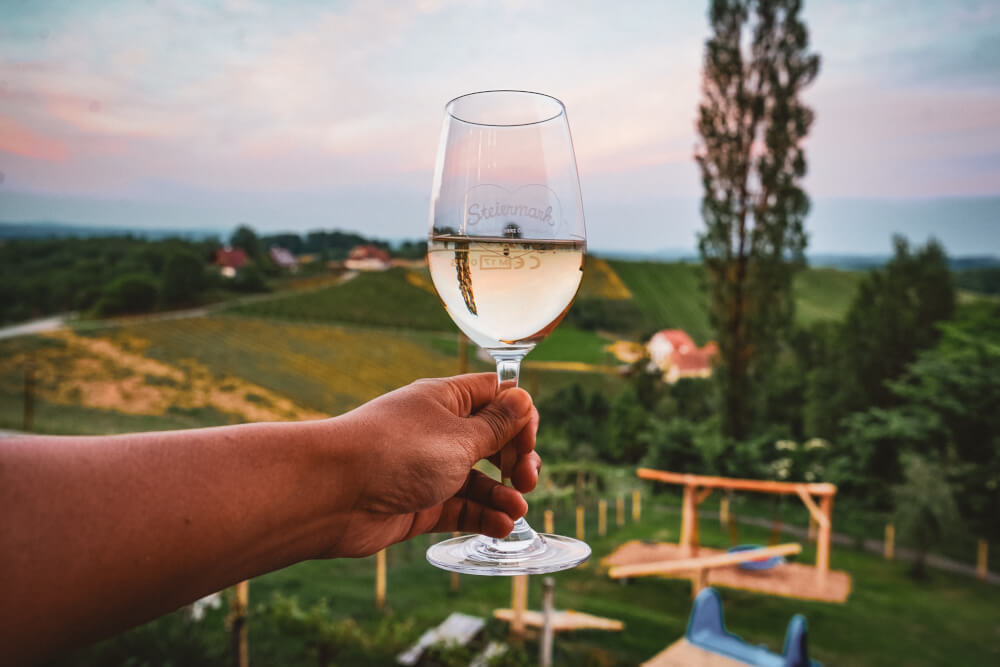
21. Try Almdudler
And if you’re looking for a soft drink to try in Austria, make sure you grab yourself a refreshing Almdudler.
Besides being fun to say, it’s a remarkably tasty soda made with alpine herbs, and is often considered the national drink of Austria.
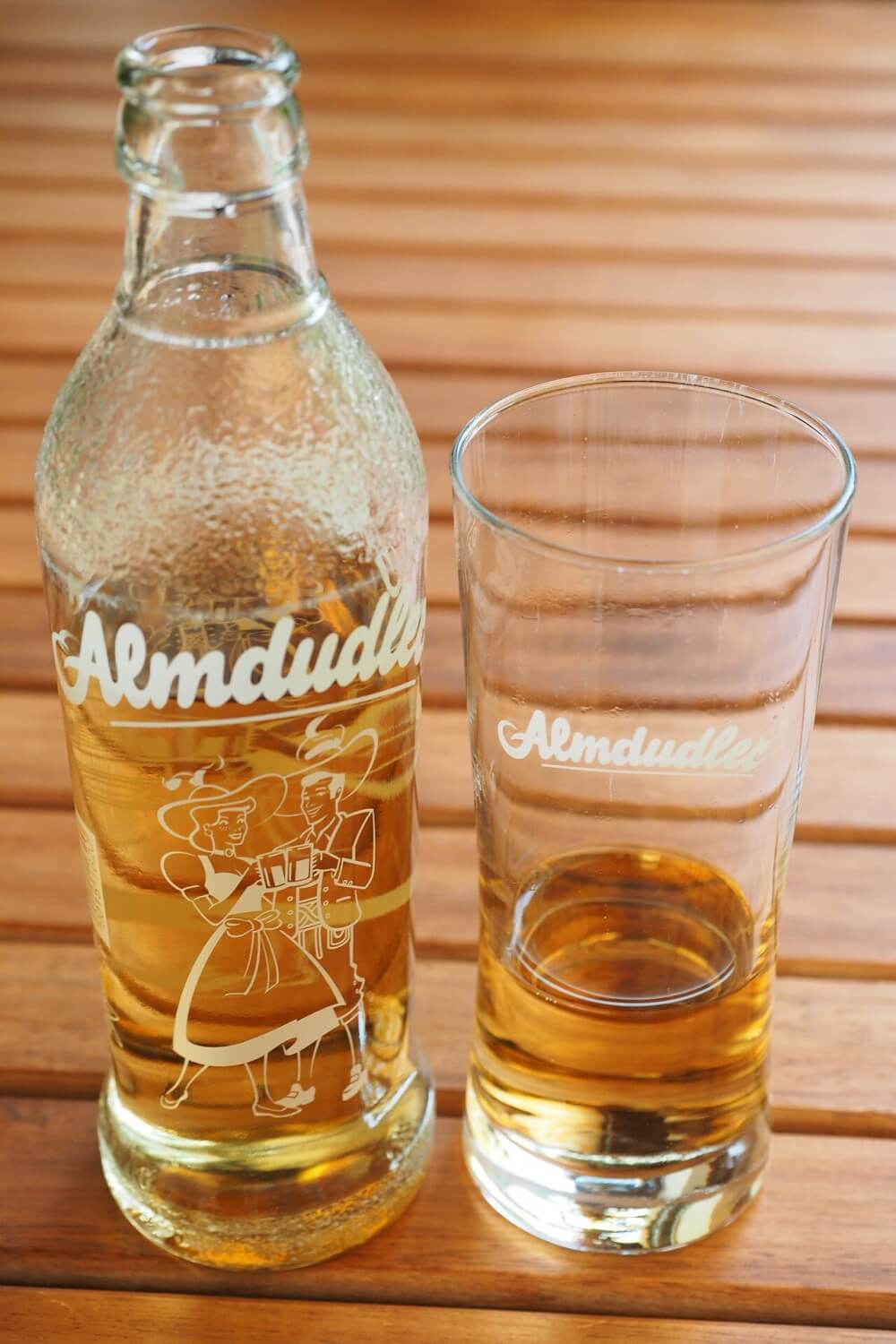
22. Don’t order schnitzel with sauce
A proper Austrian schnitzel requires little more than a quick squeeze of lemon juice. Anything more is often considered akin to sacrilege, so keep that in mind before your slather your schnitzel in mushroom sauce (which I fear to admit was actually a common thing I did in Germany).
And for my fellow Sound of Music fans, no, sadly ‘schnitzel with noodles’ is not a thing. Why is it in the song then? I imagine it’s likely because few things rhyme with “potato salad”.
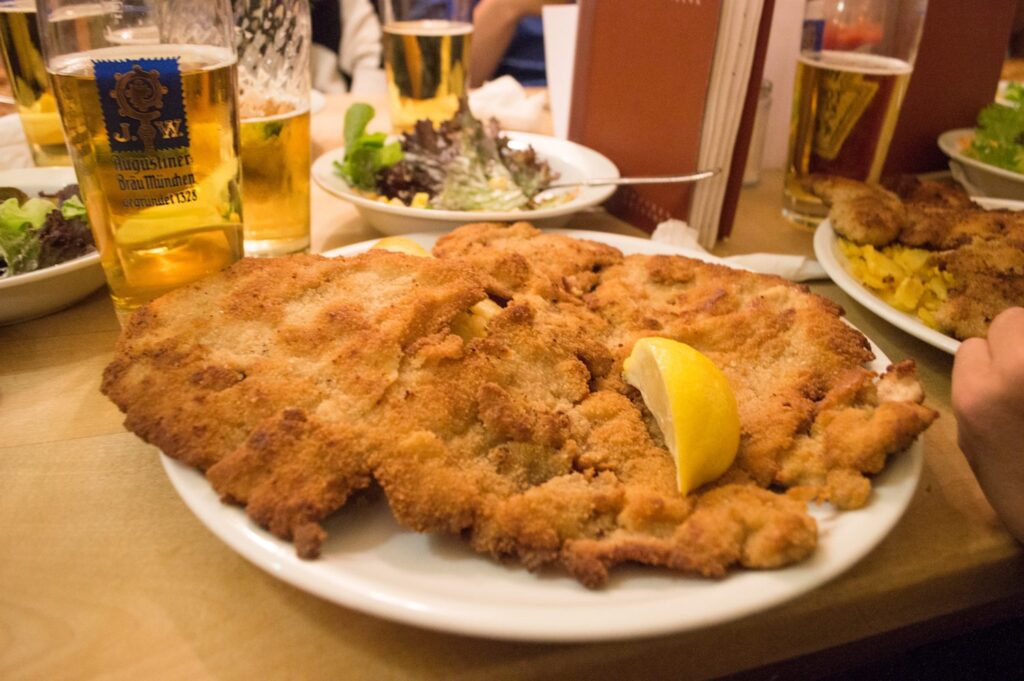
23. Bring cash
While many more places accept card payments these days in Austria, paying with cash is often still the norm, especially for smaller purchases, so having cash is always a good idea, preferably in smaller denominations like 50 euro bills or smaller.
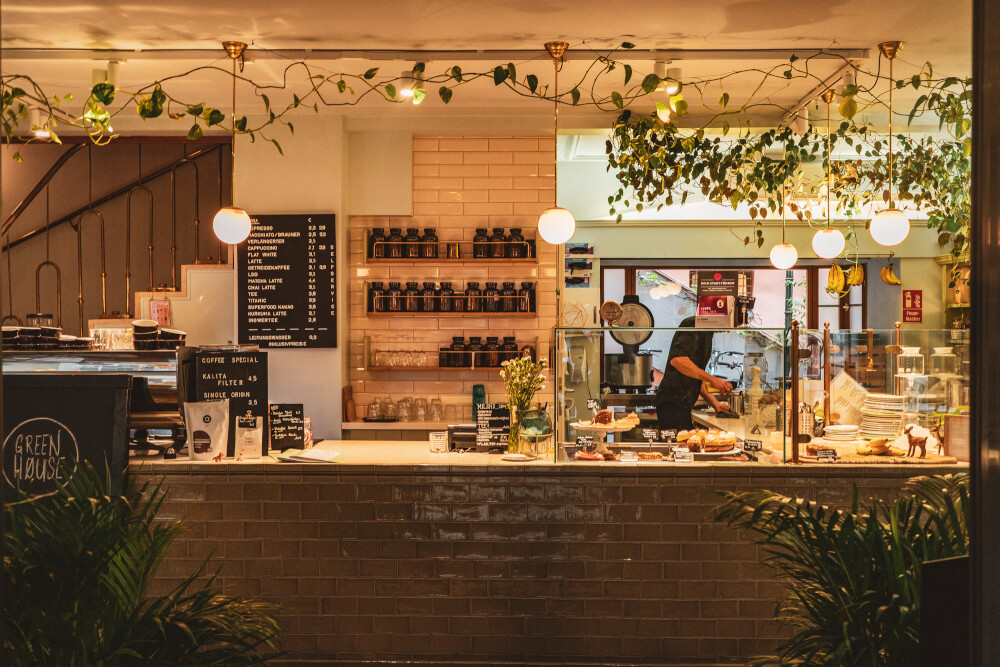
24. Prepare to pay for public bathrooms
Another important Austria travel tip is to bring coins with you wherever you go.
That’s because public bathrooms usually charge a small fee of 50 cents or a euro, so make sure you have some coins with you in case of an emergency.

25. Do not jaywalk
In Austria, the only crime worse than saucing up your schnitzel is crossing the street when you’re not supposed to.
No – really – jaywalking is not only illegal in Austria, it’s actually enforced (albeit kind of randomly), so err on the side of caution and avoid it if possible.
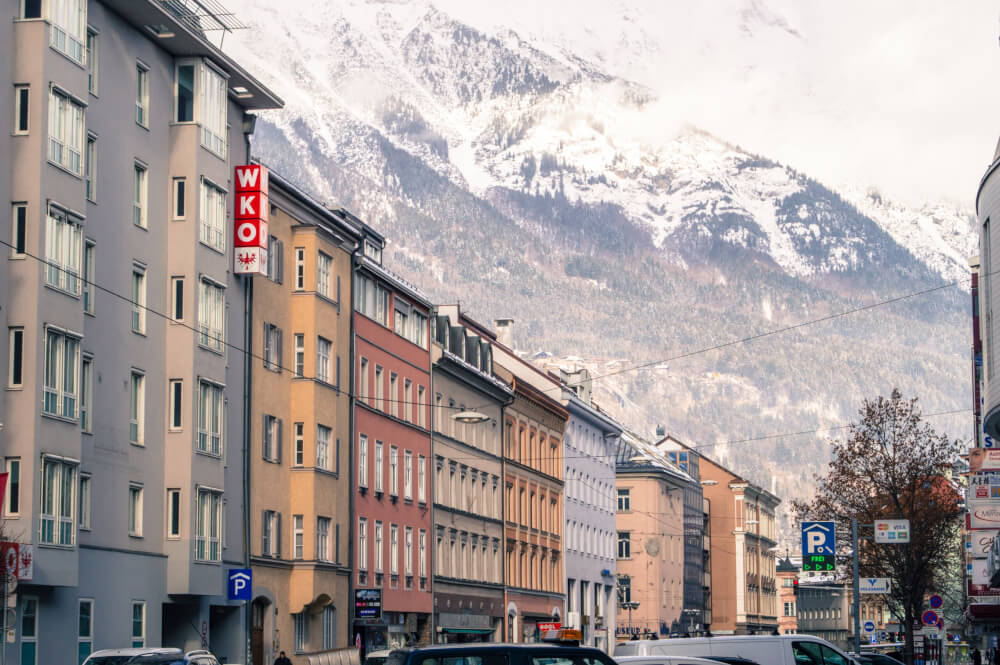
26. Remember that most shops are closed on Sundays
Last but not least, a very important Austria travel tip if your visit coincides with a Sunday is that Sundays are considered a day of rest in Austria so shops (including grocery stores) are closed.
That said, be sure to stock up on any shopping before Sunday, although in a pinch, bakeries, restaurants, gas stations and shops in transit hubs will usually still be open.

I hope this list of Austria travel tips was helpful!
If you’re here after all those Austrian travel tips, congrats – I’m beyond proud of you! Hopefully by now, you’ll feel much more prepared for your big Austria trip, but if you have any more questions, let me know in the comments.
My Go-To Travel Favourites:
🧳 Eagle Creek: My favourite packing cubes
💳 Wise: For FREE travel friendly credit cards
🍯 Airalo: My go-to eSIM
🏨 Booking.com: For searching hotels
📷 Sony A7IV: My (amazing) camera
✈️ Google Flights : For finding flight deals
🌎 WorldNomads: For travel insurance
🎉 GetYourGuide: For booking activities
Leave a Comment Cancel reply
By using this form you agree with the storage and handling of your data by this website. *
Security Alert May 17, 2024
Worldwide caution, update may 10, 2024, information for u.s. citizens in the middle east.
- Travel Advisories |
- Contact Us |
- MyTravelGov |
Find U.S. Embassies & Consulates
Travel.state.gov, congressional liaison, special issuance agency, u.s. passports, international travel, intercountry adoption, international parental child abduction, records and authentications, popular links, travel advisories, mytravelgov, stay connected, legal resources, legal information, info for u.s. law enforcement, replace or certify documents.
Share this page:
Austria Travel Advisory
Travel advisory july 26, 2023, austria - level 1: exercise normal precautions.
Reissued with obsolete COVID-19 page links removed.
Exercise normal precautions in Austria.
Read the country information page for additional information on travel to Austria.
If you decide to travel to Austria:
- Enroll in the Smart Traveler Enrollment Program ( STEP ) to receive Alerts and make it easier to locate you in an emergency.
- Follow the Department of State on Facebook and Twitter .
- Review the Country Security Report for Austria.
- Visit the CDC page for the latest Travel Health Information related to your travel.
- Prepare a contingency plan for emergency situations. Review the Traveler’s Checklist .
Travel Advisory Levels
Assistance for u.s. citizens, austria map, search for travel advisories, external link.
You are about to leave travel.state.gov for an external website that is not maintained by the U.S. Department of State.
Links to external websites are provided as a convenience and should not be construed as an endorsement by the U.S. Department of State of the views or products contained therein. If you wish to remain on travel.state.gov, click the "cancel" message.
You are about to visit:
We’re sorry, this site is currently experiencing technical difficulties. Please try again in a few moments. Exception: request blocked
You are using an outdated browser. Upgrade your browser today or install Google Chrome Frame to better experience this site.
Austria Traveler View
Travel health notices, vaccines and medicines, non-vaccine-preventable diseases, stay healthy and safe.
- Packing List
After Your Trip
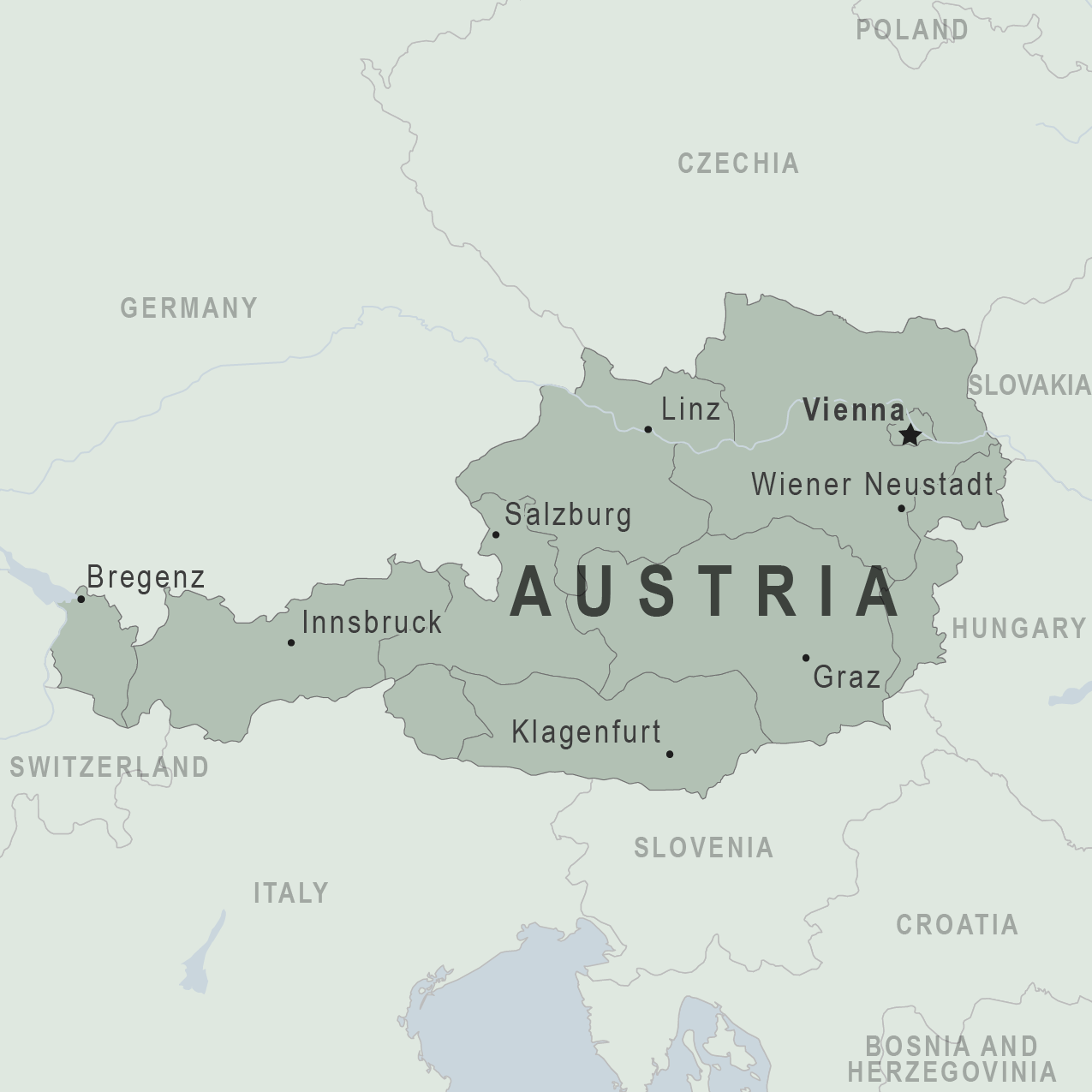
Be aware of current health issues in Austria. Learn how to protect yourself.
Level 1 Practice Usual Precautions
- Updated Global Measles May 28, 2024 Many international destinations are reporting increased numbers of cases of measles. Destination List: Afghanistan, Angola, Armenia, Austria, Azerbaijan, Belarus, Benin, Burkina Faso, Burundi, Cameroon, Central African Republic, Chad, Côte d'Ivoire (Ivory Coast), Democratic Republic of the Congo, Djibouti, Equatorial Guinea, Ethiopia, Gabon, Ghana, India, Indonesia, Kazakhstan, Kyrgyzstan, Lebanon, Liberia, Libya, Malaysia, Mauritania, Nepal, Niger, Nigeria, Pakistan, Philippines, Qatar, Republic of South Sudan, Republic of the Congo, Romania, Russia, Senegal, Somalia, Sri Lanka, Sudan, Syria, Tajikistan, Togo, Turkey, United Arab Emirates, Uzbekistan, Yemen, Zambia
⇧ Top
Check the vaccines and medicines list and visit your doctor at least a month before your trip to get vaccines or medicines you may need. If you or your doctor need help finding a location that provides certain vaccines or medicines, visit the Find a Clinic page.
Routine vaccines
Recommendations.
Make sure you are up-to-date on all routine vaccines before every trip. Some of these vaccines include
- Chickenpox (Varicella)
- Diphtheria-Tetanus-Pertussis
- Flu (influenza)
- Measles-Mumps-Rubella (MMR)
Immunization schedules
All eligible travelers should be up to date with their COVID-19 vaccines. Please see Your COVID-19 Vaccination for more information.
COVID-19 vaccine
Hepatitis B
Recommended for unvaccinated travelers younger than 60 years old traveling to Austria. Unvaccinated travelers 60 years and older may get vaccinated before traveling to Austria.
Hepatitis B - CDC Yellow Book
Dosing info - Hep B
Cases of measles are on the rise worldwide. Travelers are at risk of measles if they have not been fully vaccinated at least two weeks prior to departure, or have not had measles in the past, and travel internationally to areas where measles is spreading.
All international travelers should be fully vaccinated against measles with the measles-mumps-rubella (MMR) vaccine, including an early dose for infants 6–11 months, according to CDC’s measles vaccination recommendations for international travel .
Measles (Rubeola) - CDC Yellow Book
Austria is free of dog rabies. However, rabies may still be present in wildlife species, particularly bats. CDC recommends rabies vaccination before travel only for people working directly with wildlife. These people may include veterinarians, animal handlers, field biologists, or laboratory workers working with specimens from mammalian species.
Rabies - CDC Yellow Book
Tick-borne Encephalitis
For travelers moving or traveling to TBE-endemic areas
TBE vaccine is recommended for persons who will have extensive exposure to ticks based on their planned outdoor activities and itinerary.
TBE vaccine may be considered for persons who might engage in outdoor activities in areas ticks are likely to be found.
Tick-borne Encephalitis - CDC Yellow Book
Avoid contaminated water
Leptospirosis
How most people get sick (most common modes of transmission)
- Touching urine or other body fluids from an animal infected with leptospirosis
- Swimming or wading in urine-contaminated fresh water, or contact with urine-contaminated mud
- Drinking water or eating food contaminated with animal urine
- Avoid contaminated water and soil
Clinical Guidance
Airborne & droplet.
- Breathing in air or accidentally eating food contaminated with the urine, droppings, or saliva of infected rodents
- Bite from an infected rodent
- Less commonly, being around someone sick with hantavirus (only occurs with Andes virus)
- Avoid rodents and areas where they live
- Avoid sick people
Tuberculosis (TB)
- Breathe in TB bacteria that is in the air from an infected and contagious person coughing, speaking, or singing.
Learn actions you can take to stay healthy and safe on your trip. Vaccines cannot protect you from many diseases in Austria, so your behaviors are important.
Eat and drink safely
Food and water standards around the world vary based on the destination. Standards may also differ within a country and risk may change depending on activity type (e.g., hiking versus business trip). You can learn more about safe food and drink choices when traveling by accessing the resources below.
- Choose Safe Food and Drinks When Traveling
- Water Treatment Options When Hiking, Camping or Traveling
- Global Water, Sanitation and Hygiene | Healthy Water
- Avoid Contaminated Water During Travel
You can also visit the Department of State Country Information Pages for additional information about food and water safety.
Prevent bug bites
Although Austria is an industrialized country, bug bites here can still spread diseases. Just as you would in the United States, try to avoid bug bites while spending time outside or in wooded areas.
What can I do to prevent bug bites?
- Cover exposed skin by wearing long-sleeved shirts, long pants, and hats.
- Use an appropriate insect repellent (see below).
- Consider using permethrin-treated clothing and gear if spending a lot of time outside. Do not use permethrin directly on skin.

What type of insect repellent should I use?
- FOR PROTECTION AGAINST TICKS AND MOSQUITOES: Use a repellent that contains 20% or more DEET for protection that lasts up to several hours.
- Picaridin (also known as KBR 3023, Bayrepel, and icaridin)
- Oil of lemon eucalyptus (OLE) or para-menthane-diol (PMD)
- 2-undecanone
- Always use insect repellent as directed.
What should I do if I am bitten by bugs?
- Avoid scratching bug bites, and apply hydrocortisone cream or calamine lotion to reduce the itching.
- Check your entire body for ticks after outdoor activity. Be sure to remove ticks properly.
What can I do to avoid bed bugs?
Although bed bugs do not carry disease, they are an annoyance. See our information page about avoiding bug bites for some easy tips to avoid them. For more information on bed bugs, see Bed Bugs .
For more detailed information on avoiding bug bites, see Avoid Bug Bites .
Stay safe outdoors
If your travel plans in Austria include outdoor activities, take these steps to stay safe and healthy during your trip:
- Stay alert to changing weather conditions and adjust your plans if conditions become unsafe.
- Prepare for activities by wearing the right clothes and packing protective items, such as bug spray, sunscreen, and a basic first aid kit.
- Consider learning basic first aid and CPR before travel. Bring a travel health kit with items appropriate for your activities.
- If you are outside for many hours in the heat, eat salty snacks and drink water to stay hydrated and replace salt lost through sweating.
- Protect yourself from UV radiation : use sunscreen with an SPF of at least 15, wear protective clothing, and seek shade during the hottest time of day (10 a.m.–4 p.m.).
- Be especially careful during summer months and at high elevation. Because sunlight reflects off snow, sand, and water, sun exposure may be increased during activities like skiing, swimming, and sailing.
- Very cold temperatures can be dangerous. Dress in layers and cover heads, hands, and feet properly if you are visiting a cold location.
Stay safe around water
- Swim only in designated swimming areas. Obey lifeguards and warning flags on beaches.
- Do not dive into shallow water.
- Avoid swallowing water when swimming. Untreated water can carry germs that make you sick.
- Practice safe boating—follow all boating safety laws, do not drink alcohol if you are driving a boat, and always wear a life jacket.
Keep away from animals
Most animals avoid people, but they may attack if they feel threatened, are protecting their young or territory, or if they are injured or ill. Animal bites and scratches can lead to serious diseases such as rabies.
Follow these tips to protect yourself:
- Do not touch or feed any animals you do not know.
- Do not allow animals to lick open wounds, and do not get animal saliva in your eyes or mouth.
- Avoid rodents and their urine and feces.
- Traveling pets should be supervised closely and not allowed to come in contact with local animals.
- If you wake in a room with a bat, seek medical care immediately. Bat bites may be hard to see.
All animals can pose a threat, but be extra careful around dogs, bats, monkeys, sea animals such as jellyfish, and snakes. If you are bitten or scratched by an animal, immediately:
- Wash the wound with soap and clean water.
- Go to a doctor right away.
- Tell your doctor about your injury when you get back to the United States.
Reduce your exposure to germs
Follow these tips to avoid getting sick or spreading illness to others while traveling:
- Wash your hands often, especially before eating.
- If soap and water aren’t available, clean hands with hand sanitizer (containing at least 60% alcohol).
- Don’t touch your eyes, nose, or mouth. If you need to touch your face, make sure your hands are clean.
- Cover your mouth and nose with a tissue or your sleeve (not your hands) when coughing or sneezing.
- Try to avoid contact with people who are sick.
- If you are sick, stay home or in your hotel room, unless you need medical care.
Avoid sharing body fluids
Diseases can be spread through body fluids, such as saliva, blood, vomit, and semen.
Protect yourself:
- Use latex condoms correctly.
- Do not inject drugs.
- Limit alcohol consumption. People take more risks when intoxicated.
- Do not share needles or any devices that can break the skin. That includes needles for tattoos, piercings, and acupuncture.
- If you receive medical or dental care, make sure the equipment is disinfected or sanitized.
Know how to get medical care while traveling
Plan for how you will get health care during your trip, should the need arise:
- Carry a list of local doctors and hospitals at your destination.
- Review your health insurance plan to determine what medical services it would cover during your trip. Consider purchasing travel health and medical evacuation insurance for things your regular insurance will not cover.
- Carry a card that identifies, in the local language, your blood type, chronic conditions or serious allergies, and the generic names of any medicines you take.
- Bring copies of your prescriptions for medicine and for eye glasses and contact lenses.
- Some prescription drugs may be illegal in other countries. Call Austria’s embassy to verify that all of your prescription(s) are legal to bring with you.
- Bring all the medicines (including over-the-counter medicines) you think you might need during your trip, including extra in case of travel delays. Ask your doctor to help you get prescriptions filled early if you need to.
Many foreign hospitals and clinics are accredited by the Joint Commission International. A list of accredited facilities is available at their website ( www.jointcommissioninternational.org ).
Select safe transportation
Motor vehicle crashes are the #1 killer of healthy US citizens in foreign countries.
Be smart when you are traveling on foot.
- Use sidewalks and marked crosswalks.
- Pay attention to the traffic around you, especially in crowded areas.
- Remember, people on foot do not always have the right of way in other countries.
Riding/Driving
Choose a safe vehicle.
- Choose official taxis or public transportation, such as trains and buses.
- Make sure there are seatbelts.
- Avoid overcrowded, overloaded, top-heavy buses and minivans.
- Avoid riding on motorcycles or motorbikes, especially motorbike taxis. (Many crashes are caused by inexperienced motorbike drivers.)
- Choose newer vehicles—they may have more safety features, such as airbags, and be more reliable.
- Choose larger vehicles, which may provide more protection in crashes.
Think about the driver.
- Do not drive after drinking alcohol or ride with someone who has been drinking.
- Consider hiring a licensed, trained driver familiar with the area.
- Arrange payment before departing.
Follow basic safety tips.
- Wear a seatbelt at all times.
- Sit in the back seat of cars and taxis.
- When on motorbikes or bicycles, always wear a helmet. (Bring a helmet from home, if needed.)
- Do not use a cell phone or text while driving (illegal in many countries).
- Travel during daylight hours only, especially in rural areas.
- If you choose to drive a vehicle in Austria, learn the local traffic laws and have the proper paperwork.
- Get any driving permits and insurance you may need. Get an International Driving Permit (IDP). Carry the IDP and a US-issued driver's license at all times.
- Check with your auto insurance policy's international coverage, and get more coverage if needed. Make sure you have liability insurance.
- Avoid using local, unscheduled aircraft.
- If possible, fly on larger planes (more than 30 seats); larger airplanes are more likely to have regular safety inspections.
- Try to schedule flights during daylight hours and in good weather.
Helpful Resources
Road Safety Overseas (Information from the US Department of State): Includes tips on driving in other countries, International Driving Permits, auto insurance, and other resources.
The Association for International Road Travel has country-specific Road Travel Reports available for most countries for a minimal fee.
Maintain personal security
Use the same common sense traveling overseas that you would at home, and always stay alert and aware of your surroundings.
Before you leave
- Research your destination(s), including local laws, customs, and culture.
- Monitor travel advisories and alerts and read travel tips from the US Department of State.
- Enroll in the Smart Traveler Enrollment Program (STEP) .
- Leave a copy of your itinerary, contact information, credit cards, and passport with someone at home.
- Pack as light as possible, and leave at home any item you could not replace.
While at your destination(s)
- Carry contact information for the nearest US embassy or consulate .
- Carry a photocopy of your passport and entry stamp; leave the actual passport securely in your hotel.
- Follow all local laws and social customs.
- Do not wear expensive clothing or jewelry.
- Always keep hotel doors locked, and store valuables in secure areas.
- If possible, choose hotel rooms between the 2nd and 6th floors.
Healthy Travel Packing List
Use the Healthy Travel Packing List for Austria for a list of health-related items to consider packing for your trip. Talk to your doctor about which items are most important for you.
Why does CDC recommend packing these health-related items?
It’s best to be prepared to prevent and treat common illnesses and injuries. Some supplies and medicines may be difficult to find at your destination, may have different names, or may have different ingredients than what you normally use.
If you are not feeling well after your trip, you may need to see a doctor. If you need help finding a travel medicine specialist, see Find a Clinic . Be sure to tell your doctor about your travel, including where you went and what you did on your trip. Also tell your doctor if you were bitten or scratched by an animal while traveling.
For more information on what to do if you are sick after your trip, see Getting Sick after Travel .
Map Disclaimer - The boundaries and names shown and the designations used on maps do not imply the expression of any opinion whatsoever on the part of the Centers for Disease Control and Prevention concerning the legal status of any country, territory, city or area or of its authorities, or concerning the delimitation of its frontiers or boundaries. Approximate border lines for which there may not yet be full agreement are generally marked.
Other Destinations
If you need help finding travel information:
Message & data rates may apply. CDC Privacy Policy
File Formats Help:
- Adobe PDF file
- Microsoft PowerPoint file
- Microsoft Word file
- Microsoft Excel file
- Audio/Video file
- Apple Quicktime file
- RealPlayer file
- Zip Archive file
Exit Notification / Disclaimer Policy
- The Centers for Disease Control and Prevention (CDC) cannot attest to the accuracy of a non-federal website.
- Linking to a non-federal website does not constitute an endorsement by CDC or any of its employees of the sponsors or the information and products presented on the website.
- You will be subject to the destination website's privacy policy when you follow the link.
- CDC is not responsible for Section 508 compliance (accessibility) on other federal or private website.

- The Perfect 10 Day Austria Road Trip Itinerary
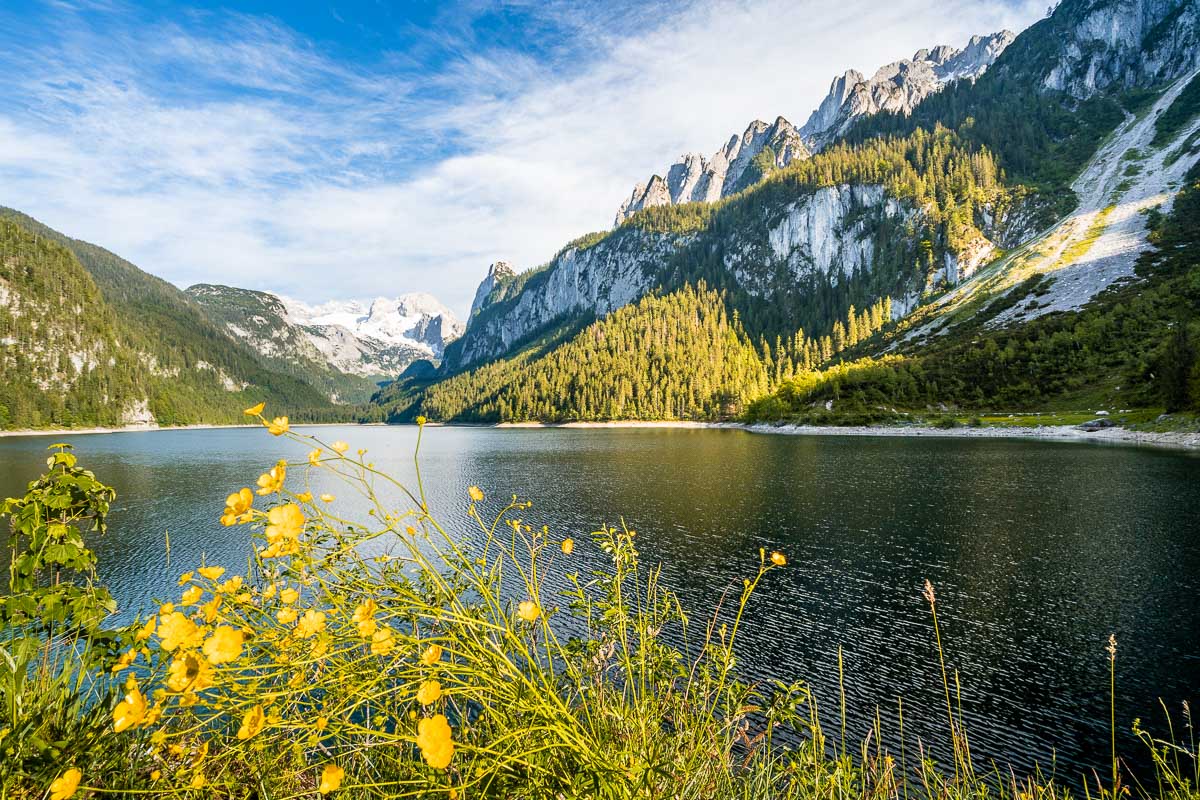
With its outstanding natural beauty and sophisticated cities that fuse old with new, Austria is one of the most enchanting countries to visit in Europe. As there are so many pristine lakes, rivers, and mountain ranges to explore in between the urban areas, the best way to experience the place has to be with an epic Austrian road trip.
Renting a car and hitting the road in Austria gives you so much freedom to pick and choose which places you get to visit. No matter where you drive, you will find yourself surrounded by incredible landscapes the whole time, without even needing to leave the car.
If you’re not sure where to begin, then my 10 day Austria road trip itinerary is here to help! This guide contains all the practical information you need as well as the most impressive destinations that let you experience a bit of everything that Austria is known for.
* Disclosure: This post contains a few affiliate links, which means I may receive a small commission, at no cost to you, if you make a purchase through my link. *
No time to read now? Pin it for later!
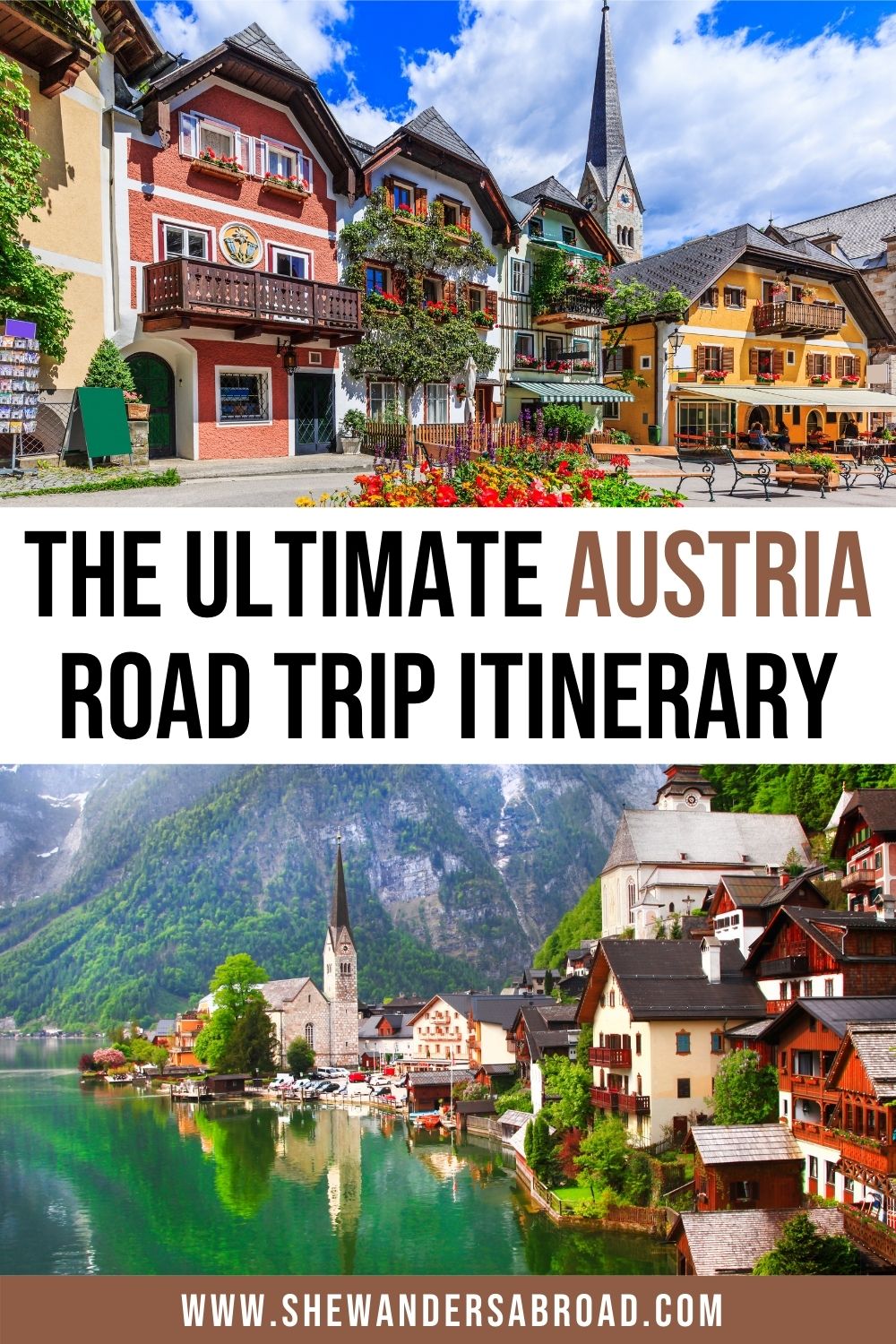
Table of Contents
Useful Info for Your Austria Road Trip
How to get to austria .
This Austria road trip itinerary is designed to start in either Vienna or Innsbruck. My guide starts in the east, in Vienna, and concludes in the west, at Innsbruck. However, you can flip it and do it in reverse if that suits you better!
Both Vienna and Innsbruck are served by an international airport. As the Austrian capital and largest city, Vienna International Airport (Flughafen Wien) connects nonstop to the vast majority of European cities. You can also find direct flights from the US, Canada, the Middle East, and some Asian cities.
As a smaller airport, there are fewer direct flights to Innsbruck Airport (Flughafen Innsbruck). However, you can fly nonstop from other Austrian airports as well as from a select number of European destinations including Germany, the United Kingdom, and the Netherlands.
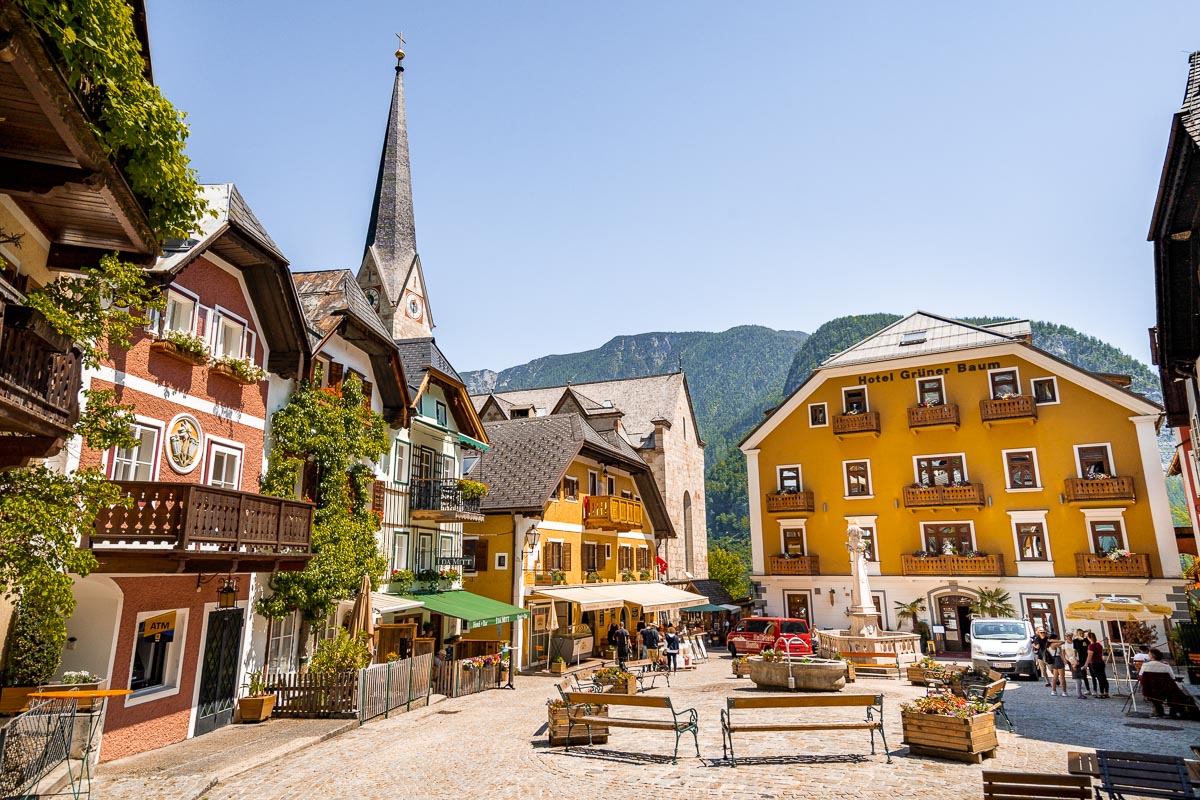
Best time to visit Austria
Austria experiences the four distinct seasons as per the Northern Hemisphere and other Central European nations, so the best time to visit Austria really depends on the type of experience you are after. The climate and temperatures differ depending on the altitude, so during the course of this road trip in Austria, you should expect the weather to fluctuate somewhat.
The peak travel season is the summer months of July and August when the temperatures are at their hottest, reaching typically 27-29°C (80-84°F) or sometimes even higher. Meanwhile, winter brings snowfall to the mountains and sees the ski resorts open up for the season.
In terms of the best time to visit Austria as part of a road trip, the shoulder seasons of late spring and autumn are the most pleasant overall. Temperatures are at their most comfortable, you will have less competition for accommodation and parking space, and tours and hotels will be a fraction cheaper. And to be honest, when you’re up in the mountains you will likely still see dustings of snow on the peaks.
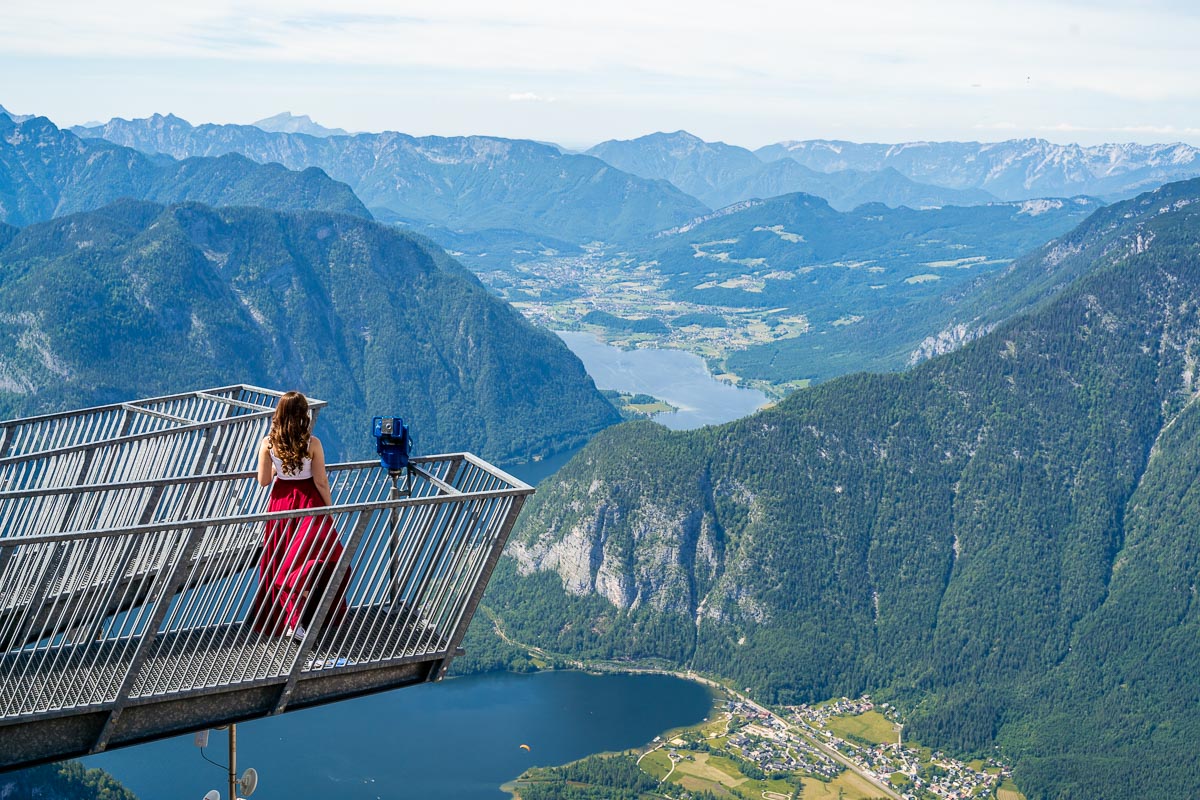
Car rental in Austria
No matter which airport you fly to (Vienna or Innsbruck), there are car rental agencies located at both of the airports and in the cities themselves.
I recommend booking your rental well in advance to get the best deals. Prices can be pretty inflated during the summer months so the earlier you book, the better deals you can snag.
Driving tips for Austria
Driving in Austria is a doddle, providing that you follow the rules and understand the local road rules. Naturally, you must wear a seatbelt at all times, not drive while under the influence, or when using your mobile phone. Here are a few more driving tips for your Austria road trip itinerary:
- During the summer season and warmer months, Austrian roads are a joy to drive. They are paved and well maintained. However, between December and March, snow and ice is likely at higher altitudes so you will need to ensure that your rental is fitted with winter tires and that you have snow chains in the boot.
- To drive in Austria, you must possess a full driving license from your home country as well as an International Driver’s Permit (IDP). You will need to arrange this documentation prior to arriving in the country to start your Austria road trip. If your driving license was issued by one of the member states of the European Economic Area, you will not need the IDP as your license is valid in Austria.
- Traffic rules and regulations are comparable to other European countries. In general, the speed limit is 100 km/h (62 mph) on Bundesstraße (freeways) and S Roads (expressways) and 130 km/h (81 mph) on Autobahn (highways). When driving through residential areas and inner cities, the speed limit is usually 50 km/h (31 mph), but you should stay alert for signs.
- In order to drive on the Austrian Autobahn and S Roads, your rental must display a vignette toll sticker. If your rental car doesn’t have one, you must purchase a vignette before hitting the highways. For this Austria road trip itinerary, purchasing a 10-day vignette is the best option which costs €9.90. You can buy the vignette at any of the petrol stations and then stick it to your windshield.
- Driving with your headlights on is optional during daylight hours and compulsory at night in Austria.
- ÖAMTC and ARBÖ are the two major breakdown assistance services in Austria and both operate 24/7. The numbers are 120 and 123, respectively. As a non-member, you will be liable to pay a fee if you use this service.
- This itinerary for Austria includes a generous amount of hiking so it’s really important to have some sturdy hiking boots in your rental that you can throw on whenever you reach the trails. You should also have a significant stash of water ready for the hikes.
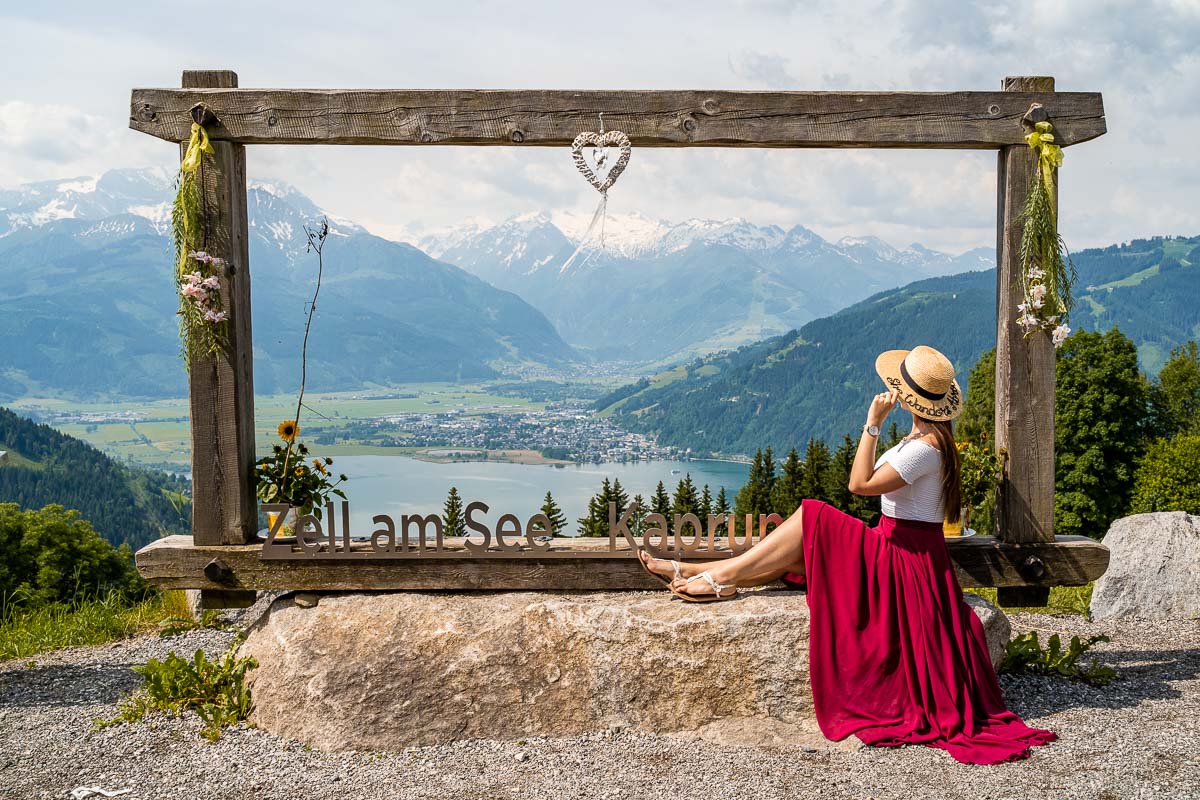
Overview of Your 10 Day Austria Road Trip Itinerary
Breakdown of your 10 days in austria.
This is your itinerary at a glance, with details about where you will need to book accommodation for each of the 10 nights. Remember, you can do the route in reverse if it suits your travel plans better.
- Day 1-2: Two full days in Vienna (overnight in Vienna)
- Day 3: Grüner See, Admont Abbey Library, arriving in Hallstatt (overnight in Hallstatt)
- Day 4: Full day in Hallstatt (overnight in Hallstatt)
- Day 5: 5 Fingers Viewing Platform (Dachstein), Gosauseen, arriving in Salzburg (overnight in Salzburg)
- Day 6: Full day in Salzburg (overnight in Salzburg)
- Day 7: Gollinger Wasserfall, Bluntauseen, Hohenwerfen Castle, arriving in Zell am See (overnight in Zell am See)
- Day 8: Stausee Mooserboden, Sigmund-Thun Klamm, Alpine Coaster Maisiflitzer Kaprun, Mitterberghof Jausenstation (overnight in Zell am See)
- Day 9: Krimml Waterfalls, arriving in Mayrhofen (overnight in Mayrhofen)
- Day 10: Olpererhütte, Innsbruck (overnight in Innsbruck)
Map for your Austria road trip
Below you can find a customized map that includes all the locations you’re going to visit on this Austria road trip itinerary. I marked the different parts of the road trip with different colors so you can easily see which places you’re going to visit each day.
If you open up this post on your phone and you click on the bracket in the upper right corner of the map, it will automatically save this map to your Google Maps app so you can always have it with you. Super convenient, right?
Day 1-2: Vienna
Number one on your Austria itinerary is Vienna, the capital and largest city in the country, located in the northeast. The oldest part of the city and its most central district is the Innere Stadt, which is contained by a ring road.
Within this neighborhood, you will find the majority of the key attractions and majestic architecture, including Baroque palaces and gardens, museums, and concert halls. No wonder that Vienna is considered one of the most beautiful cities in Europe !
Vienna is synonymous with classical music and was the home of musical masters including Mozart and Beethoven so you will find numerous references and recitals in town.
Two days in Vienna is plenty of time to explore the major landmarks of this elegant city. You will not need a car for these two days as it’s easier to get around the city via public transport and walking so you can pick up your rental car after your two days in Vienna are over.
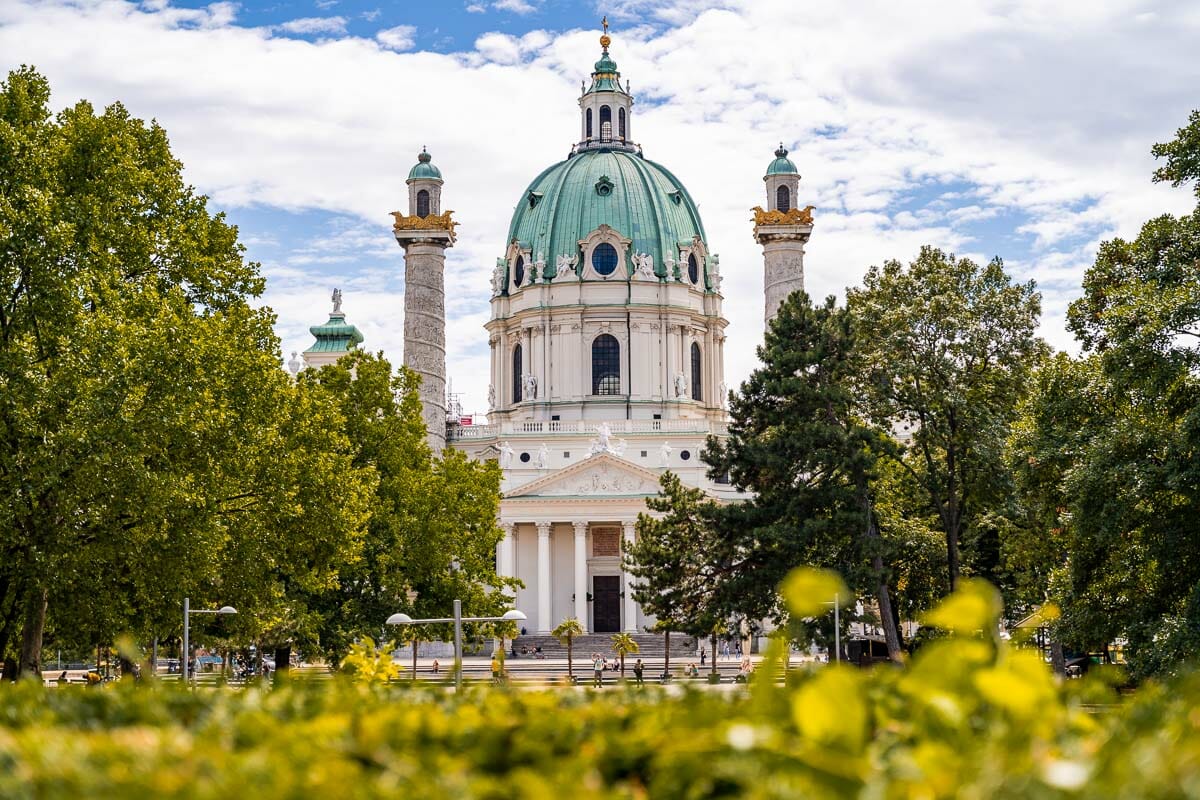
Where to stay in Vienna
If this is your first time visiting Vienna then I recommend staying in the Innere Stadt. Hotels are more expensive but deals can always be found. Alternatively, you can choose accommodation in one of the outlying neighborhoods and connect to the Old Town easily by metro.
Trendy Wieden has affordable accommodation which is convenient for seeing the sights featured on this road trip in Austria. Landstrasse, to the east of the Innere Stadt, is another alternative for budget hotels. As you will not pick up your rental until the third day, you don’t need to worry about finding a hotel with parking.
Below you can find my suggestions for the best places to stay in Vienna for 2 nights.
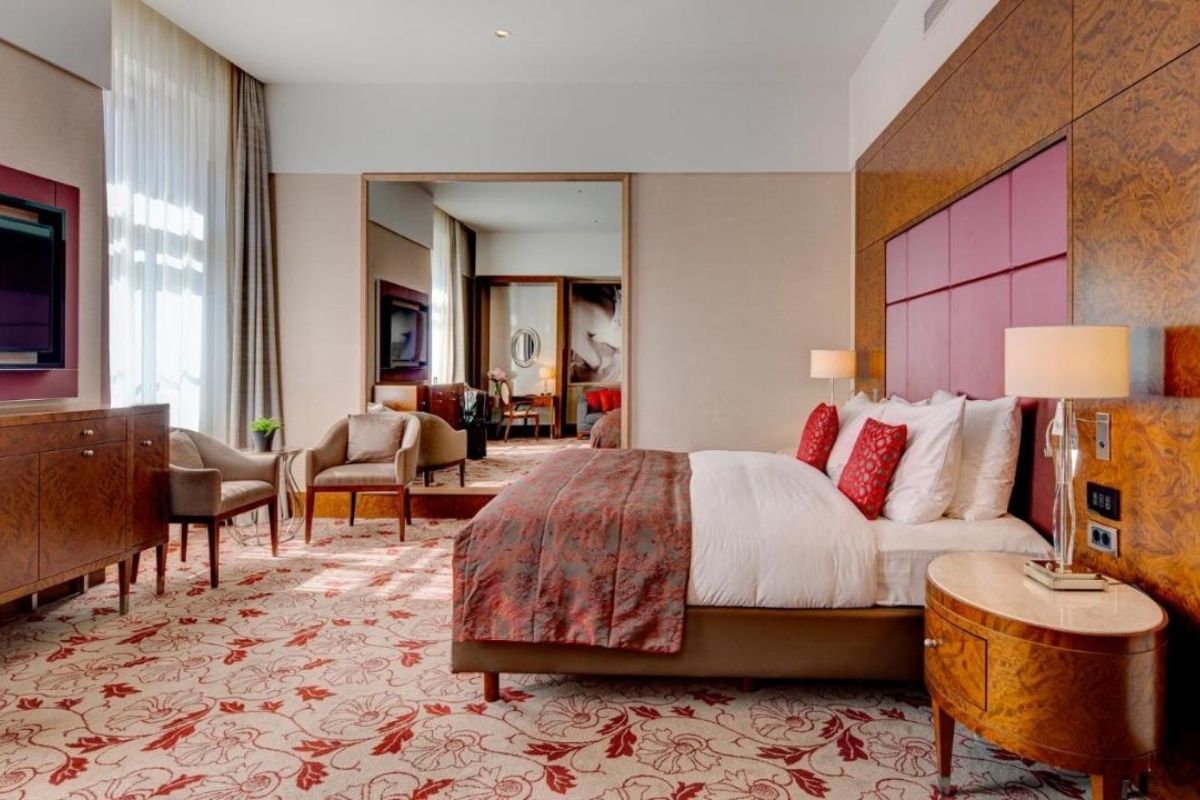
LUXURY – Palais Hansen Kempinski Vienna
Built as a hotel for the World Exhibition in Vienna in 1873, the luxurious Palais Hansen Kempinski Vienna can be found right on the famous Ringstraße boulevard in the heart of the city. The hotel features 2 restaurants, a bar, and an exclusive spa and fitness center.
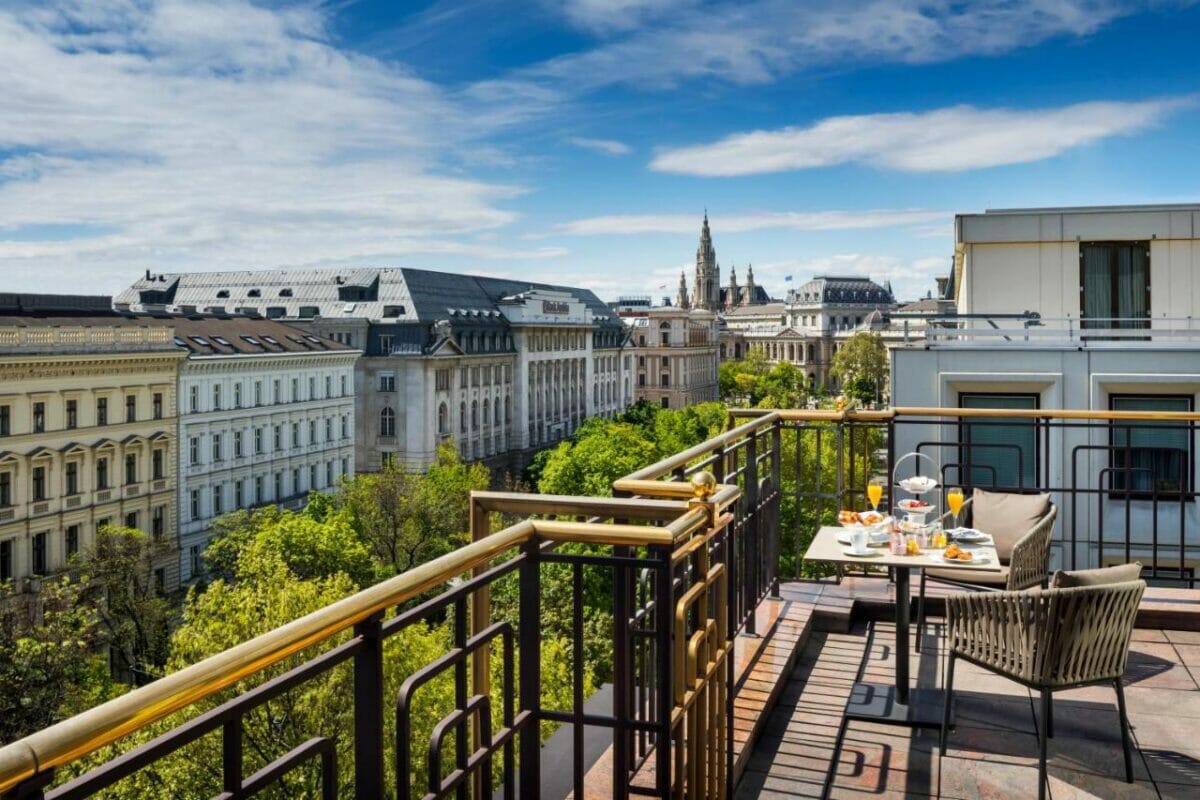
MID-RANGE – Hilton Vienna Plaza
Located on the historic Ringstraße in the Innere Stand, the city center of Vienna, Hilton Vienna Plaza combines modern and Art Déco design elements. The elegantly decorated rooms come with marble bathrooms and offer amazing views of the city from their large windows.
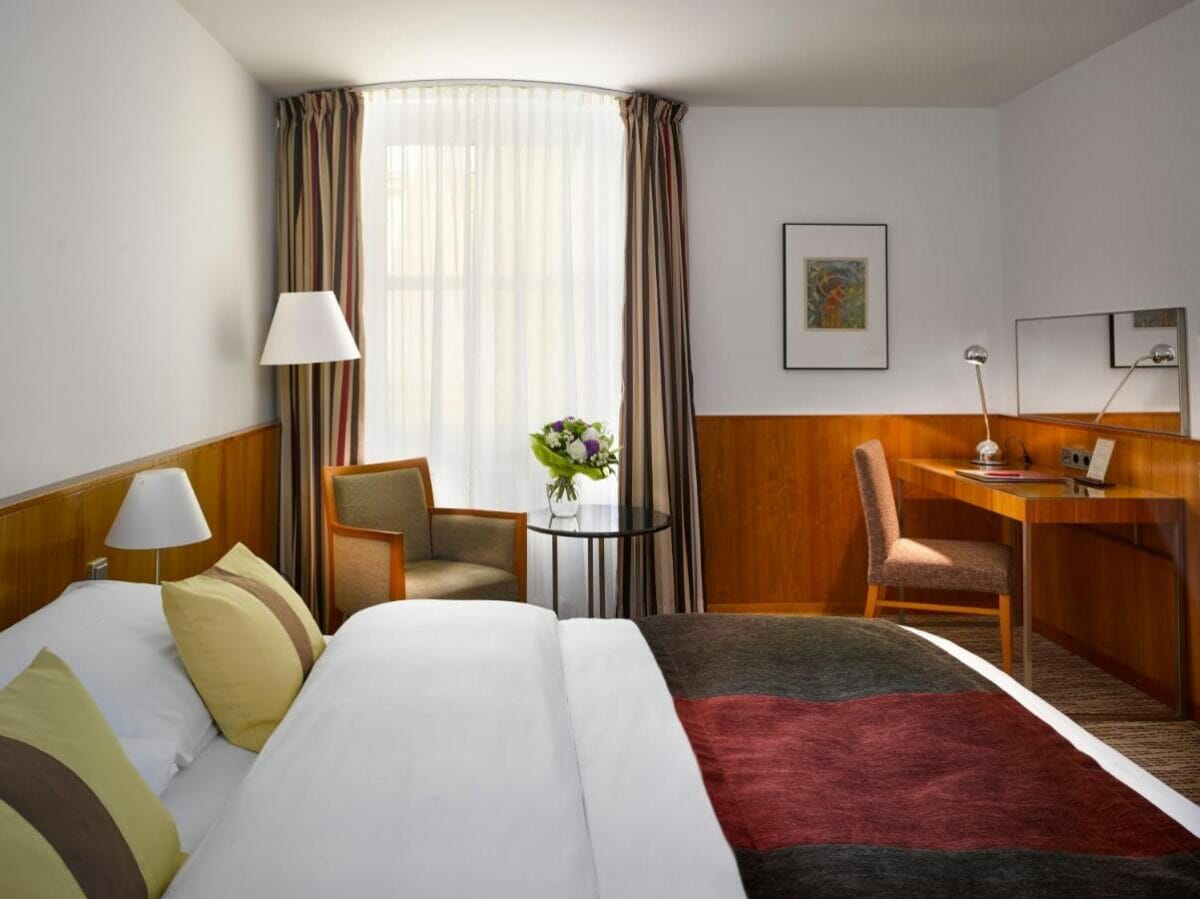
BUDGET – K+K Palais Hotel
Centrally located in the quiet part of Vienna’s city center, K+K Palais Hotel is a total steal. Boasting fully air-conditioned rooms and state-of-the-art amenities, the property is in close proximity to many major sights, such as the St. Stephen’s Cathedral.
Best things to do in Vienna
Explore the innere stadt.
Vienna’s old town is brimming with museums, monuments, and landmarks that you can explore on foot. Slip into your sneakers and spend a day touring the key sights.
Look out for the ornate Anker Clock, the commanding Rathaus (city hall), the manicured Volksgarten, and the Wiener Minoritenkirche which features a mosaic of Da Vinci’s Last Supper.
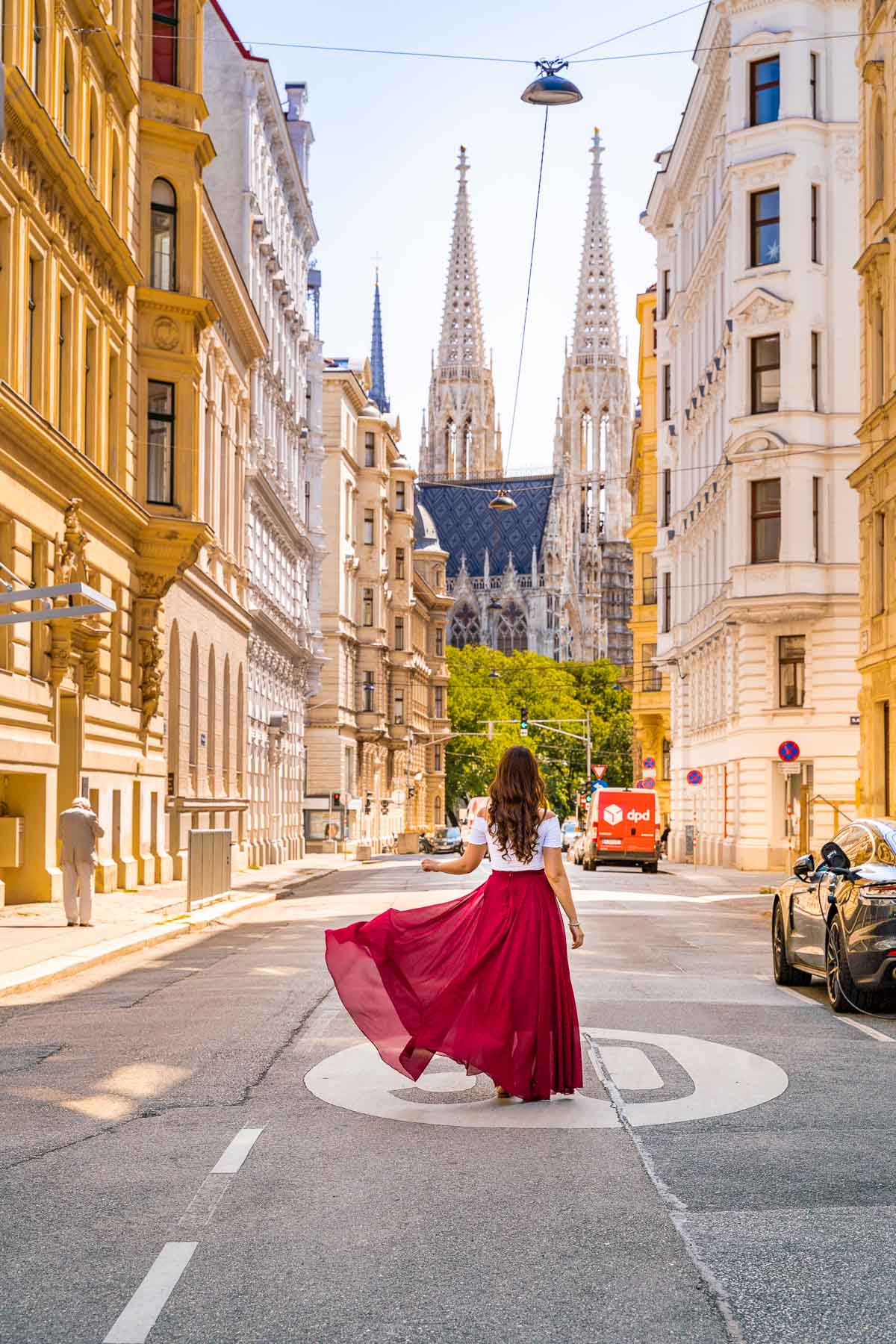
Hundertwasserhaus
Perhaps the most unusual building you’ll see during your Austria road trip, the Hundertwasserhaus was conceived by the artist Friedensreich Hundertwasser and architect Joseph Krawina in 1985.
The concept was to create a space in harmony with nature and highlights include the grass on the roof and the trees that grow freely through the floors. Thanks to its vibrant colors, it’s definitely one of the best Vienna Instagram spots !
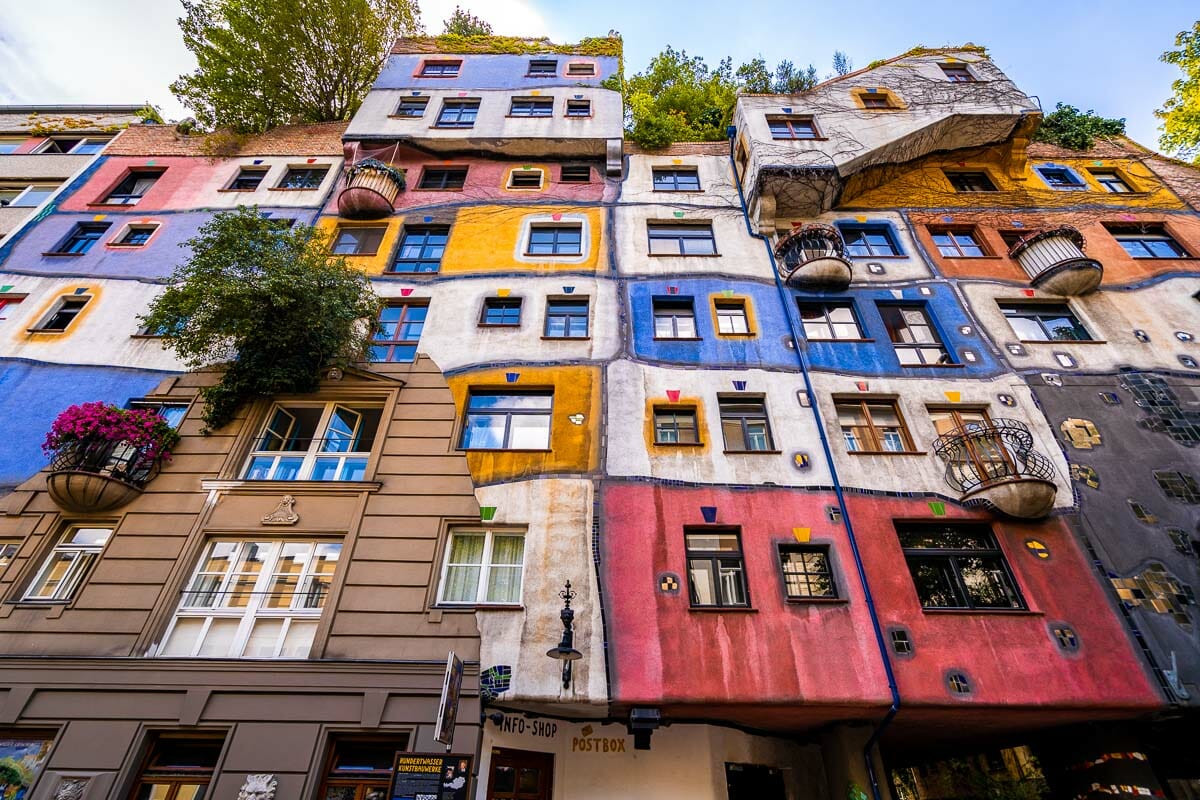
Classical concert
In a city famed for its lineage of classic music, you might want to book tickets to catch a show for yourself. There are various concert halls scattered throughout the Innere Stadt.
Once you’ve confirmed the dates for your itinerary for Austria, check out what’s on at the Wiener Musikverein, Wiener Konzerthaus, and the Vienna State Opera House . The main season runs from September to June.
Schönbrunn Palace
This 18th-century palace and gardens are located southwest of the Innere Stadt. Once the summer residence of the Habsburg royal family, this colossal complex is now the star attraction in Vienna. Queues are always long so I recommend booking a skip-the-line tour of Schönbrunn Palace to save time.
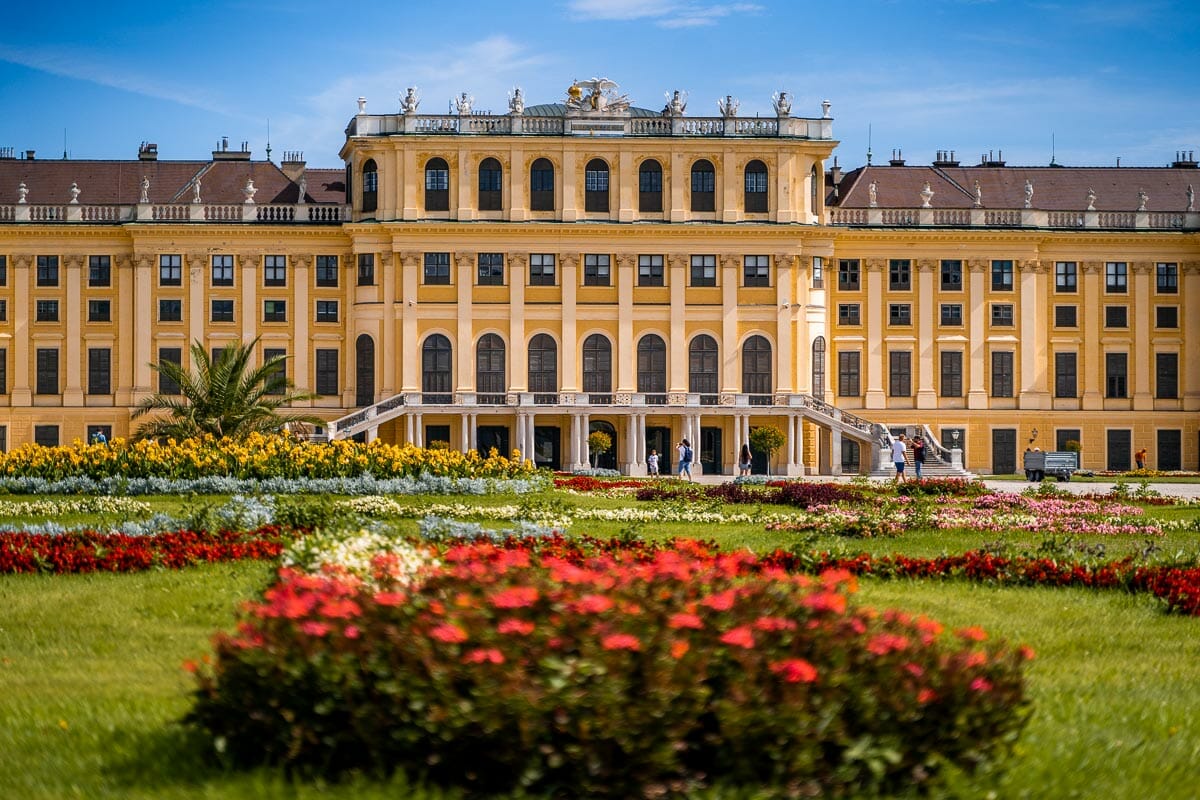
Hofburg Palace
Another palace for your list, this one was built during the 13th century and has been restored and expanded in the following centuries. Originally the winter home of the Austro-Hungarian Empire leaders, the property is now the office of the Austrian president.
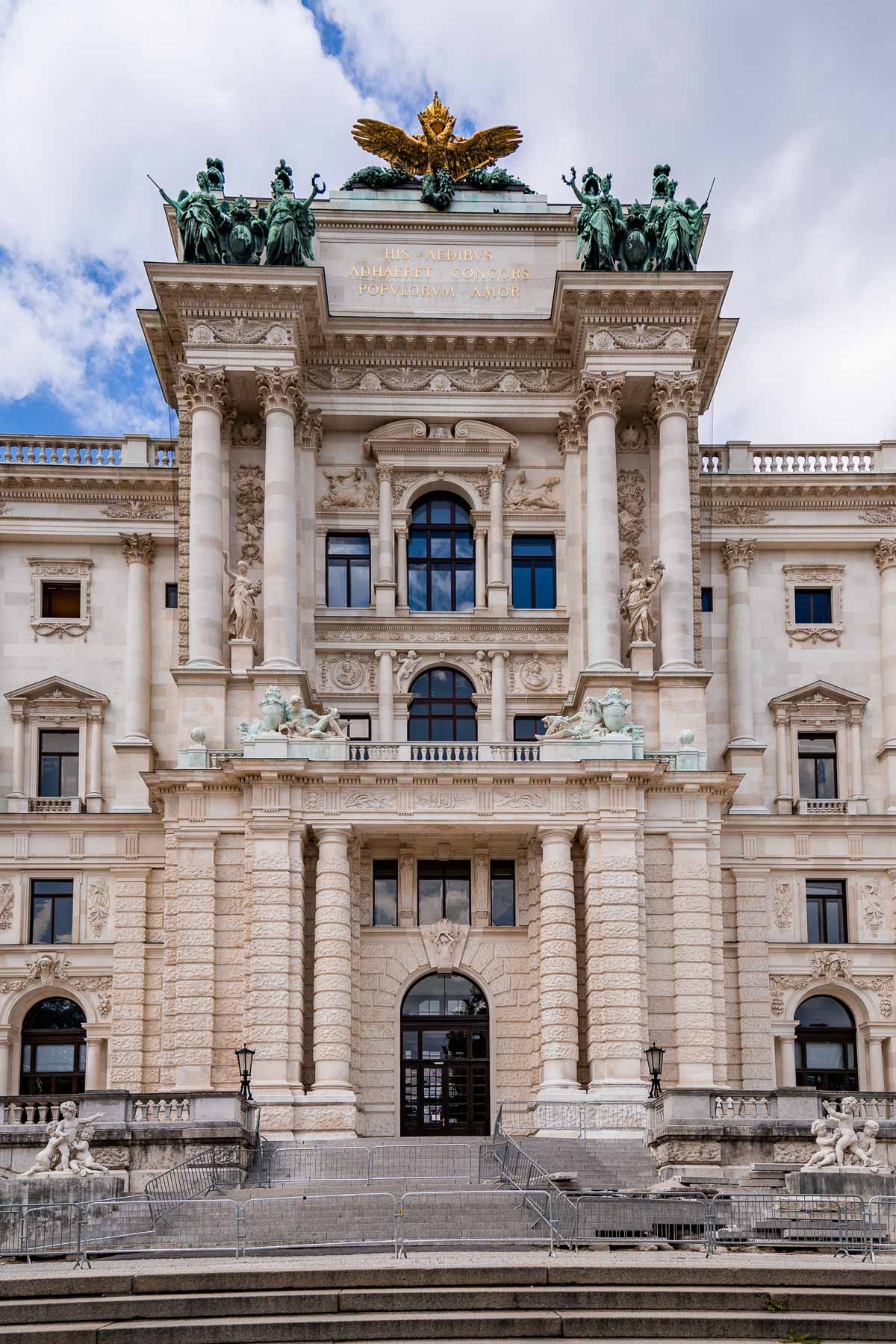
Vergnügungspark
One of the most fun things to do in Vienna at night is to visit the Prater amusement park. The star attraction is the giant Ferris wheel which has been rotating since 1897 but there are plenty of other rides to satisfy all thrill-seekers.
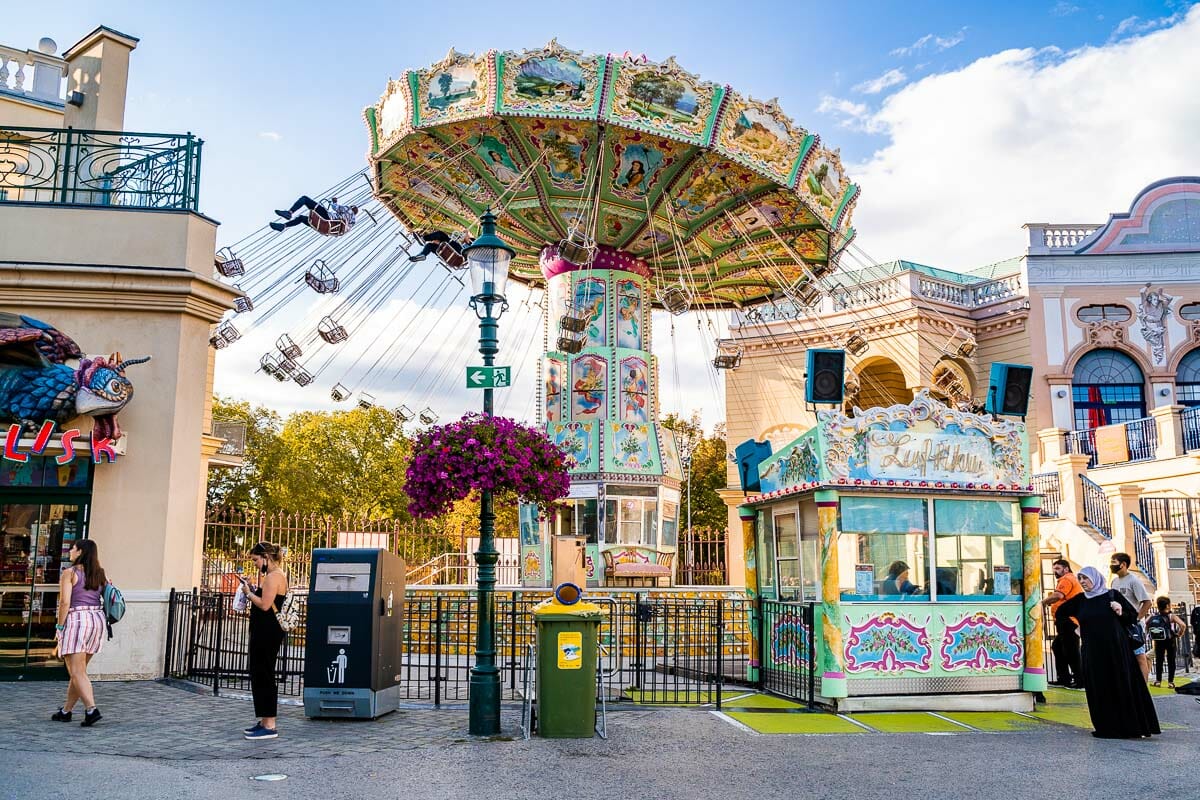
Where to eat in Vienna
- Honu Tiki Bowls : Colorful cuisine in an equally colorful setting! You can select one of the signature bowls or customize your own. There are plenty of options to satisfy vegans, carnivores and seafood lovers.
- Das LOFT : Dine high above the rooftops of Vienna at this upscale restaurant that serves contemporary Viennese dishes, quality wines, and delectable cocktails. They’re also open for breakfast.
- Café Anzengruber : Located in the foodie haven that is Wieden, the 4th District, this is one of the best places for authentic schnitzel, goulash, and other traditional Austrian plates you must try during your 10 days in Austria.
- Restaurant Ofenloch : Another option for classic Austrian food this time in the heart of the Innere Stadt. This historic venue has an irresistible ambiance and an expansive menu.
Day 3: Vienna to Hallstatt
Pick up your rental and ready your playlist, your Austria road trip officially begins today as you journey into the mountainous state of Styria! The total drive time to today’s final destination, Hallstatt, is around 5 hours and the distance is 340 km (211 miles).
But you will stop along the way before reaching your hotel in Hallstatt so allow extra time to visit the destinations listed below.
Once in Hallstatt, you will need to book 2 nights of accommodation. Refer to the next day if you want to learn about my recommendations for where to stay in Hallstatt!
Grüner See
Driving time: 2 hours and 15 minutes (175 km/110 miles) from Vienna to Grüner See
Leaving the city behind, Grüner See in an unbelievably beautiful pool of water formed by the snowmelt of the surrounding karst mountains. Translating into ‘Green Lake’, the water is an ethereal emerald hue.
There is a huge parking lot at the entrance of the lake but since it’s a popular place among locals and tourists alike, it’s better to go early to secure a parking spot. Parking is €6 for a full day (there is no hourly parking option) and you can only pay with cash.
It takes around 20 minutes to reach the lake from the parking lot on a gravel road, the trail is completely flat and very easy. You can walk around the lake in its entirety in around 30 minutes to appreciate the viewpoints and take photos.
There is a small restaurant next to the lake if you need lunch or you can prepare a picnic to enjoy by the water. Note that swimming is not permitted in the lake due to conservation efforts.
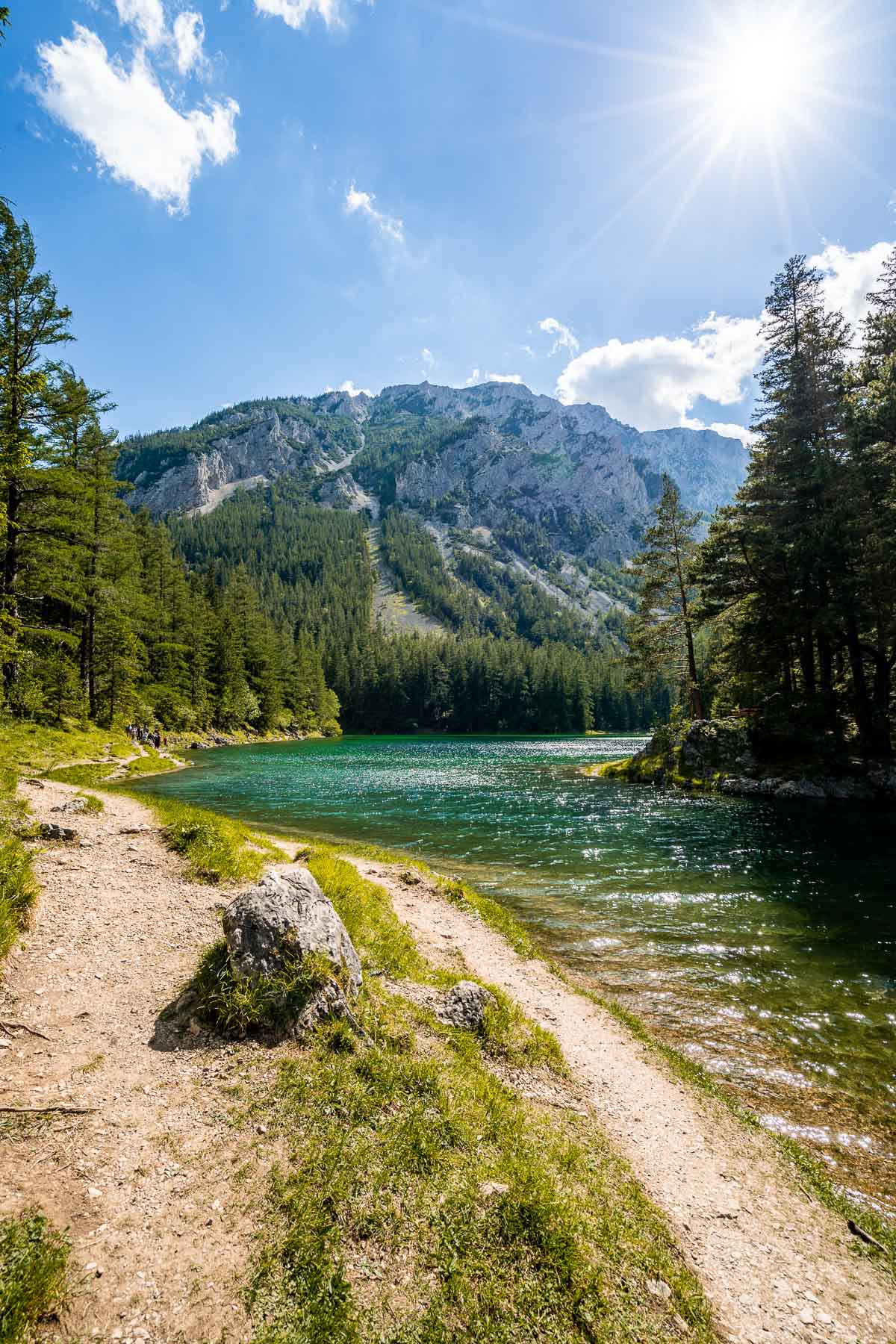
Admont Abbey Library
Driving time: 1 hour and 40 minutes (87 km/54 miles) from Grüner See to Admont Abbey Library
The next scenic stop on today’s journey is a sensational library situated inside Admont Abbey. Stepping into the library feels as if you would enter the library from the Beauty and the Beast !
The archive represents the largest monastic library in the world and the works span architecture, frescoes, sculptures, manuscripts, and printed tomes. Constructed by the architect Josef Hueber, the library hall was completed in 1776.
It registers 70 meters (230 feet) in length, 13 meters (43 feet) in height, and features seven ceiling frescoes that represent the Enlightenment. These were composed by the painter Bartolomeo Altomonte who was 80 years old at the time!
70,000 volumes are stored in the hall while the abbey in total contains around 200,000 books and manuscripts, with some dating as far back as the 8th century AD.

There’s a huge parking lot right next to the Abbey where you can leave your car while you explore the inside.
A ticket to Admont Abbey Library costs €16.50 and it also includes entrance to a bunch of museums such as the Museum of Fine Arts or the Natural History Museum. I’m not a museum kind of girl myself but I really enjoyed wandering around these museums so definitely give them a try!
Depending on how many museums you want to visit, you can easily spend 2-3 hours inside. If you happen to visit at 11 am or 2 pm, you can also take part in a guided tour of the library which lasts for 40 minutes (it’s already included in your ticket price).
Please note that the library only operates on a limited opening time. As of March 2023, according to the official website it’s closed and will be open from April to May between 10.30 am to 3.30 pm and it’s completely closed on Mondays and Tuesdays. From June to October it will be open every day from 10 am to 5 pm. In November you can count on the same opening hours as in April and May. From the second half of December the library is going to be closed.
The official website doesn’t get updated that much so if you want to go for sure, it’s worth calling them in advance about the current opening hours. We almost missed our chance to visit this masterpiece because of the incorrect opening hours on the website so if you want to avoid the struggle, make a call!
Outside of the library, it’s also worth taking a stroll around the beautiful gardens and popping into the Abbey itself (it’s free to visit). Admont itself is situated on the banks of the Enns River right in the middle of the Ennstal Alps so if you have more time, it’s also worth taking a wander around this picturesque town to savor the incredible scenery.

Arriving in Hallstatt
Driving time: 1 hour and 30 minutes (78 km/48 miles) from Admont Abbey Library to Hallstatt
After wandering around Admont and taking in the scenic views, pop back into your car and drive all the way to Hallstatt. It takes around 1.5 hours to reach this fairytale town from Admont. In case you’re not staying directly in Hallstatt, you might need to calculate different driving times depending on where you’ll stay.
Day 4: Full day in Hallstatt
Hallstatt is a quaint lakeside village located in the mountainous region of Salzkammergut. It is known for its salt mining heritage and historic center which is recognized as a UNESCO World Heritage Site.
Hallstatt’s setting on the shore of Hallstätter See (Hallstatt Lake) means that you have arresting views in all directions which really do look like something you’d see on a postcard. This is easily one of the prettiest places you’ll stay during your Austria road trip.
Cars are not allowed in Hallstatt Zentrum. So, you will need to leave your car at the parking lot suggested by your hotel while you carry on with your one day in Hallstatt .
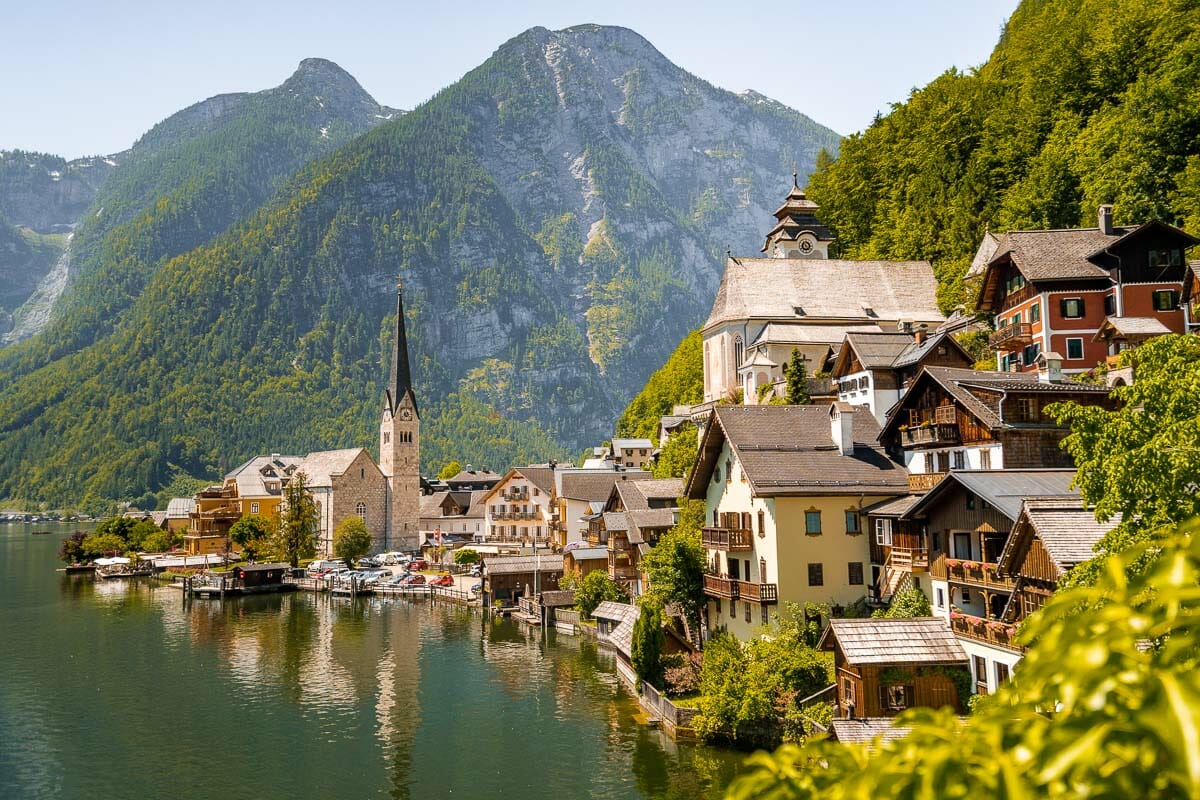
Where to stay in Hallstatt
As Halsttatt is a small village, accommodation options are limited and it’s essential to book far in advance. However, as you will have your own car you can also consider staying further out of the village in either Obertraun or one of the other nearby hamlets. These are my suggestions for where to stay in Hallstatt for your two nights.
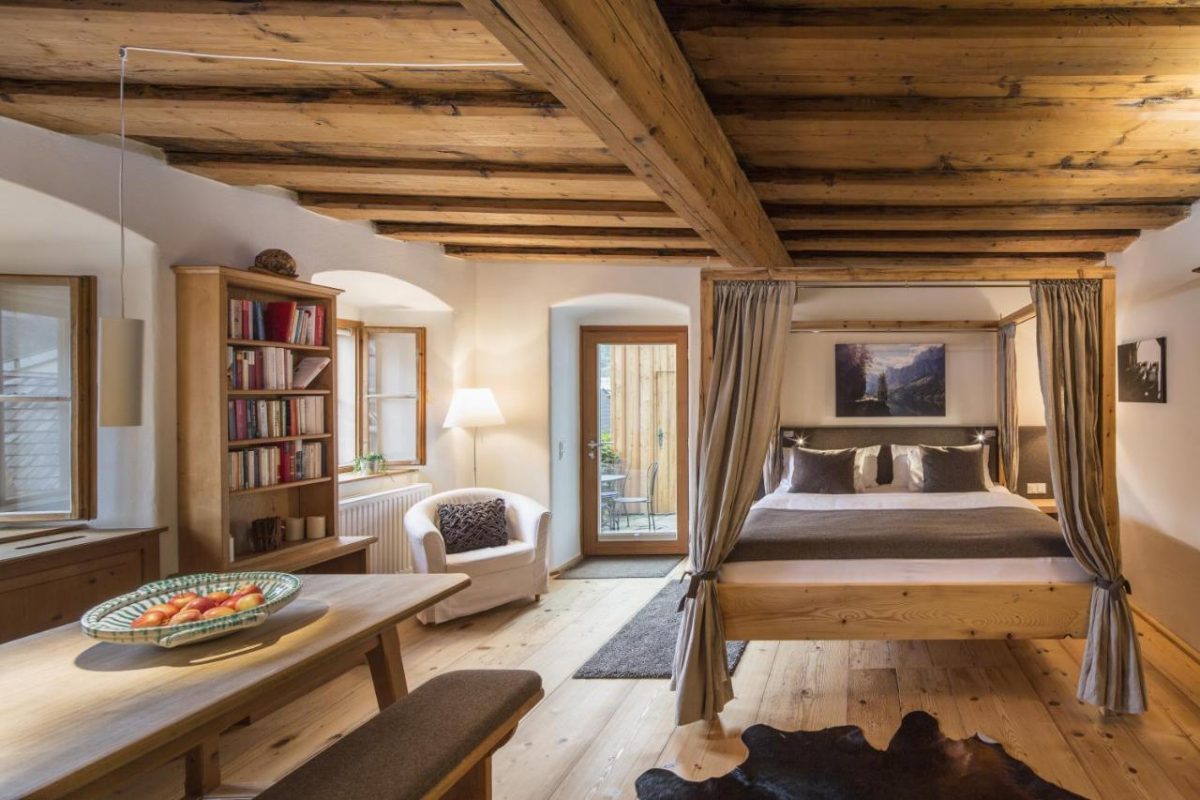
LUXURY – Hallstatt Hideaway
This adults-only resort is located right on the waterfront and comprises a deluxe portfolio of suites that offer lake views. Modern interiors feature a rustic twist and the most decadent options come with additional features ranging from private patios to private spa pools.
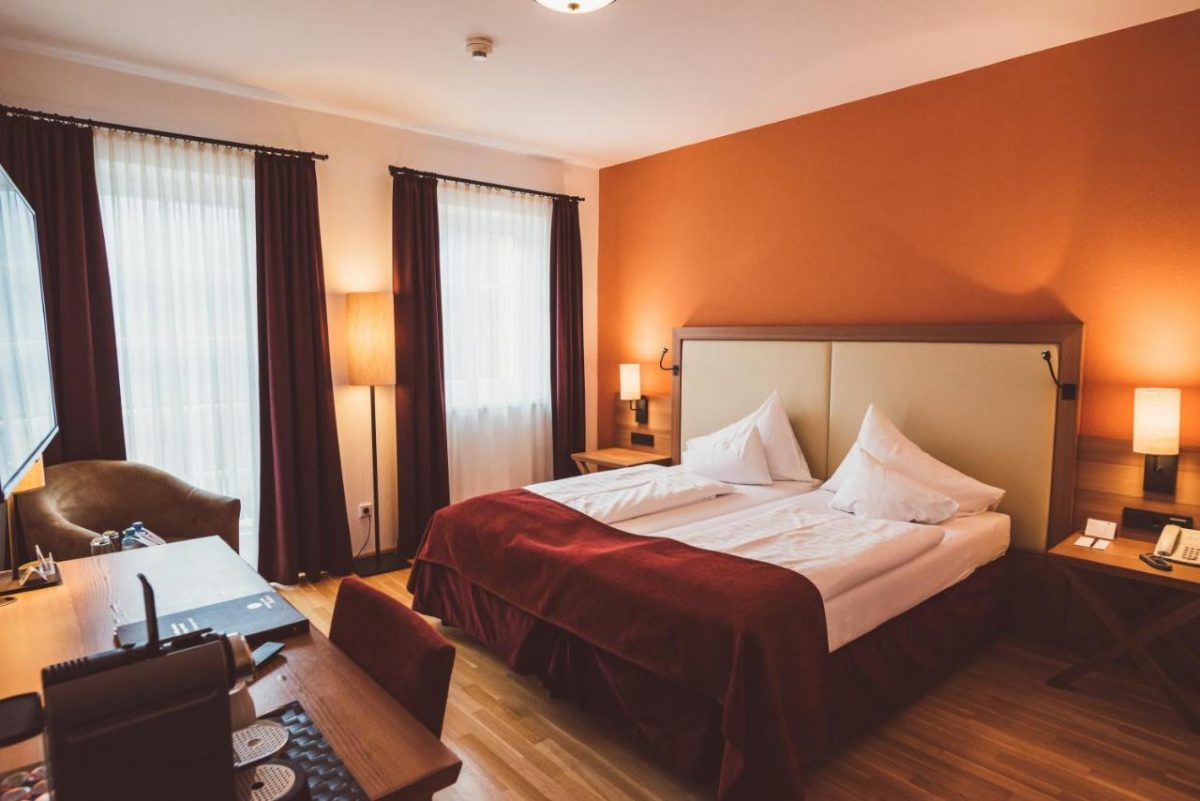
MID-RANGE – Heritage Hotel Hallstatt
All rooms and suites at this 4-star hotel provide lake views and are equipped with a private bathroom, coffee maker, and homely touches. The accommodation spans three buildings and there is also a restaurant and sauna on site.
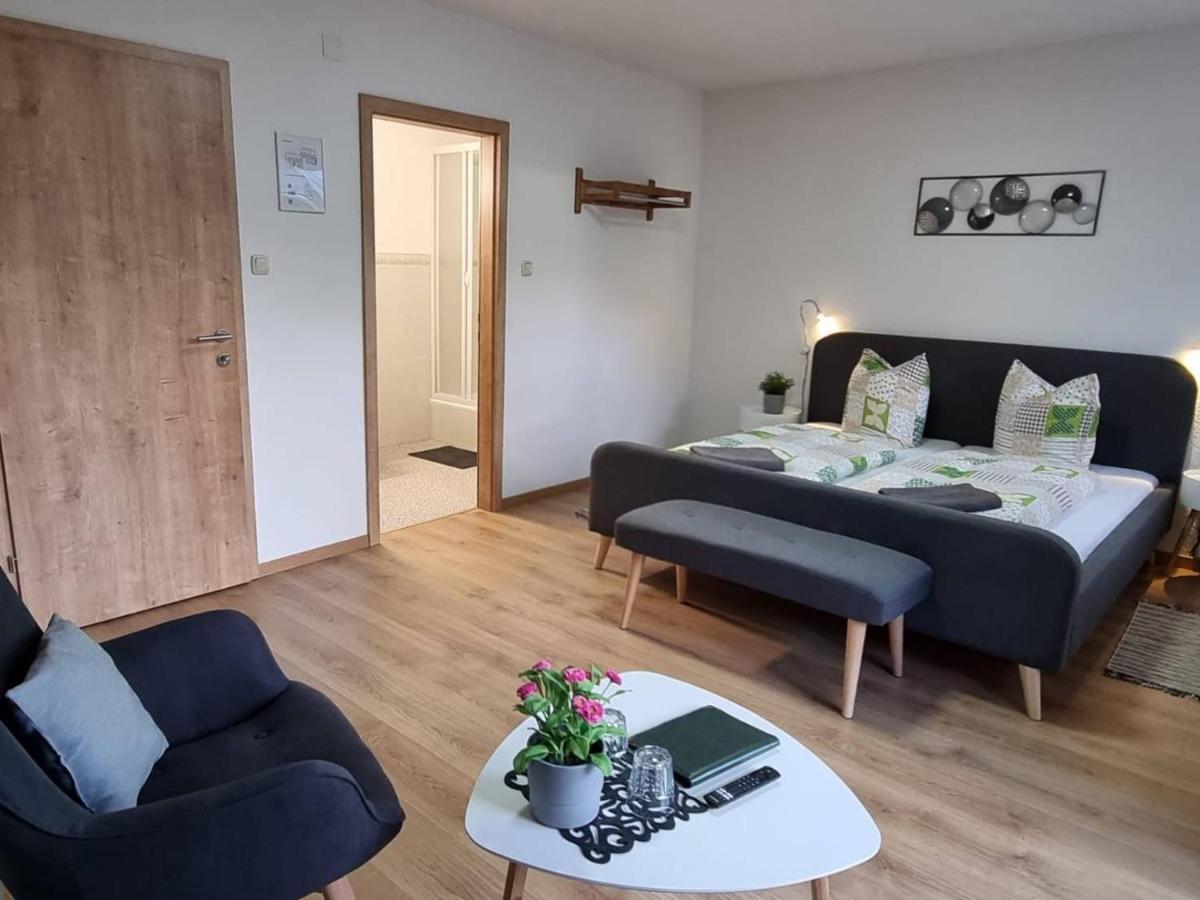
BUDGET – Gasthof Bergfried
This centrally located guest house features compact rooms with en suite bathrooms with the option to upgrade to a balcony suite. The property offers a shared relaxation area with a spa and sauna.
Alternatively, if you have a car, you might want to stay a little further out of town in one of the surrounding hamlets. One of the best options is Obertraun, from where you can reach Hallstatt within 10 minutes by car or you can also take advantage of the ferry.
We stayed at Haus Salzkammergut on our second visit to Hallstatt and absolutely loved everything about the hotel! Great location, amazing views from the balcony, lovely owners, cute doggie, and delicious breakfast. I can only recommend this place!
In case the hotel is full or you’re looking for something else, you can check all the accommodation options in Obertraun here .
Best things to do in Hallstatt
Hallstatt zentrum.
The center of Hallstatt is totally walkable and you can spend the morning exploring the main sites. Roam the Marktplatz Hallstatt with your camera, take in sweeping views from the top of Evangelisches Pfarramt and visit the ossuary (bone cemetery) at Michaelskapelle. You can also walk down to Small Island and head north of the village to appreciate the scenic viewpoints of Hallstatt.
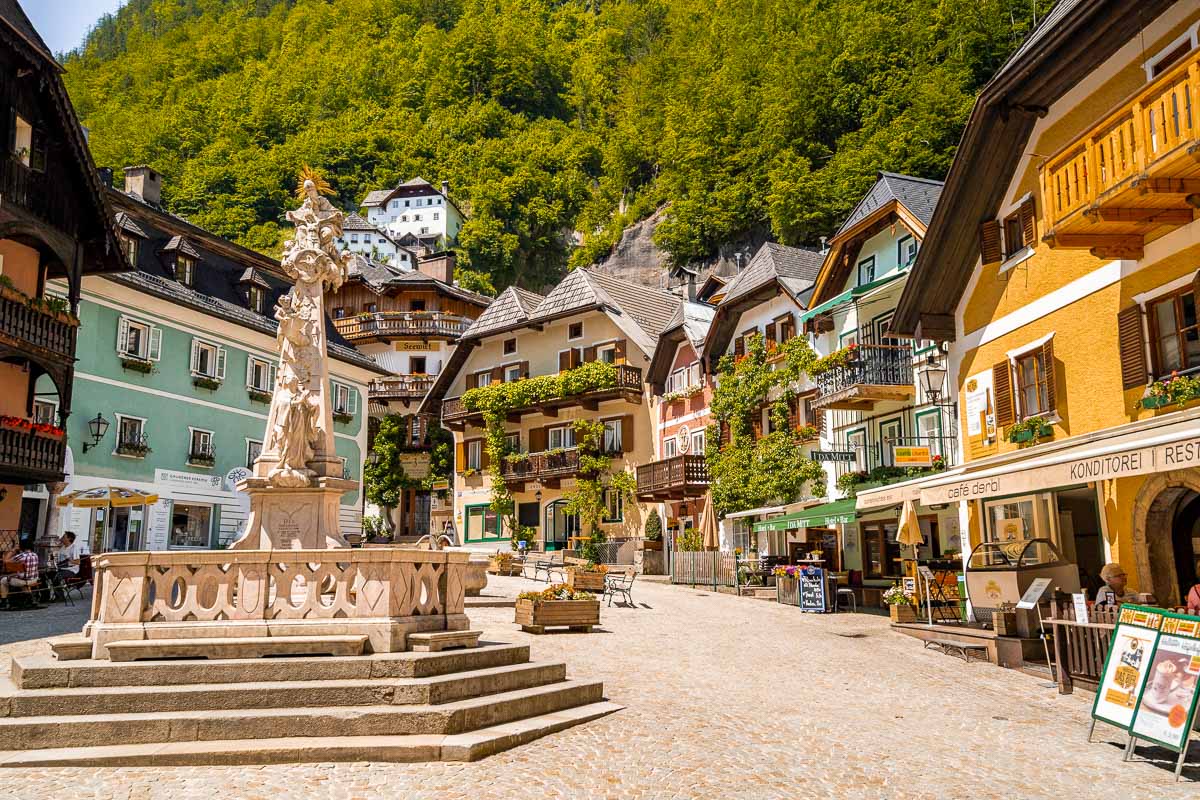
Ride the ferry
Whether you stay in Hallstatt Zentrum or Obertraun, it is worth hopping on the ferry that connects the two towns in order to experience a different perspective of the river. The crossing takes around 25 minutes.
Hallstatt Skywalk
Ride the Salzbergbahn funicular up to this observation deck that rises 350 meters (1,148 feet) above the village and provides sensational views of the alpine landscape. You can also walk up but it is very steep and takes around 1.5 hours. The compromise is that you ride the funicular up and walk back down!
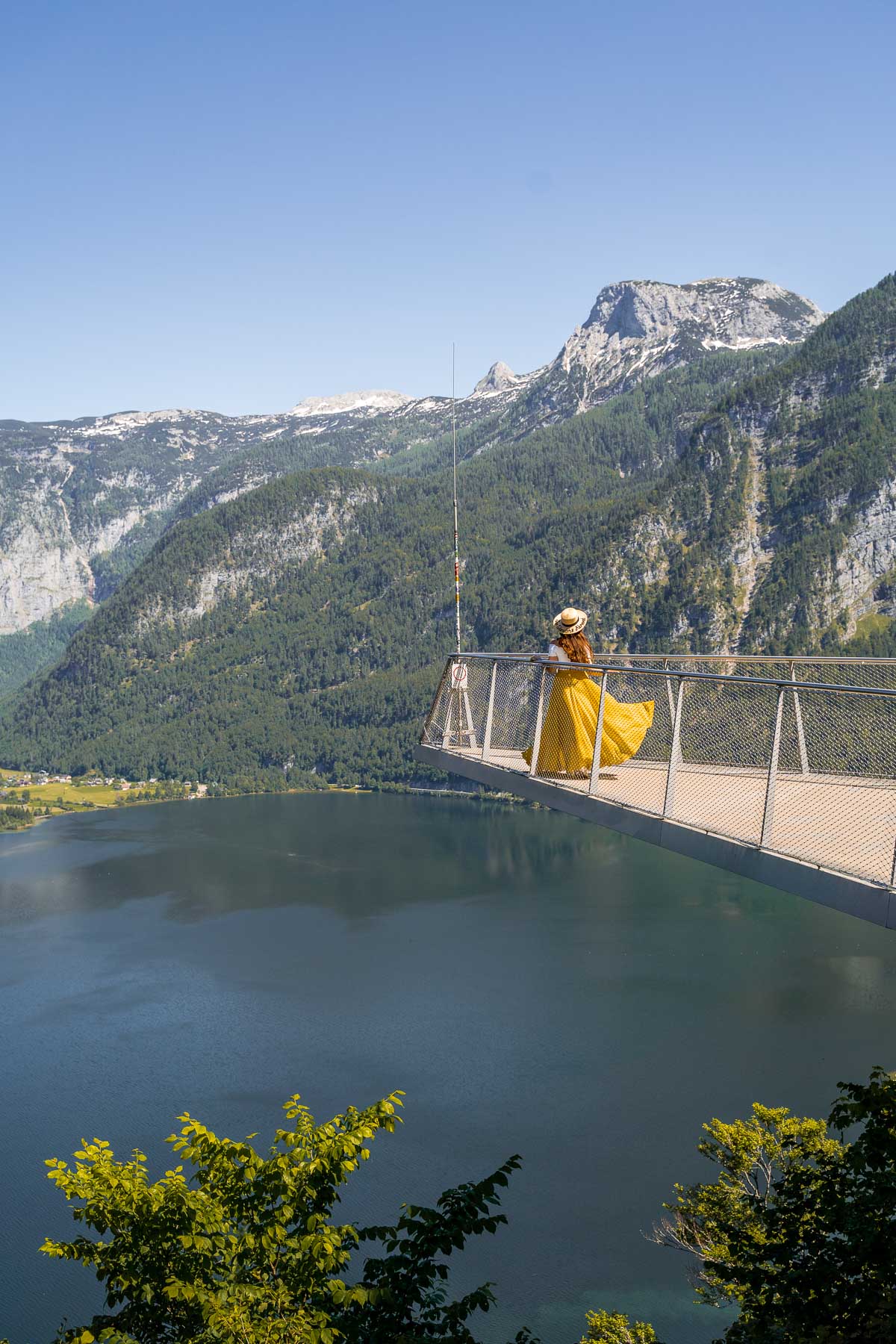
Salzbergwerk Hallstatt
Take a tour of this 7,000 year old salt mine which includes exploring on foot and by traditional mine train. The mine is only accessible via the 90 minutes guided tour which you can book online in advance to secure your spot. Access to the attraction is also via the funicular so you can plan these two activities for the same time.
Hallstatt Waterfall
A shorter waterfall option: you can walk to the Hallstatt Waterfall from Marktplatz in around 20 minutes. It gushes out from the vegetation and is a great way to warm up for a day of sightseeing or cool down in the spray during summer.
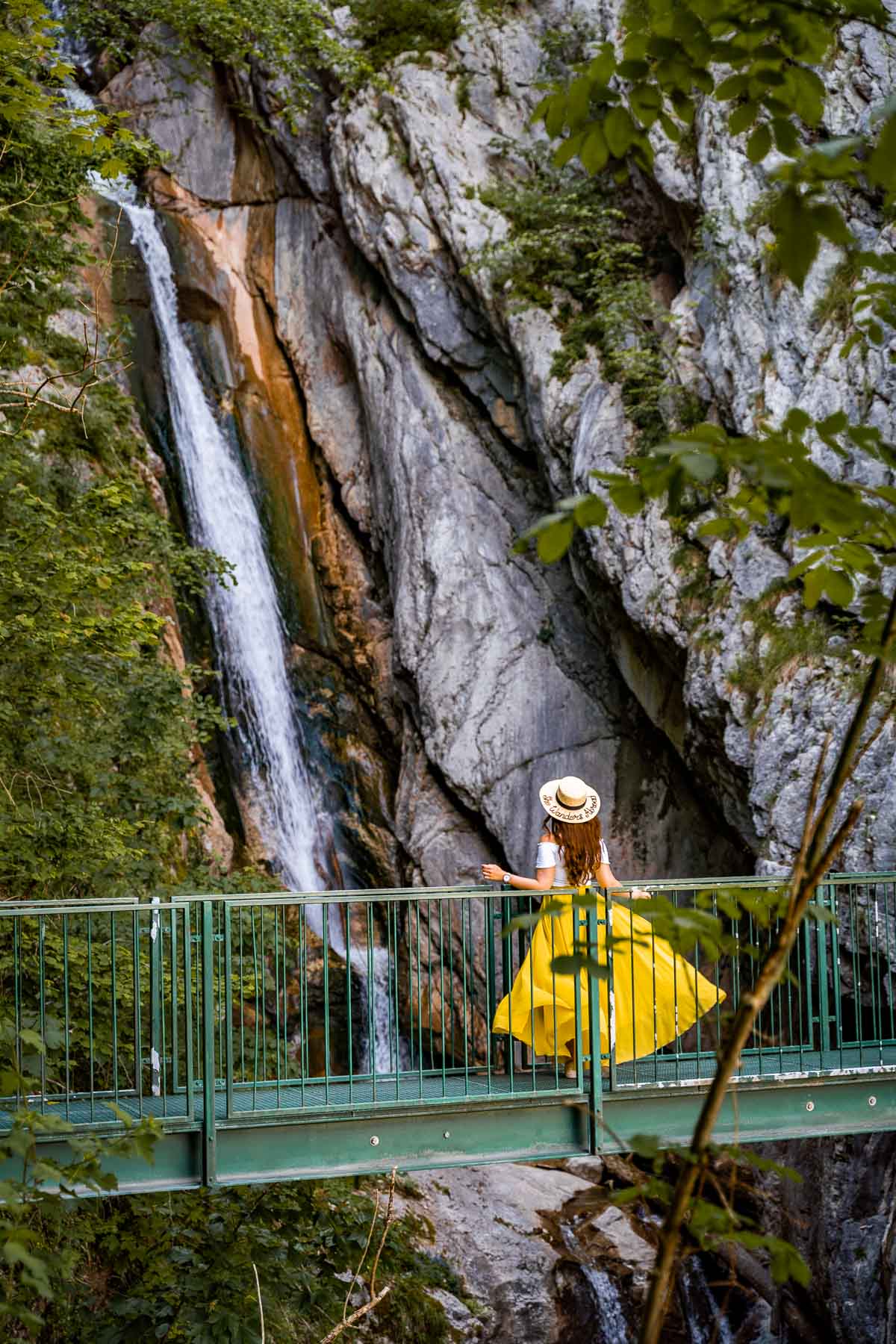
Waldbachstrub Waterfall Hike
It takes around 40 minutes to hike to the Waldbachstrub Waterfall from Parkplatz Echerntal or just over 1 hour from Hallstatt Zentrum. This is an easy trail with minimal incline and is a great way to experience the local nature and warm up for some more challenging hikes later in the Austria itinerary.
Gletschergarten (Glacier Garden) Hike
The Glacier Garden is another wonderful hike that you can do from Hallstatt or Parkplatz Echerntal. This assemblage of rocks and streams formed during the last Ice Age as the local glacier receded from the gorge. It takes 2-3 hours to cover the entire complex and it isn’t too demanding.
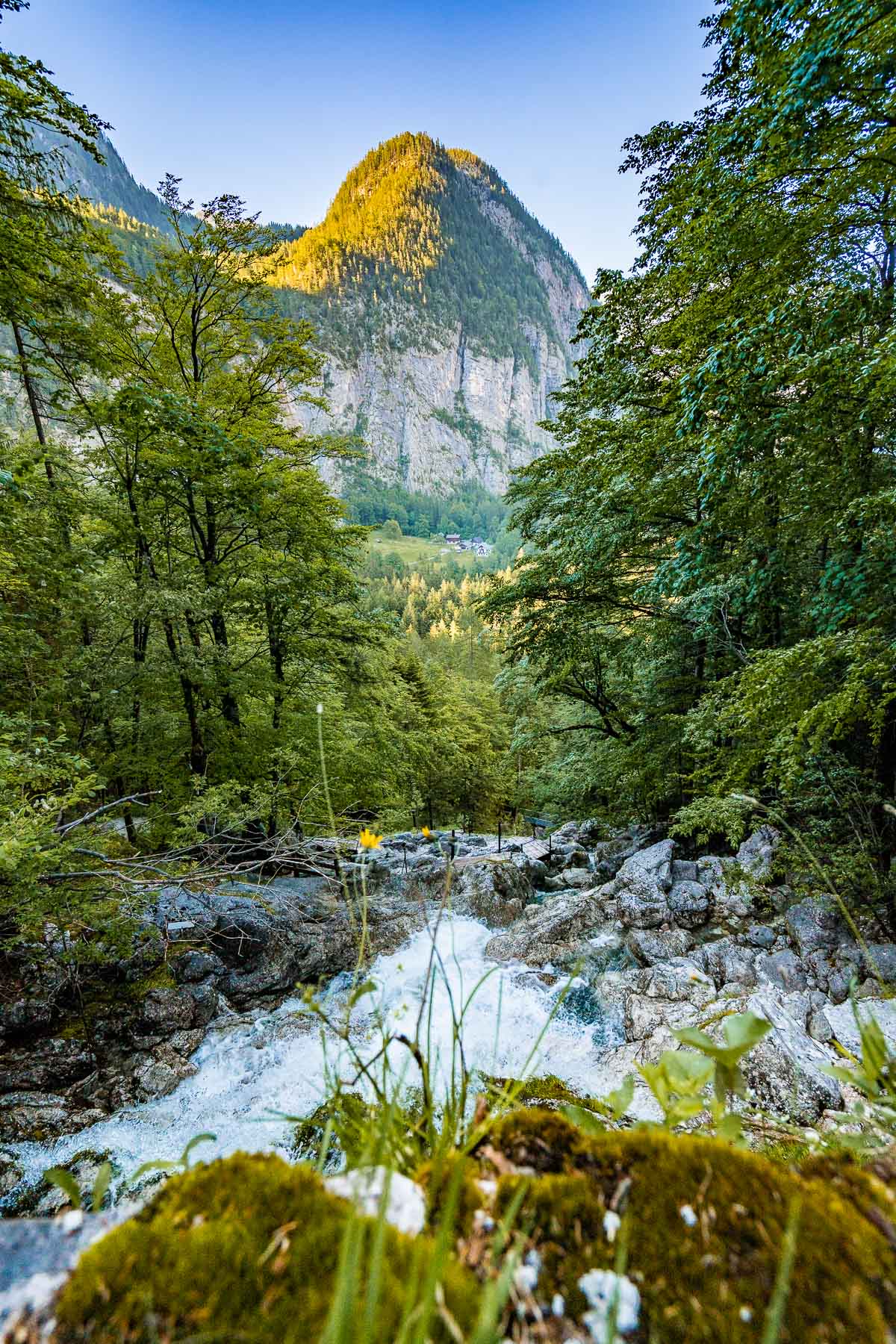
Where to eat in Hallstatt
- Restaurant Rudolfsturm : Located within a medieval tower, this place is worth it for the views alone. The menu is typically Austrian and they also do a great apple strudel.
- Restaurant Am See : This lakeside eatery offers charming views and the menu is rich with local dishes and fresh fish dishes.
- Pizzeria Kegelbahn : Situated across the lake in Obertraun, this Italian restaurant serves good quality pizza and pasta alongside soups, salads, and Austrian fare.
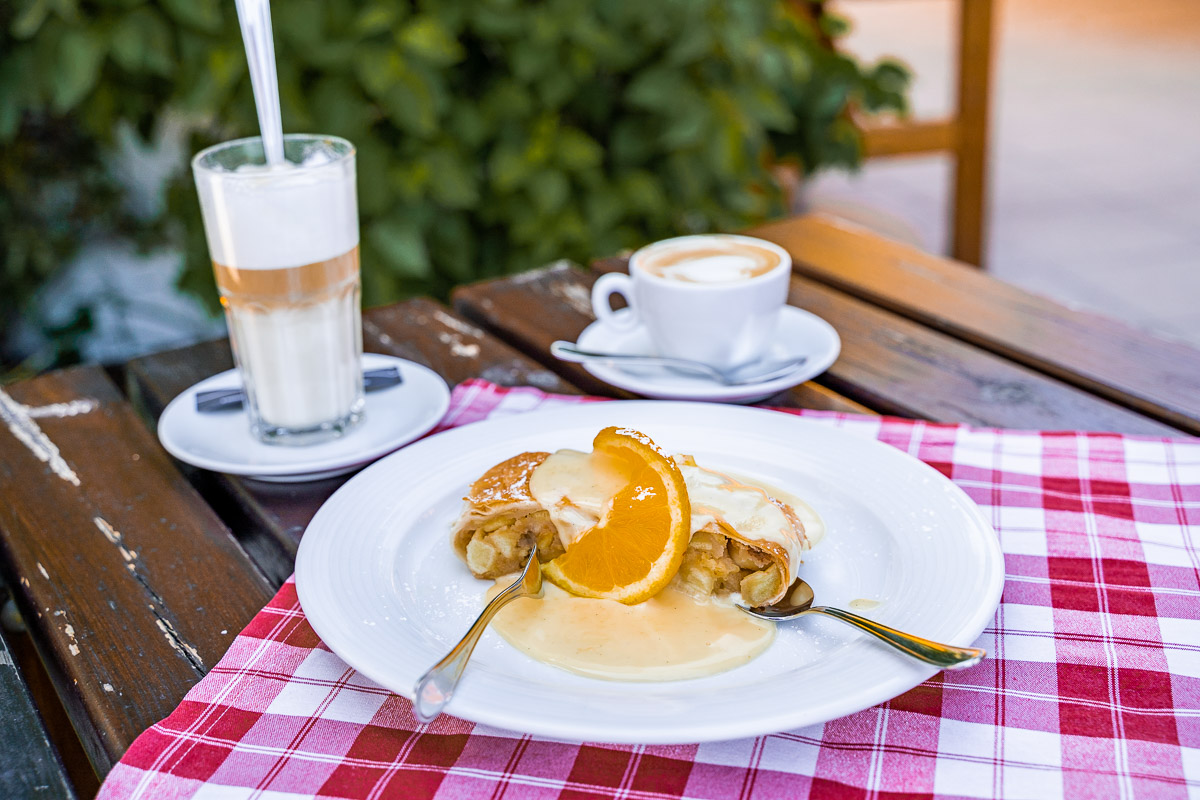
Day 5: Hallstatt to Salzburg
Today you’ll need to check out of your hotel in Hallstatt as it’s time to head to your next destination: Salzburg! You’re going to have two stops along the way so your driving time will be around 2 hours including both stops.
I recommend starting the day as early as you can as you’ll have some exciting plans for the day!
5 Fingers Viewing Platform (Dachstein)
Driving time: 10 minutes (7 km/4.5 miles) from Hallstatt to Dachstein Krippenstein
Your first stop today is going to be the slopes of the Dachstein massif, a dramatic glacial mountain range that rises 2,700 meters (8,858 feet) in the region south of Hallstatt. Once you reach the summit, you can explore the 5 Fingers lookout, an ice cave, and 360° views.
You can park at the cable car, Dachstein Krippenstein, and then hop on the gondola up the mountain to experience incredible views as you soar. The ticket price depends on which attractions you’re planning to visit, you can check the different options here .
For reference, if you only want to visit the 5 Fingers platform, you’ll need to purchase a Panorama ticket that costs €35.30, while the all-inclusive ticket costs €52.20 which includes a visit to the caves as well.
In a remarkable feat of engineering, the 5 Fingers observation platform protrudes 400 meters (1,312 feet) above the ground below and is shaped in the form of a hand with 5 ‘fingers’ stretching out to grasp the cool mountain air.
Once you leave the cable car at Krippenstein (section 2), you’ll need to hike around 25-30 minutes to get to the viewing platform.
The hike is really easy and well-marked so it shouldn’t be a challenge even if you’re not in the best shape. And the views along the way are out of this world!
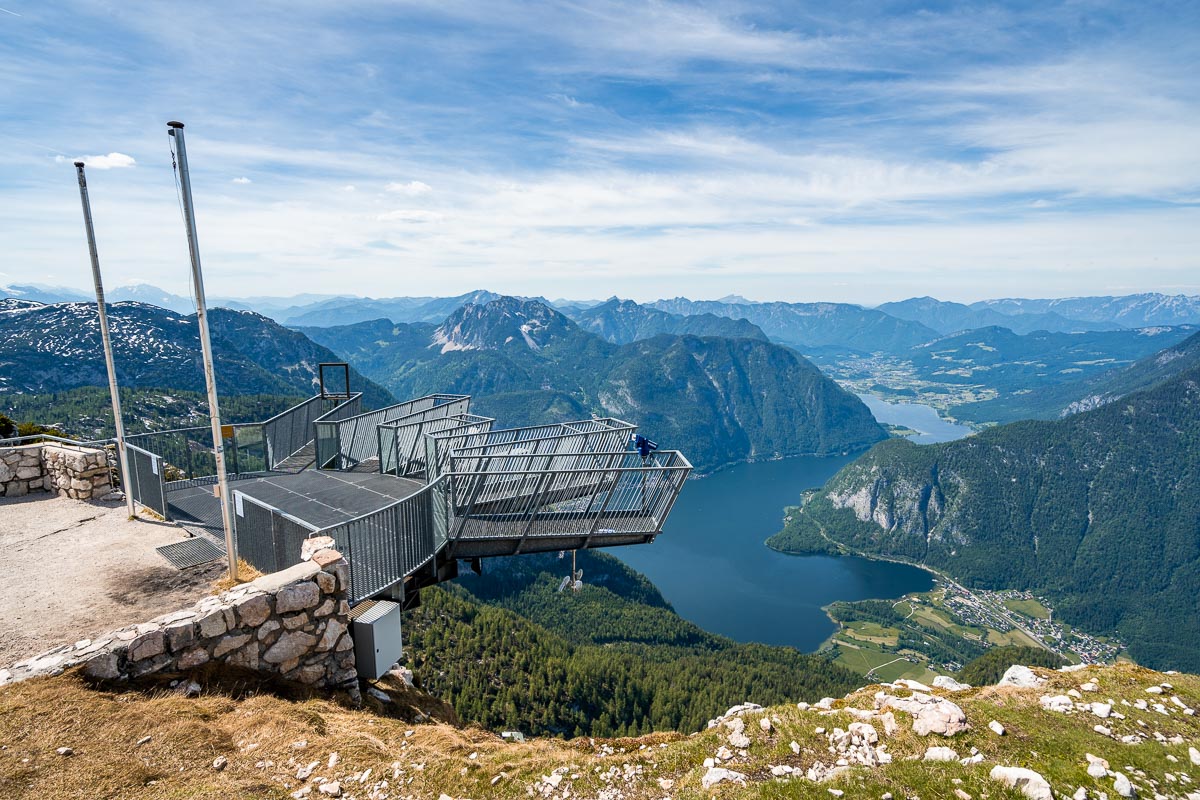
Within the same area as the lookout, you will also find the Dachstein Giant Ice Cave. Entering this huge cavern, you will encounter stalactites of all different colors before you catch sight of the massive wedge of ice filling the chasm.
Guided tours of the ice cave last 50 minutes and require a 15-minute walk from the cable car station, Schönbergalm (section 1). If you do want to explore the cave, you will need to dress warmly as the average temperature inside is -2 °C (26.6 °F), even during summer. Make sure you pack layers for your 10 days in Austria!
You can find another cave at Schönbergalm (section 1) called Mammut Cave. It’s known as one of the largest karst caves in the world, hence the name. It takes around 15-20 minutes to reach the cave from the cable car station and as with the Giant Ice Cave, a guided tour lasts for 50 minutes as well.
Depending on how much time you have, you can visit either of the caves or both, or you can just go for the 5 Fingers platform for the panorama – it’s completely up to you!
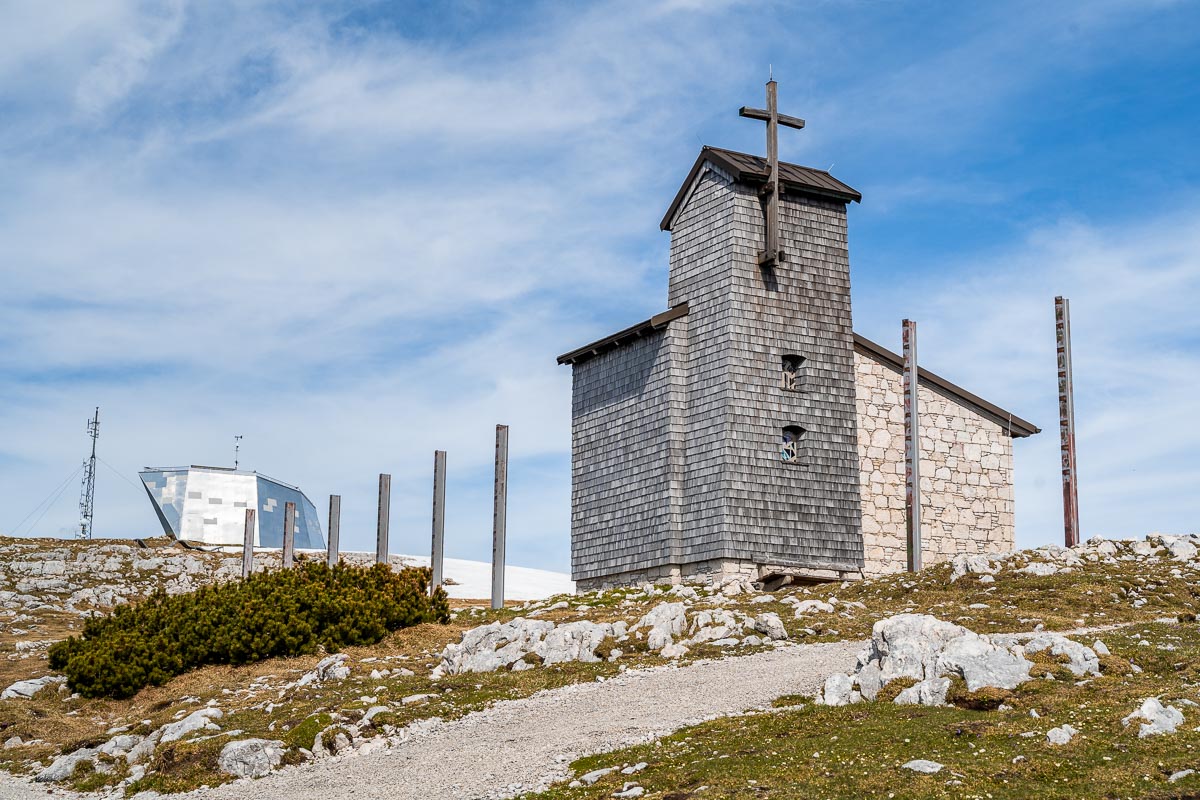
Gosauseen
Driving time: 30 minutes (27 km/17 miles) from Dachstein Krippenstein to Gosauseen
Gosauseen is a cluster of three beautiful lakes located in the Alps of Upper Austria. You can drive to the Gosausee Parking lot and park your car here while you explore, or you can park near the Gosaukammbahn cable car station and ride up to the lakes this way instead if you prefer.
There are a series of hiking trails that connect the lakes and give you the chance to explore phenomenal nature.
The shortest option is to just walk around the first of the three lakes, Vorderer Gosausee, which takes around 1-1.5 hours in total. The more challenging options take you to the middle lake, Gosaulacke, as well as the third and final lake, Hinterer Gosausee.
To visit all three bodies of water, you will need to allow around 5 hours. As the drive time today is around 3 hours, this is feasible if you depart from Hallstatt as early as possible and skip the caves at Dachstein.
If you don’t want to fully drain your batteries, my recommendation is to visit only the first lake and rest a little bit after you arrive in Salzburg.
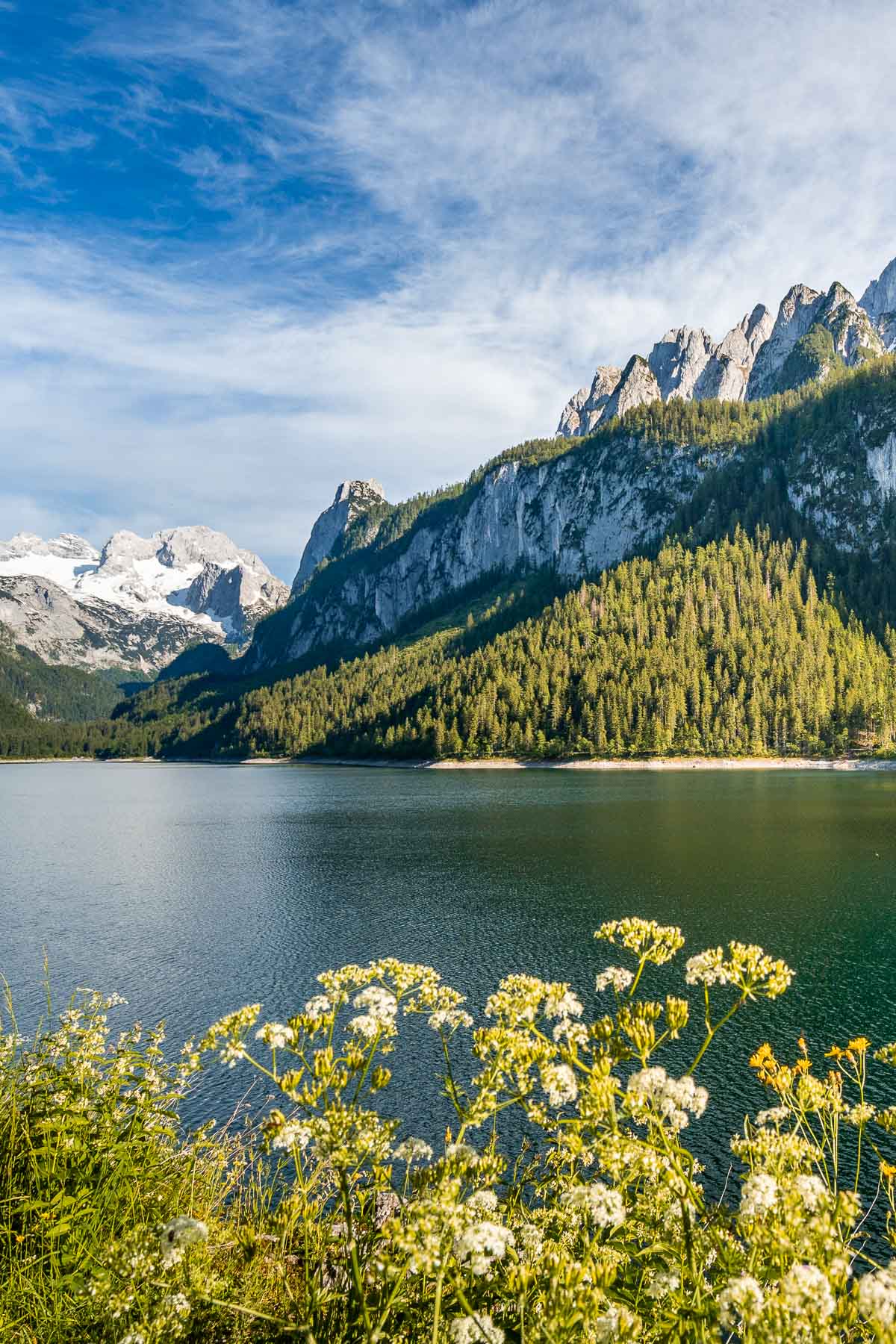
Arriving in Salzburg
Driving time: 1 hour and 10 minutes (80 km/50 miles) from Gosauseen to Salzburg
After exploring the lakes, you’ll need to drive around 1 hour to get to Salzburg, which will be the next destination on your Austria road trip itinerary. Once in the city, you’ll need to stay for 2 nights to be able to spend one full day in Salzburg.
If you need recommendations of where to stay in Salzburg, check the next section for my tips!
Day 6: Full day in Salzburg
Salzburg presses its way up against the border with Germany in Western Austria and affords some of the finest views of the Eastern Alps. The Salzach River flows through the center of the city, with the Salzburg Alstadt (Old Town) resting on the left bank.
As the birthplace of the legendary composer, Wolfgang Amadeus Mozart, much of the culture of the city revolves around his lineage.
Fans will no doubt want to visit both Mozart’s Birthplace and Mozart’s Residence and catch a recital while in town. But Salzburg is also abundant in museums, galleries, stately residences, and gardens, restaurants, and shops, and it’s really not a place to skip off your Austria road trip.
You can easily spend one day in Salzburg exploring the delights of this UNESCO World Heritage Site and strolling along the riverside.
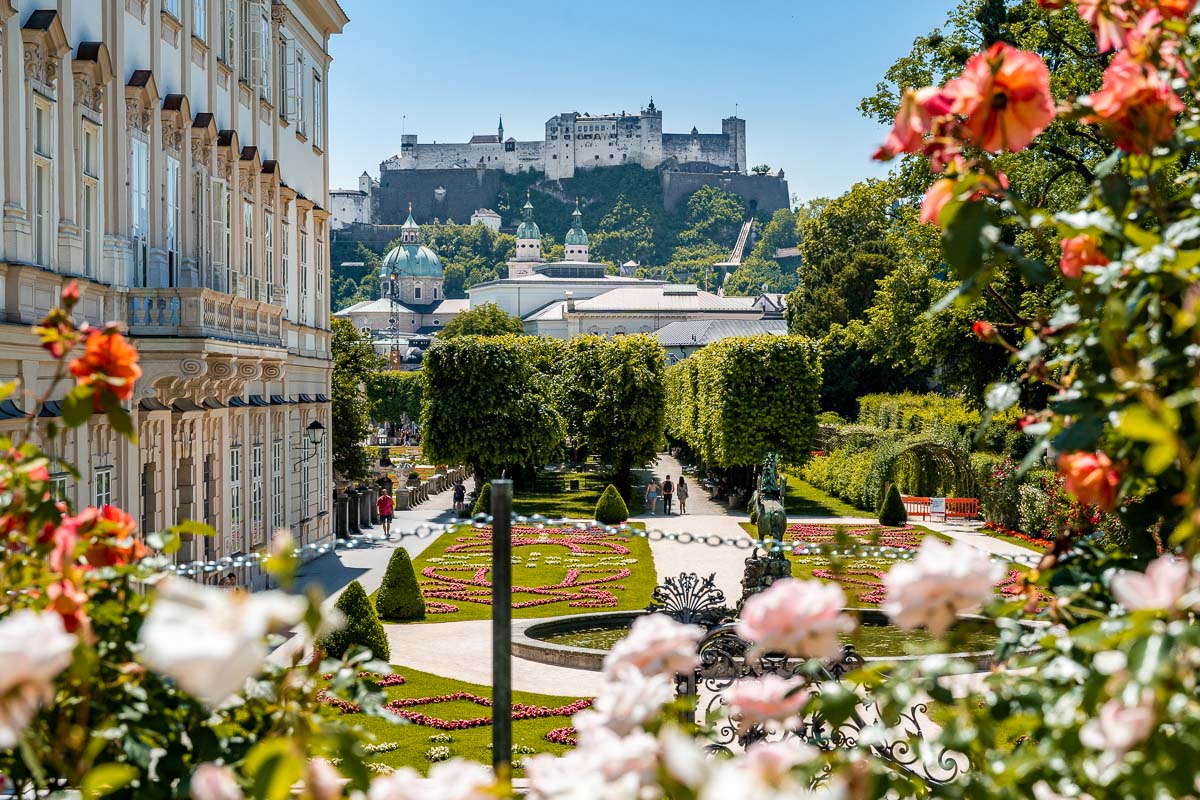
Where to stay in Salzburg
As with Vienna, it makes sense to book accommodation as centrally as your budget allows. Hotels in Salzburg Altstadt are priced higher and you should expect to pay around €15 per day for parking so do factor that into your plans and budget.
If you stay further out in areas such as Itzling, Maxglan or Taxham then you will find that accommodation rates drop and you can transfer into the city center efficiently via bus.
These are my suggestions for where to stay in Salzburg for your two nights.
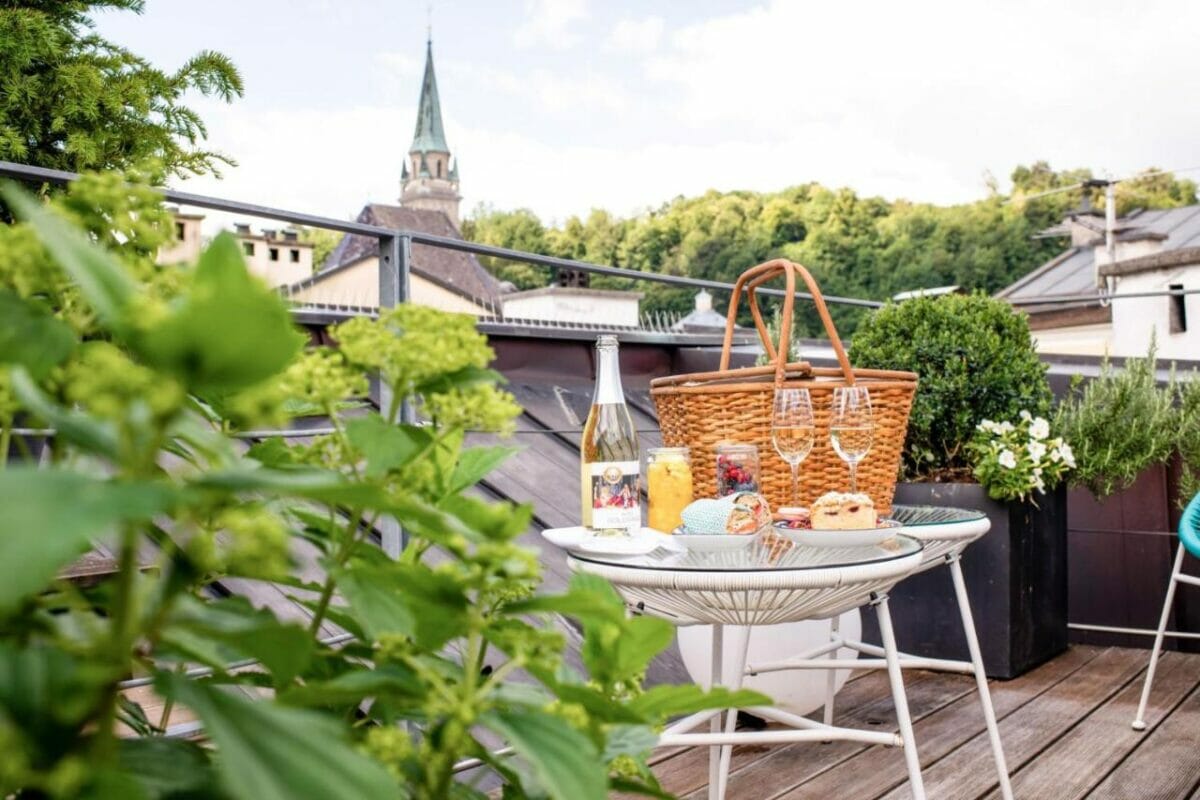
LUXURY – Small Luxury Hotel Goldgasse
All suites at this deluxe hotel are artistically presented and some feature a private terrace. The property is situated in Salzburg Altstadt within walking distance to all the major landmarks and has a wonderful restaurant on the premises.
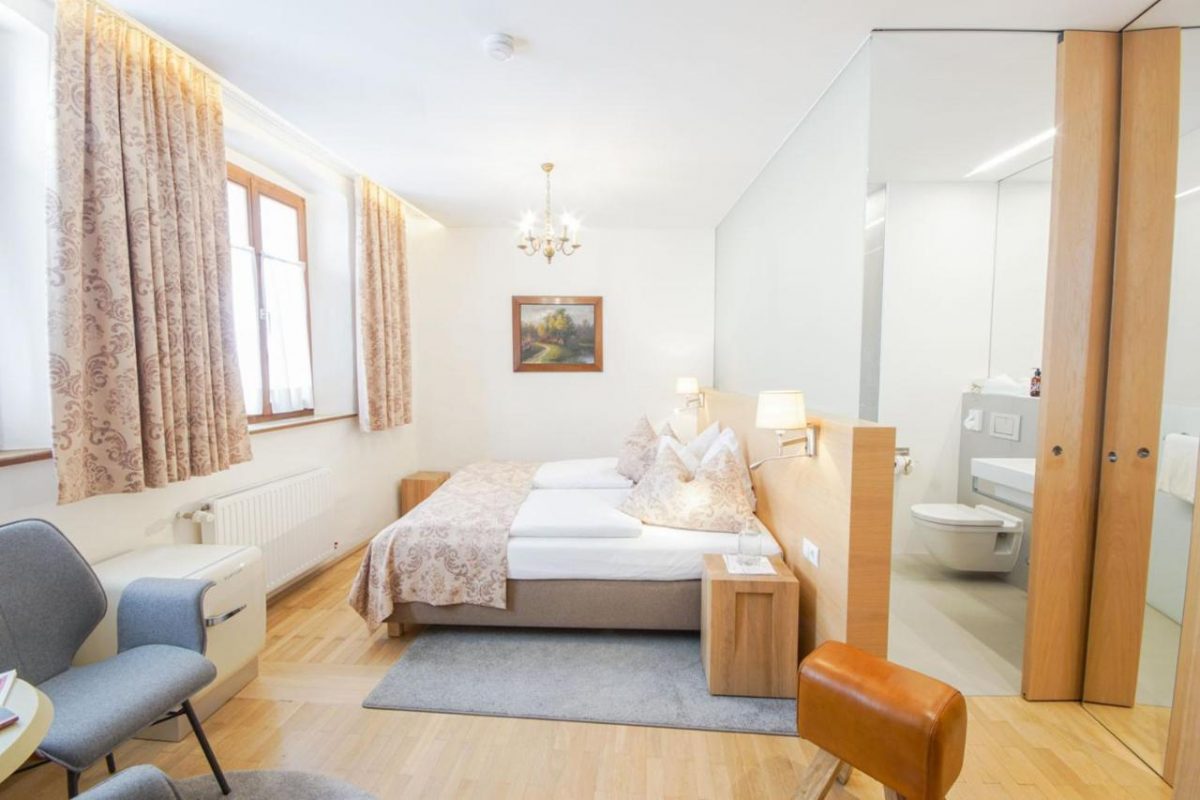
MID-RANGE – Hotel Wolf
Colorful rooms are comfortably designed with eclectic furnishings and immaculate bathrooms. The hotel is positioned within a building that dates back to 1429 and is located in the heart of Salzburg Altstadt. A fantastic breakfast is included in the rate.
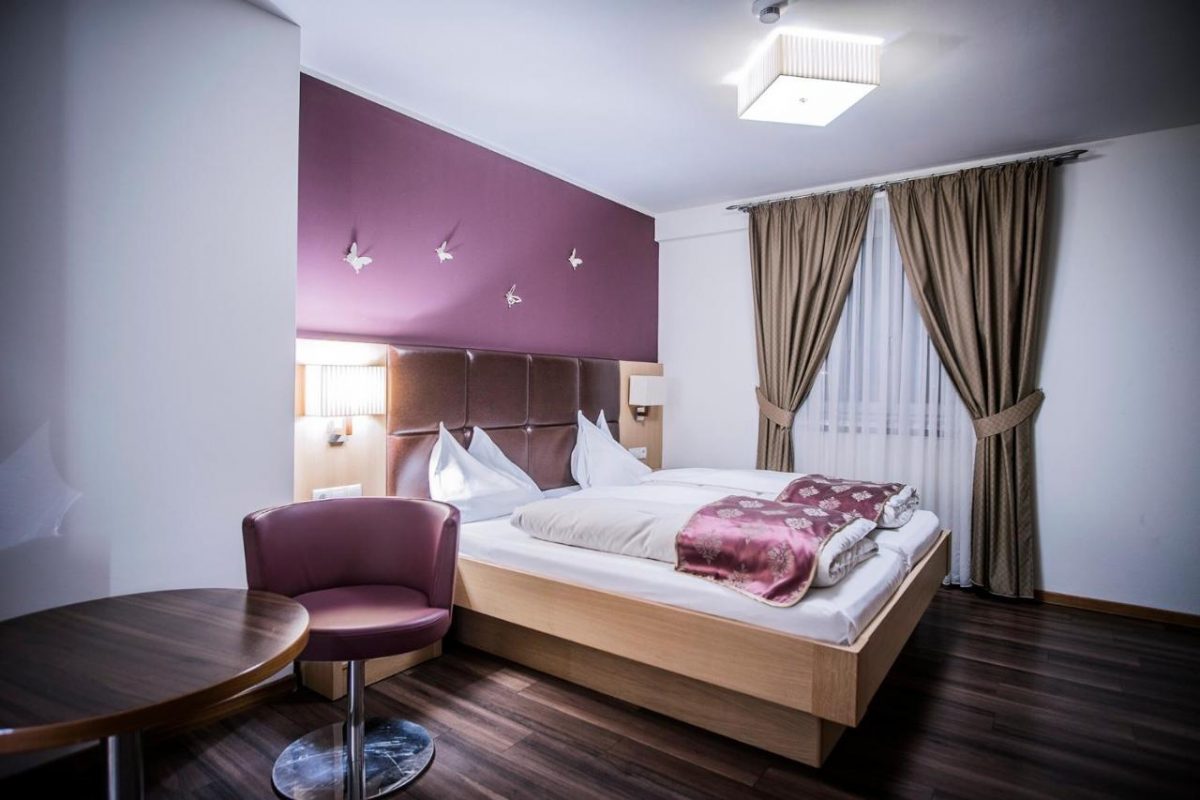
BUDGET – Hotel-Flair
Rooms at this budget hotel in Salzburg are clean with plenty of space and each comes with a private bathroom. The property is conveniently located for walking to and from Salzburg Central Station and is a 30-minute walk into Altstadt Salzburg.
Best things to do in Salzburg
Salzburg alstadt.
As a UNESCO World Heritage Site, Salzburg Alstadt is where you will find the most historic buildings and streets in the city, as well as museums, public squares, shops, and cafes.
You can call in at the shops on Getreidegasse, stroll down Sigmund-Haffner-Gasse, tour Mozart’s Birthplace, or dip into one of the Salzburg Museum institutions.
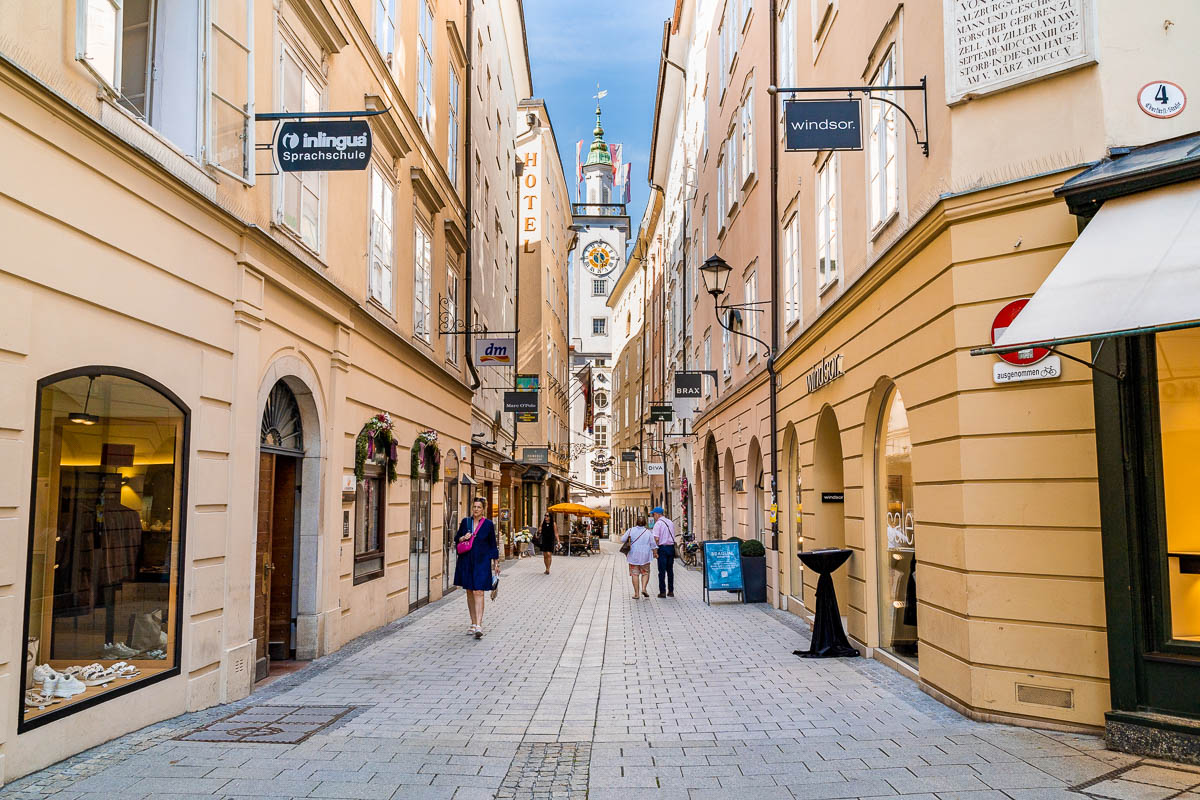
Mirabell Palace & Gardens
This resplendent palace dates back to 1606 when the prince-archbishop Wolf Dietrich commissioned and gifted the residence to his mistress, Salome Alt. You can explore the sprawling gardens and peer into the public rooms of the estate.
If you are a fan of The Sound of Music then this place will be familiar to you already!
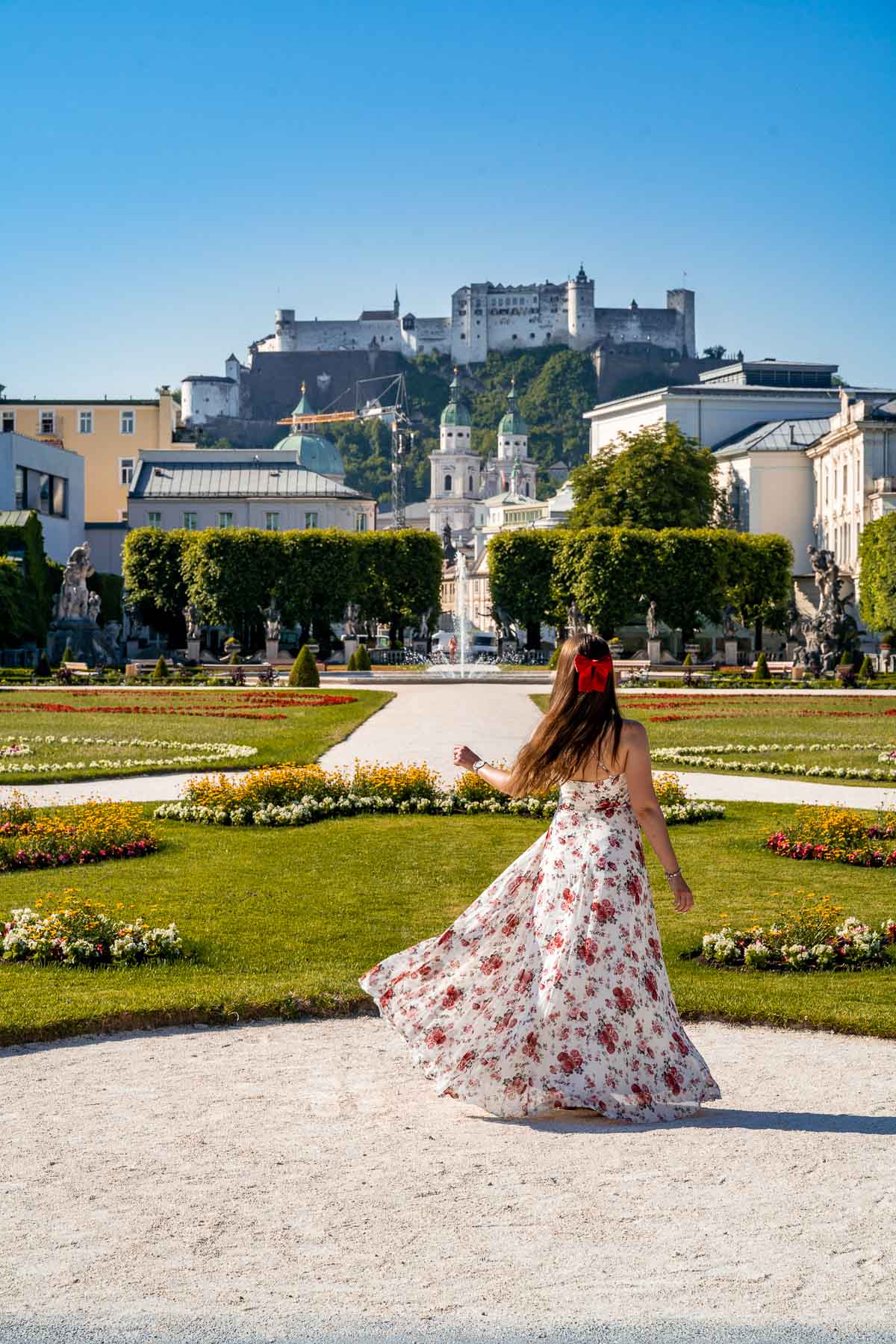
Kapuzinerkloster Viewpoint
This viewpoint is accessible via a climb up 260 steps to the Aussicht Kapuzinerberg. Your reward is the scenic views across the city towards Hohensalzburg Castle from the deck and they are worth the effort, I’d say they’re the best in town.
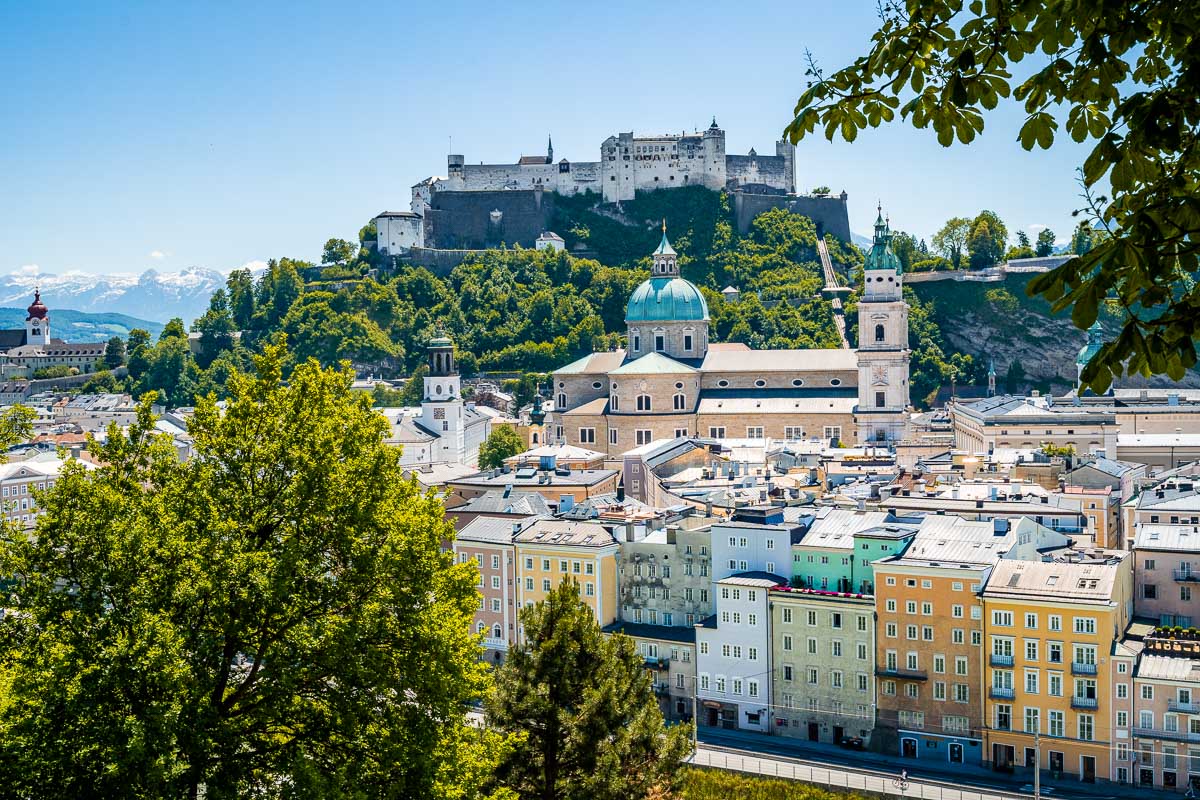
Hohensalzburg Castle
Ride the funicular up the mountain to get up close to the defining emblem of Salzburg, and one of Austria’s most iconic sights.
Hohensalzburg Castle, the largest fully preserved castle in Central Europe, is home to a portfolio of museums that you can take your pick from. However, it’s the views of the city and the looming alps that more than justify making the journey.
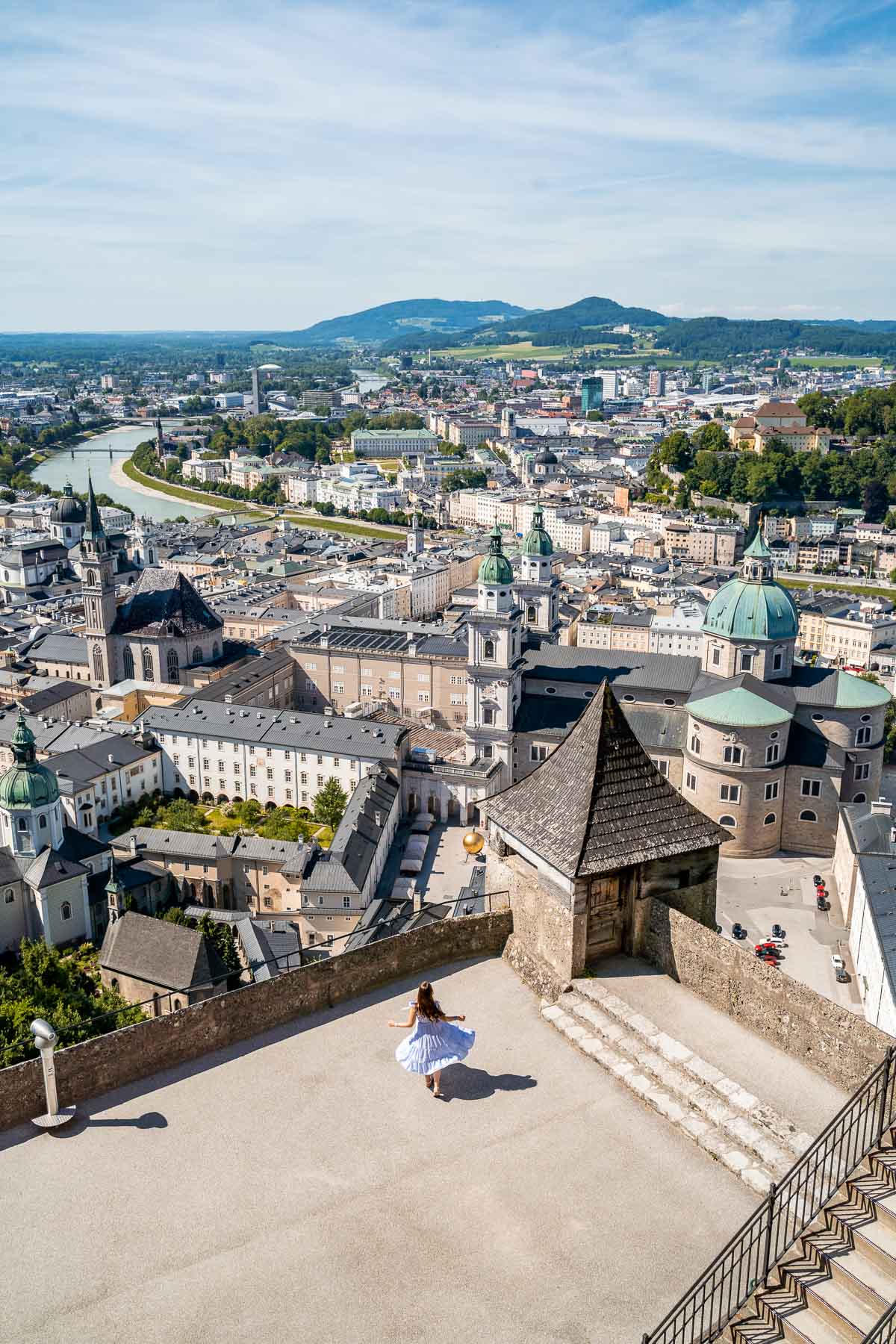
Where to eat in Salzburg
- Imlauer SkyBar : Located on the sixth floor of the Imlauer Hotel, this swanky restaurant is the perfect place to start your day in Salzburg with brunch or wrap up a perfect day of sightseeing with a decadent dinner!
- Café Bazar : After tackling the viewpoint climb, you can recoup your energy at this historic cafe that looks across at Salzburg Altstadt. Considered the home of artists and poets, the menu spans lunchtime specials, sweet treats, and moreish specialty coffees.
- S’Kloane Brauhaus : Slip inside this 400 year old building and you will be greeted with the scents of traditional Austrian delicacies. The friendly staff are on hand to guide you through the menu to find your perfect dish!
- Lazarte : It might feel odd to dine on Latin American food during your Austria itinerary, but Lazarte delivers the real deal. Add a dash of spice to your trip and experience the flavors of Mexico, Peru, and beyond at this top rated restaurant.
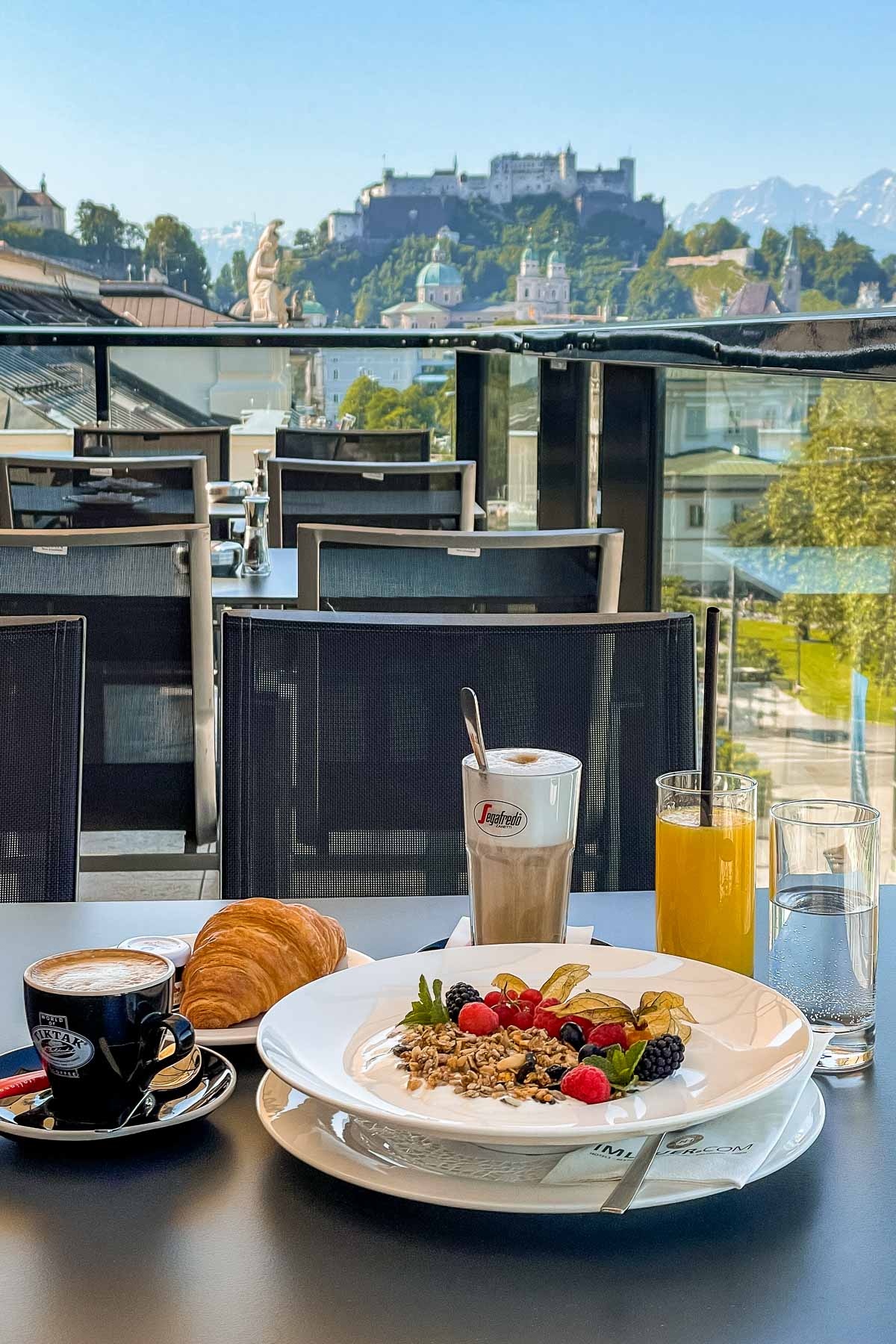
Day 7: Salzburg to Zell am See
The distance from Salzburg to Zell am See via the specified attractions is 120 km (75 miles) and the drive time is approximately 2 hours. Tonight you will need to book accommodation in the little town of Zell am See-Kaprun for 2 nights.
Gollinger Waterfall
Driving time: 35 minutes (28 km/17 miles) from Salzburg to Gollinger Waterfall
Head to Parkplatz Gollinger Wasserfall where you can leave your car and walk to this remarkable 75 meter (246 feet) waterfall which forms two tiers as it crashes down the cliff from the forest.
Between the months of May and October, you must pay €5 to visit the waterfalls on top of the parking fee which is also €5. You’ll need to drive around 35 minutes to get to the waterfall from Salzburg which makes it one of the best day trips from Salzburg.
There are different viewpoints along the waterfall and you can even hike to the top which I 100% recommend! It takes around 10-15 minutes to reach the lower viewpoint while it will take you approximately 35-40 minutes if you want to go all the way to the top.
The waterfall is super strong so be prepared to get a little bit wet! If you decide to go up, you’ll find a bridge that crosses over the water so that you can get very close to the water spray. It’s recommended to wear sneakers or hiking boots as the trail gets wet and slippery due to the mist.
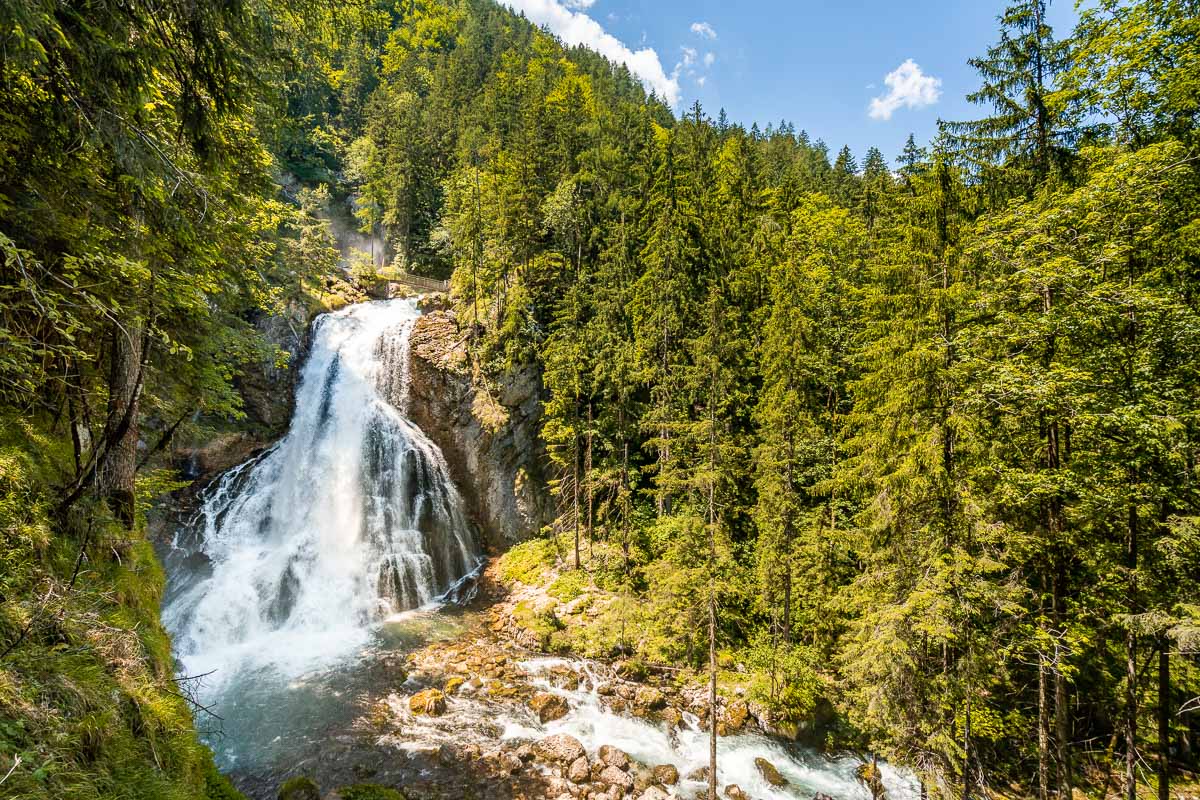
Driving time: 7 minutes (3.5 km/2 miles) from Gollinger Waterfall to Parkplatz Bluntautal
Another day, another magical lake nestled between mountains and forestry to add to your Austrian road trip! Bluntausee changes color depending on the time of day you visit and what the weather is doing, so it might be emerald or sapphire tinted.
You can follow the hiking trail around the perimeter in less than one hour however swimming in the water is forbidden.
Since it’s only 3.5 km (2 miles) from Gollinger Waterfall, you can easily walk from one place to the other but if you’d rather drive, you can leave your car at Parkplatz Bluntautal which is the closest parking lot to Bluntausee. From the parking lot you’ll need to hike for around 30 minutes to reach the lake.
The trail is completely flat so the hike itself is really easy and it goes through a beautiful forest and crosses a crystal clear river. It’s absolutely worth visiting Bluntausee just for the scenery alone!
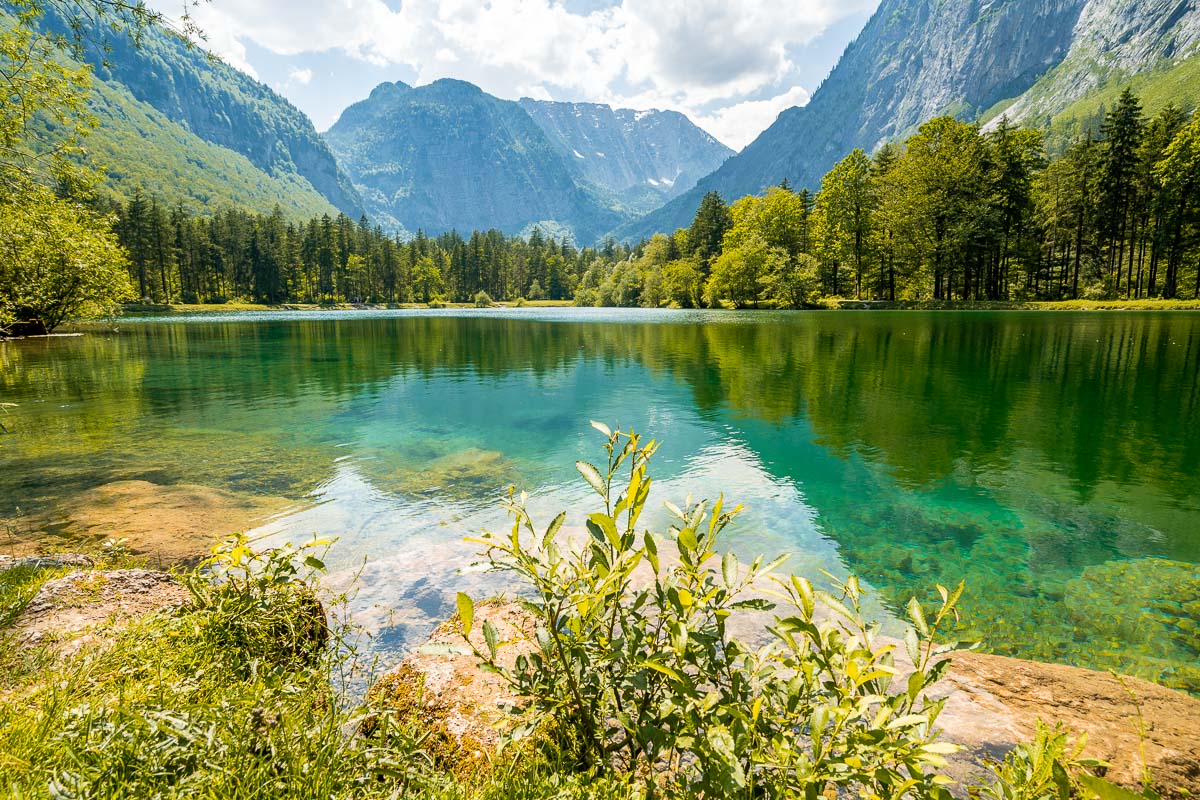
Hohenwerfen Castle
Driving time: 20 minutes (18 km/11 miles) from Parkplatz Bluntautal to Hohenwerfen Castle
In a country that is overflowing with beautiful castles, this one really takes the biscuit and is an essential sight during your 10 days in Austria! The hilltop fortress of Hohenwerfen Castle has stood in this spot for over 900 years and from the complex, you can look down at the Salzach River and across at the surrounding mountains and woodland.
Access to the castle is via funicular or a short but steep 25-minute hike. Once at the fortress, you can observe a demonstration of the resident birds of prey in addition to exploring the museums.
There are always a number of temporary exhibitions which change throughout the year and seasonal events are hosted on the grounds. Entrance to the castle costs €10.40 and if you want to take advantage of the elevator, you can buy a combo ticket for €14.40.
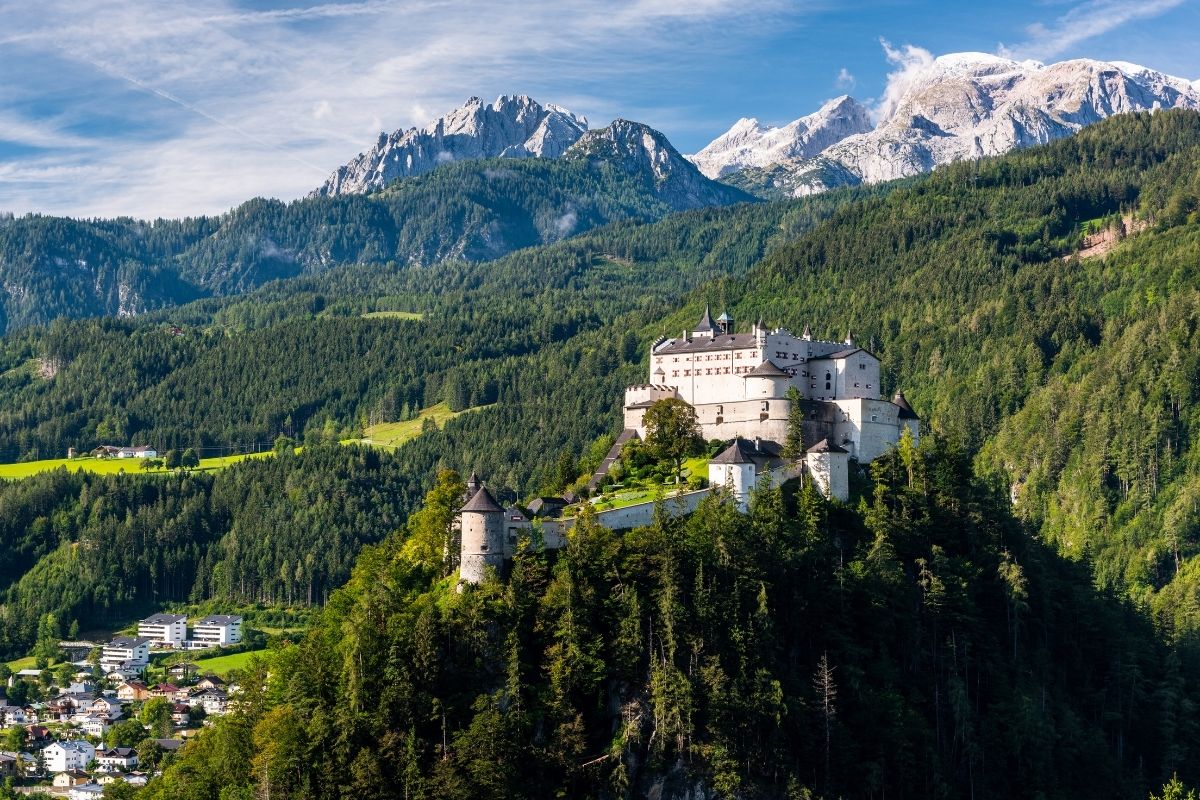
Zell am See-Kaprun
Driving time: 50 minutes (57 km/35 miles) from Hohenwerfen Castle to Zell am See-Kaprun
Today’s final destination is Zell am See-Kaprun, a small town that sits on the shore of Lake Zell (Zeller See). The town is the gateway to the ski resorts and slopes of the Schmittenhöhe mountain that looms over the town and is accessible via cable car if you wish to take in the views.
You can go for a walk or hire some bicycles and cycle along the esplanade that begins at the southwest of the lake and skirts the circumference of the water.
Down at the south corner, you also have the option to rent kayaks or stand up paddleboard and float your way across the lake. There are a number of pretty parks dotted along the lakeside where you can enjoy a picnic and the town has a good spread of restaurants and hotels.
Where to stay in Zell am See
Zell am See-Kaprun is small but it does have a substantial number of hotels and guesthouses. As with Hallstatt, I encourage you to book accommodation way ahead of your Austria road trip and look further out of town if needs be.
Here are my recommendations for where to stay in Zell am See-Kaprun for two nights.
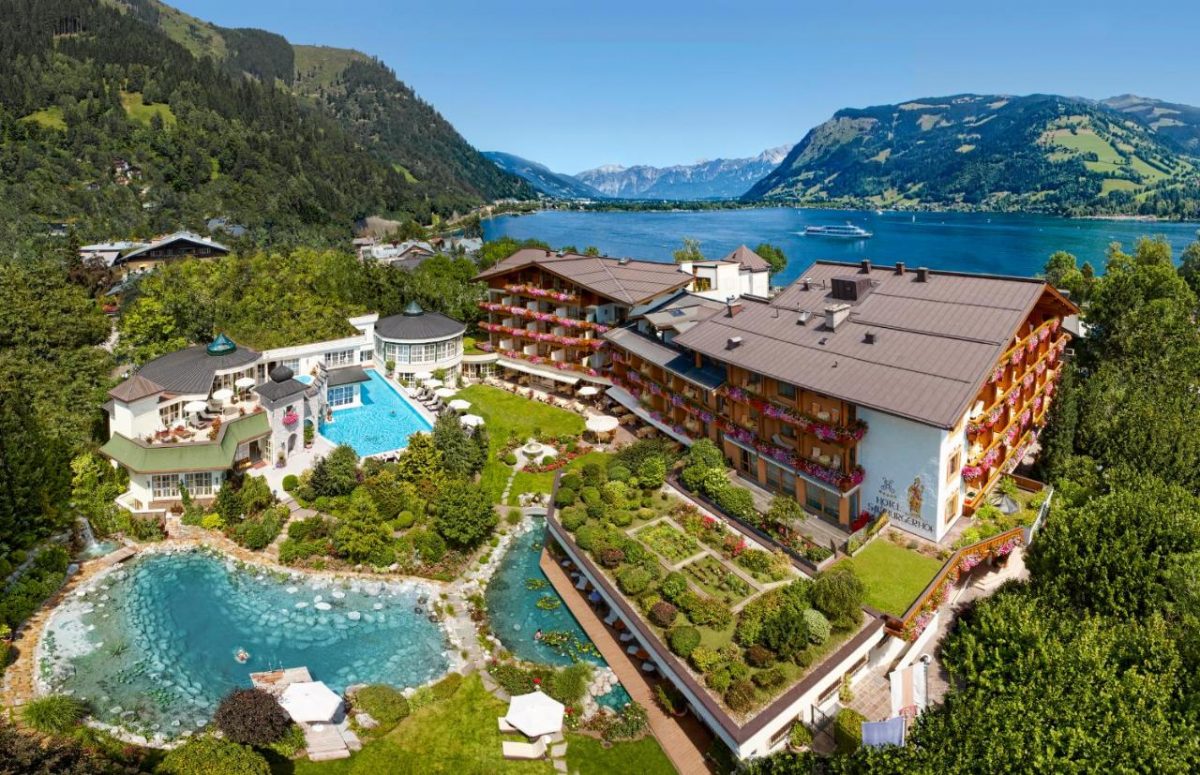
LUXURY – Salzburgerhof Wellness-, Golf- und Genießerhotel
This luxurious, family-run spa, golf, and pleasure hotel offers unique holiday experiences in a beautiful location in Zell am See. Surrounded by a splendid natural landscape, the Salzburgerhof combines 5-star comfort with 4 lilies in the Relax Guide for its spa quality and the culinary pleasures of 3 toques by Gault Millau.
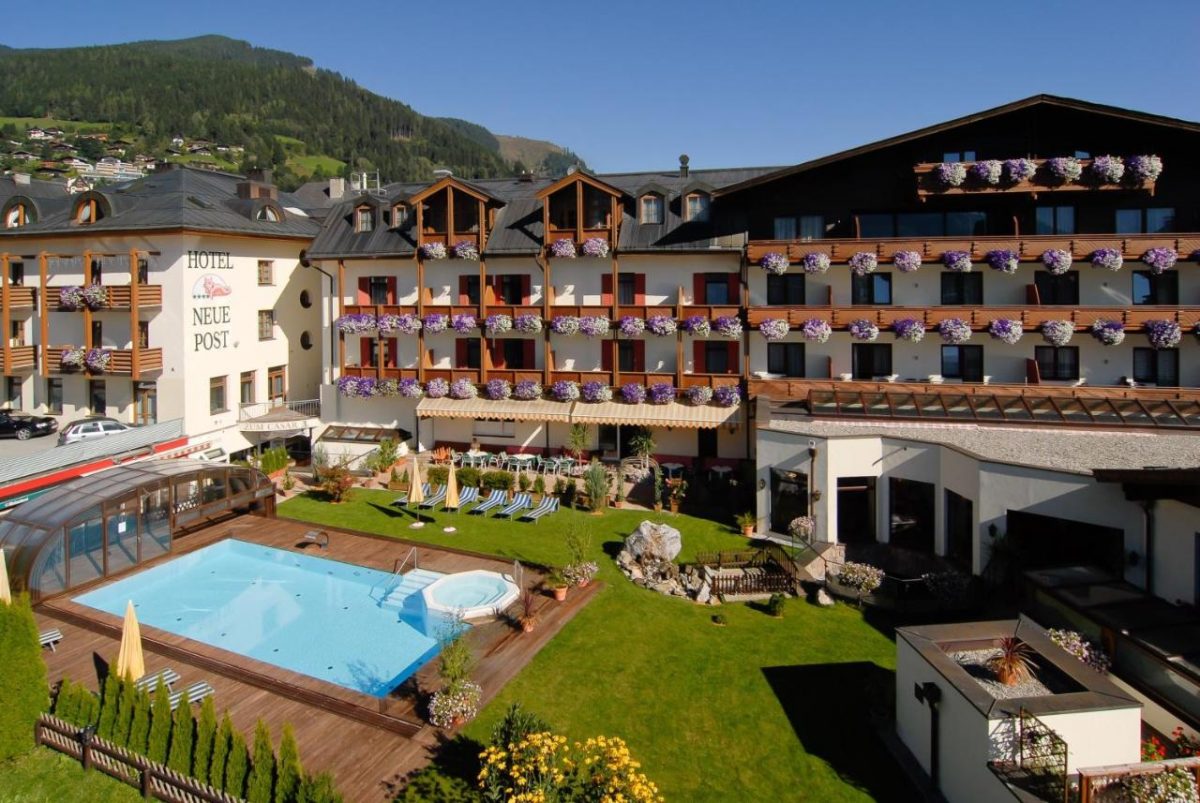
MID-RANGE – Hotel Neue Post
Only a 3-minute walk away from the Zeller Bergbahn cable car, which provides access to the Schmittenhöhe skiing and hiking area, Hotel Neue Post enjoys an exceptional location in the heart of the old town of Zell am See.
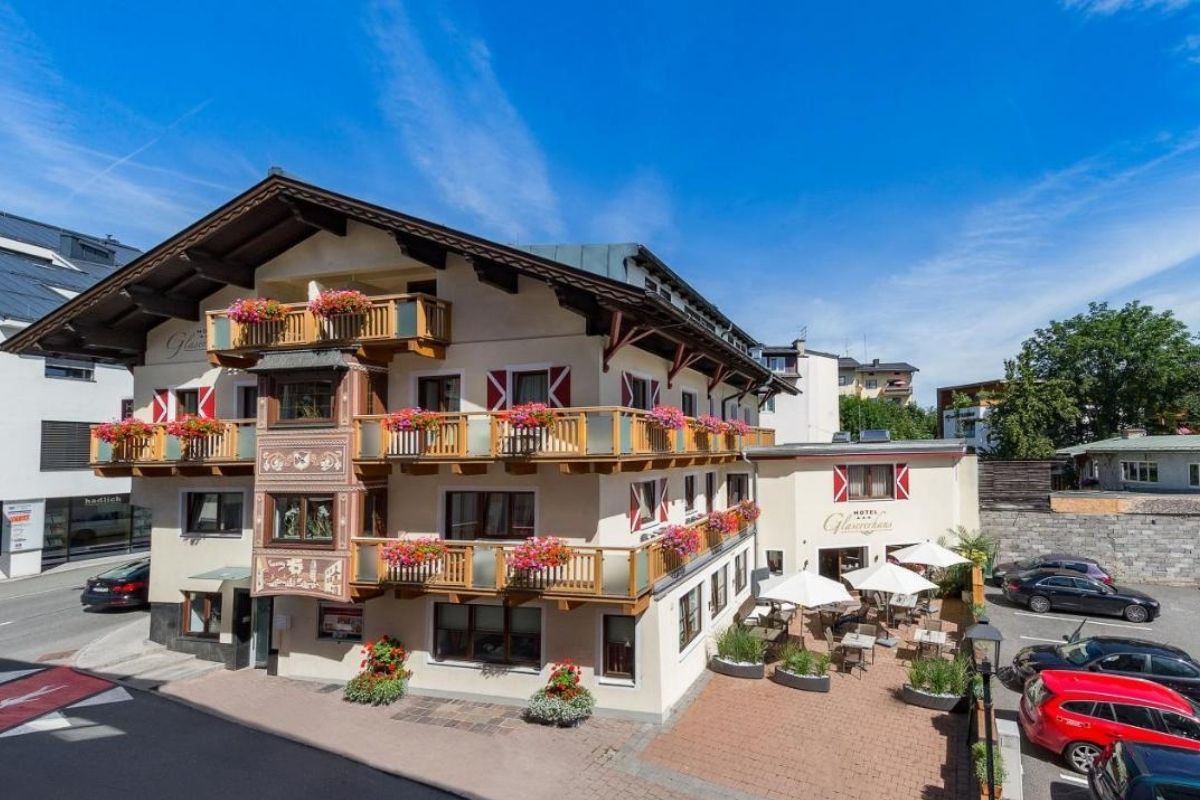
BUDGET – Hotel Glasererhaus
Just a 5-minute walk from the shore of Lake Zell in the heart of Zell am See, Hotel Glasererhaus offers individually furnished rooms, a wellness area, and free WiFi. Most rooms additionally come with a balcony featuring a seating area.
Day 8: Highlights of the Kaprun Valley
Today you will explore the attractions of the Kaprun Valley before returning to your Zell am See accommodation for a second evening.
Stausee Mooserboden
Driving time: 20 minutes (16.5 km/10 miles) from Zell am See-Kaprun to Kaprun Stauseen Parkhaus
Stausee Mooseroden is one of two high-altitude reservoirs and dams in the Kaprun Valley that resemble fjords. At 2,000 meters (6,562 feet) above sea level, the water is a startling shade of turquoise that contrasts against the circling cliffs and snow-capped peaks.
The dam wall at the Moserboden is 107 meters (351 feet) high and almost 500 meters (1,640 feet) long.
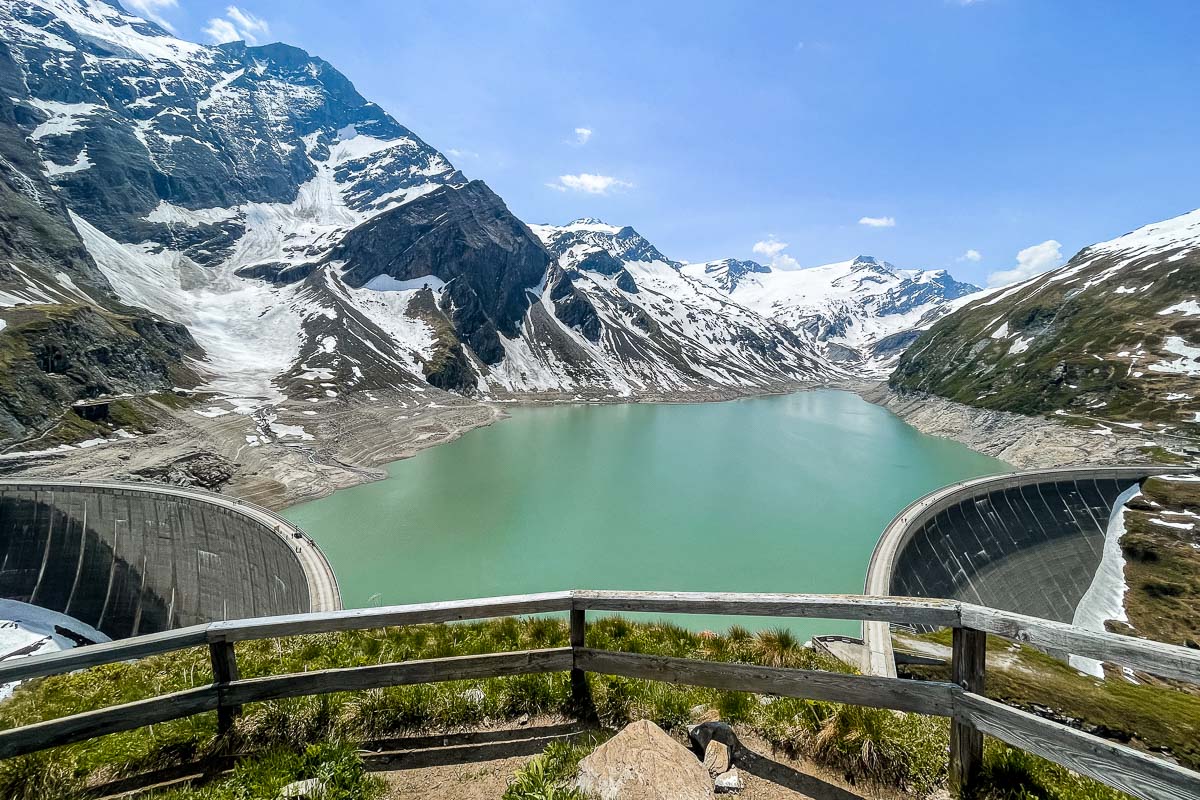
Unfortunately, you can’t drive all the way up to Stausee Mooserboden, so you’ll need to leave your car at Kaprun Stauseen Parkhaus (it’s free) and use the shuttle buses from there.
The parking house has 11 floors and if there’s enough free space, it’s worth driving all the way to the top because that’s the direction you’ll need to go in order to find the ticket office and the shuttle buses. If you park on the lower levels, you’ll need to climb up the stairs to get to the top of the parking lot.
Once you purchase your ticket, you’ll need to get on the shuttle bus which will take you to a very cool open-air lift. This is the largest open lift in Europe and it will take you up on the 431 meters (1,414 feet) incline within minutes.
After that, you’ll need to board another shuttle bus which will take you all the way to the reservoir. The whole process takes around 45 minutes and a return ticket costs €28 per person.
During your exploration, you can follow short hiking trails to get a full perspective on this dramatic landscape from the surrounding viewpoints. If you’re up for a challenge, you can also try some of the via ferrata routes but for that, you’ll need to have the proper gear.
If you want something easier, you can just hike up to the upper viewpoint which takes 10-15 minutes and it’s fairly easy. The route is quite narrow and steep so it’s best to wear sturdy shoes and watch out for your steps.
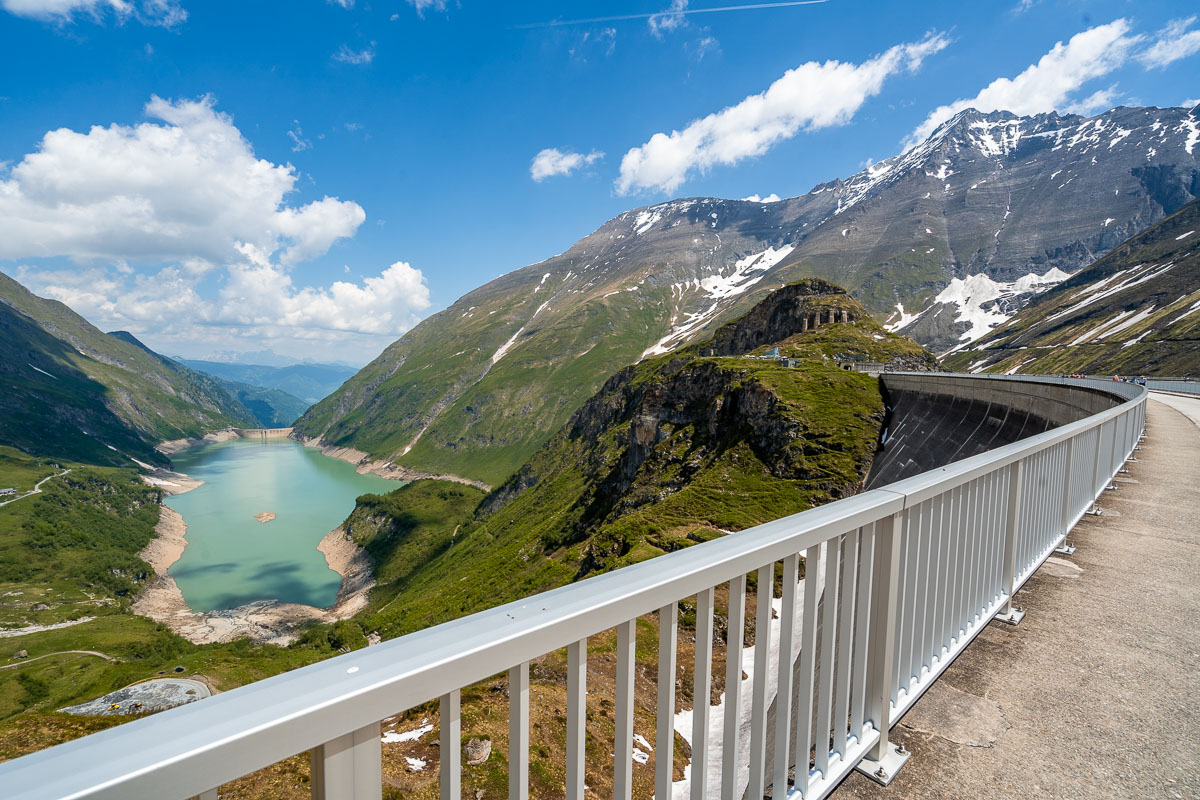
Sigmund-Thun Klamm
Driving time: 6 minutes (4.5 km/3 miles) from Kaprun Stauseen Parkhaus to Sigmund-Thun Klamm
Once you’re reunited with your rental you can drive 5 minutes along the road to the next attraction on your Austrian road trip itinerary.
Sigmund-Thun Klamm is a stunning ravine with an excellent wooden track that lets you walk past the water that thunders through the narrow chasm before culminating in a massive waterfall that falls like a veil.
You’ll find a couple of parking lots near Sigmund-Thun Klamm, the closest one is right at the crossing of Kesselfallstrasse and Klammweg. Once you park your car, you have to follow Klammweg and around 5 minutes later you’ll come across the ticket office which marks the entrance of Sigmund-Thun Klamm (an entrance ticket costs €6.50).
It takes around 20-30 minutes to go through the gorge and it’s important to note that the wooden track is one way only, you will have to take another road to get back to your car.
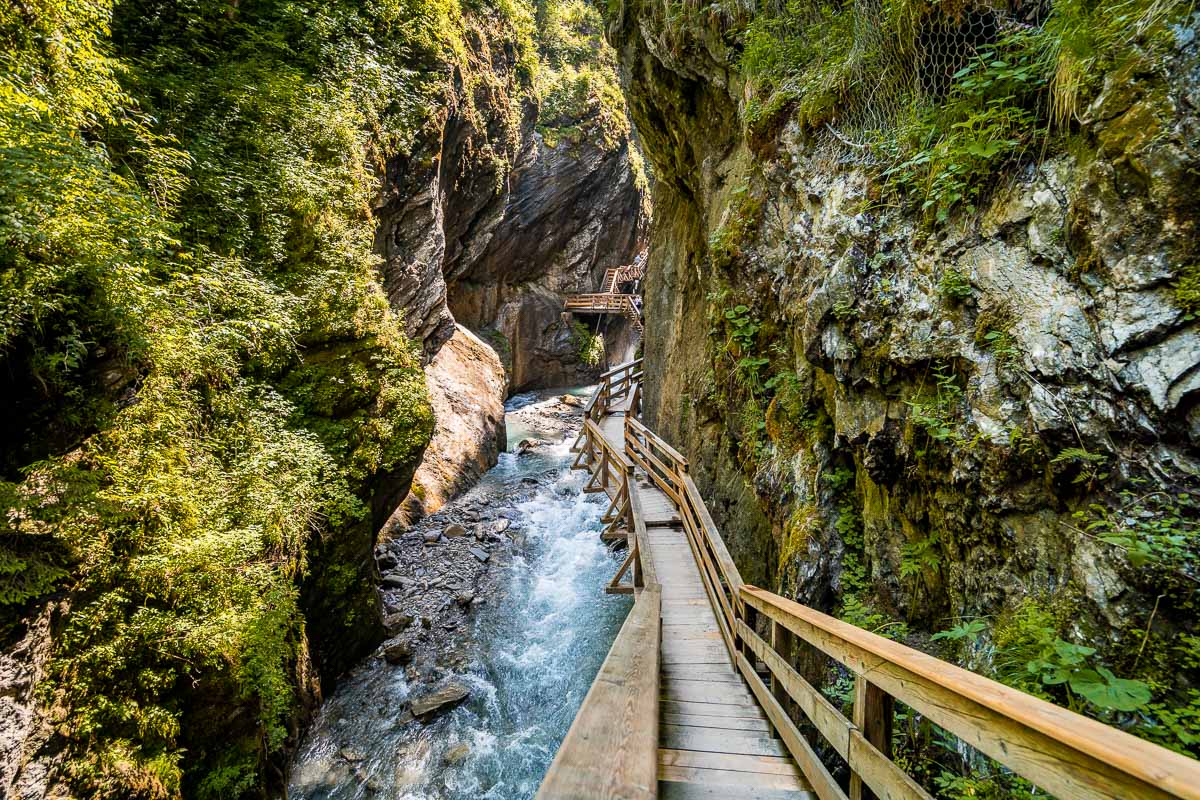
At the end of the trail you will reach another gorgeous lake called Klammsee that you can then complete a lap around. The lake is quite small and the trail around the lake is only 1.8 km (1.1 miles) so you can walk around the whole lake in 30 minutes.
All in all, you should factor around 1.5-2 hours to fully explore Sigmund-Thun Klamm and Klammsee together. There are few places where you can experience such an extraordinary spectacle of nature and it’s worth taking the time to complete the full route.
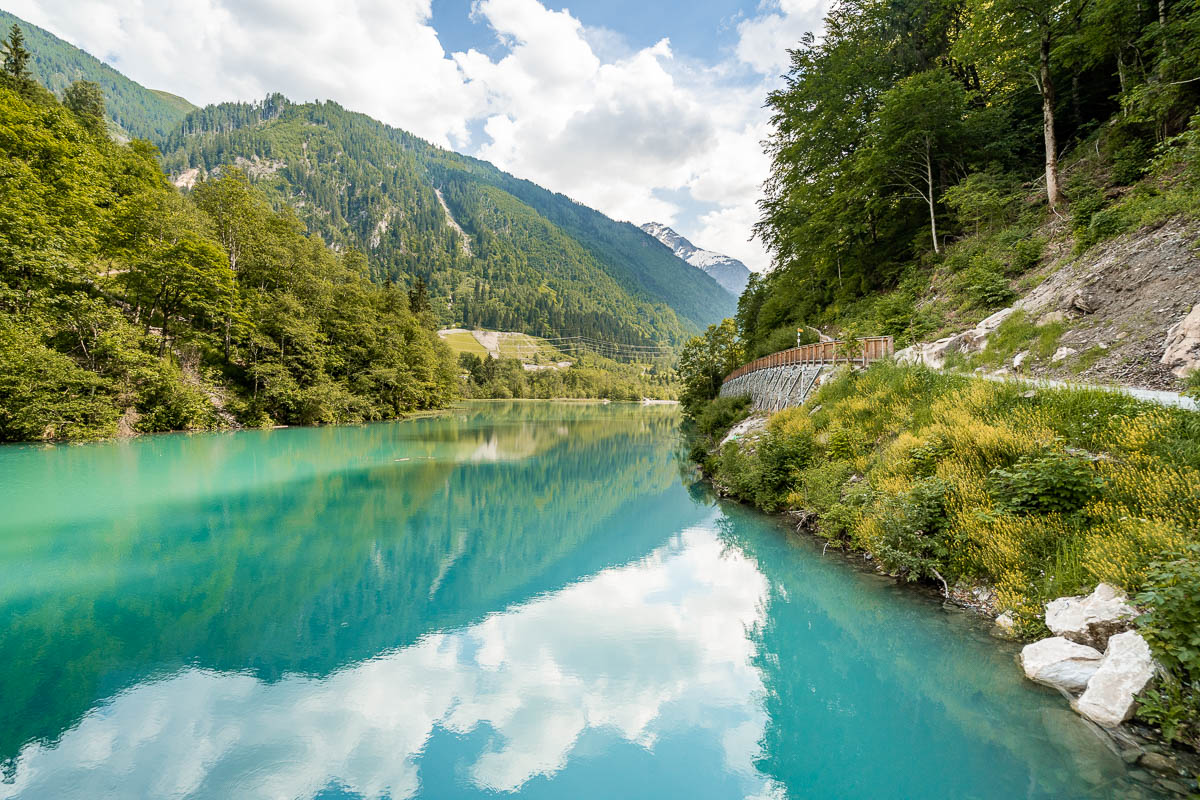
Alpine Coaster Maisiflitzer Kaprun
Driving time: 6 minutes (4 km/2.5 miles) from Sigmund-Thun Klamm to Alpine Coaster Maisiflitzer Kaprun
The next item on today’s agenda isn’t one for the fainthearted but it’s great fun! The Alpine Coaster Maisiflitzer Kaprun is essentially a rollercoaster combined with a toboggan.
Once comfortable in your two-seater sled, you will charge down the track reaching speeds of up to 40 km/h (25 mph), and screaming is fully acceptable.
The ride is open year-round and you can opt for a single ride for €14 or pay for 5 for €59.50.
Dinner at Mitterberghof Jausenstation
Driving time: 25 minutes (15 km/9.5 miles) from Alpine Coaster Maisiflitzer Kaprun to Mitterberghof Jausenstation, then 15 minutes (9 km/5.5 miles) back to Zell am See-Kaprun
After a fairly strenuous and hair-raising eighth day of your Austria road trip, you might just want to flop into your hotel bed. However, if you can summon the energy to drive a little bit more, this awesome restaurant is worth the 15-minute drive, especially on a balmy evening.
From the outdoor dining terrace, you can drink up views across the Kaprun Valley and Zeller See. Although, on overcast days you might be seated above the clouds!
You’ll find wholesome Austrian fare on the menu as well as an excellent variety of desserts. The restaurant is actually part of a family-run inn and you could even choose to stay here rather than in Zell am See if you prefer.
In case you’re not hungry or you have other dinner plans, it’s still worth driving up to the restaurant for the view alone.
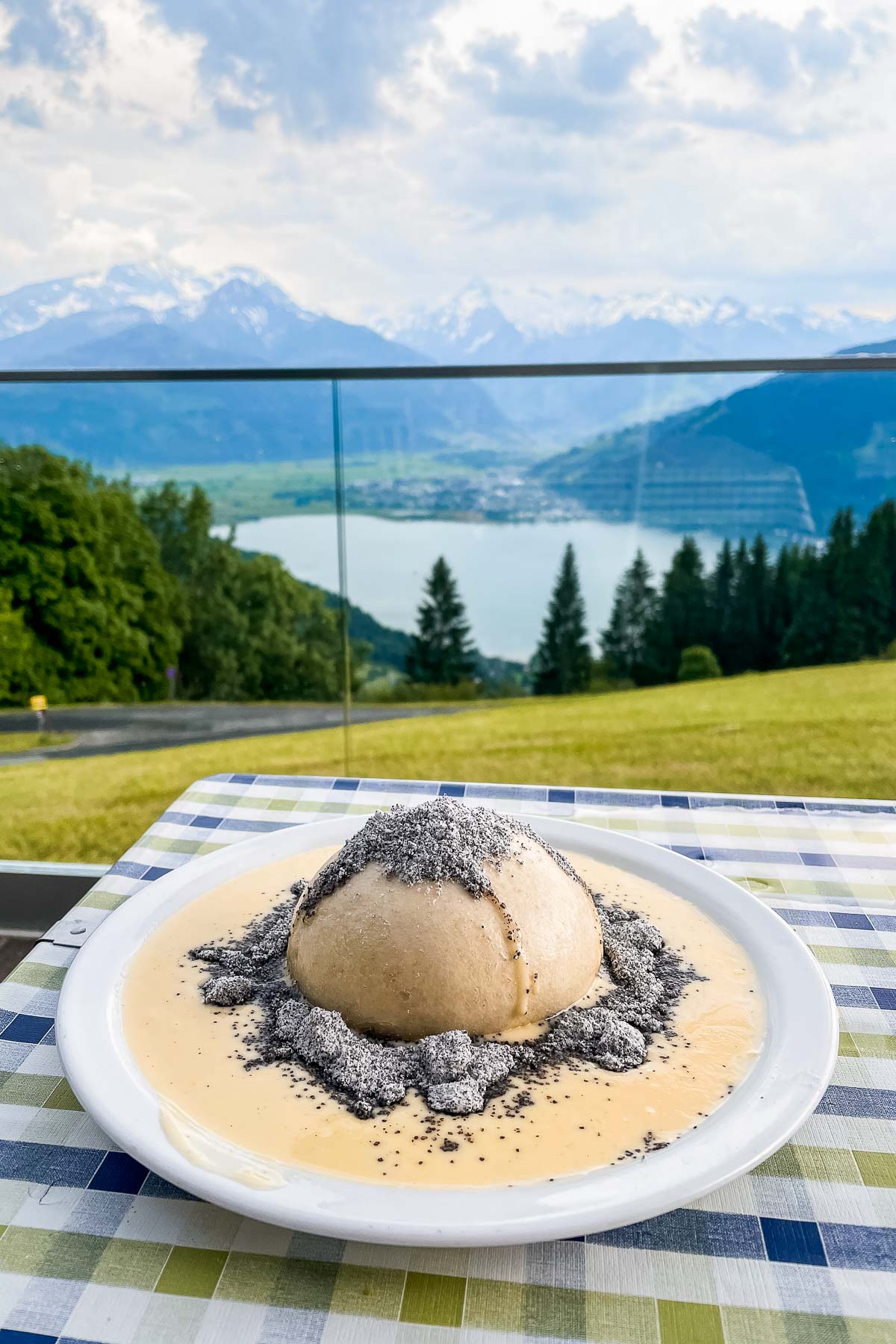
Day 9: Zell am See to Mayrhofen
The journey time from Zell am See to Mayrhofen via the below attractions is just shy of 2 hours, and the distance covered is 100 km (62 miles). You will need to book one night of accommodation in Mayrhofen for the penultimate evening of your Austria road trip itinerary.
Krimml Waterfalls
Driving time: 55 minutes (55 km/34 miles) from Zell am See-Kaprun to Krimml Waterfalls
If you were impressed by the ravine yesterday then just wait until you clap your eyes on what is said to be the highest and most powerful waterfall in Europe!
You’ll find plenty of parking lots near the Krimml Waterfalls, the closest one is P4 so if you find free space there, go for it! There is a small tunnel going under the main road right next to the P4 parking lot, you’ll need to follow this road to get to the ticket office.
An entrance ticket costs €10.20 and if you want to visit the nearby Water Worlds Krimml museum as well, you can purchase a combo ticket for €13.90.
The Krimml waterfalls tumble over several layers and you can decide how far you want to hike. The first viewpoint is accessible via a 15-minute walk from the parking and this alone is impressive.
However, if you want to walk all the way to the summit of the falls, it will take 2-2.5 hours to complete the 380 meters (1,250 feet) hiking trail, and then you’ll need to climb back down so factor in a 5-hour round trip. It does get steep and slippery due to the spray, so excellent hiking boots and a reasonable level of fitness are required.
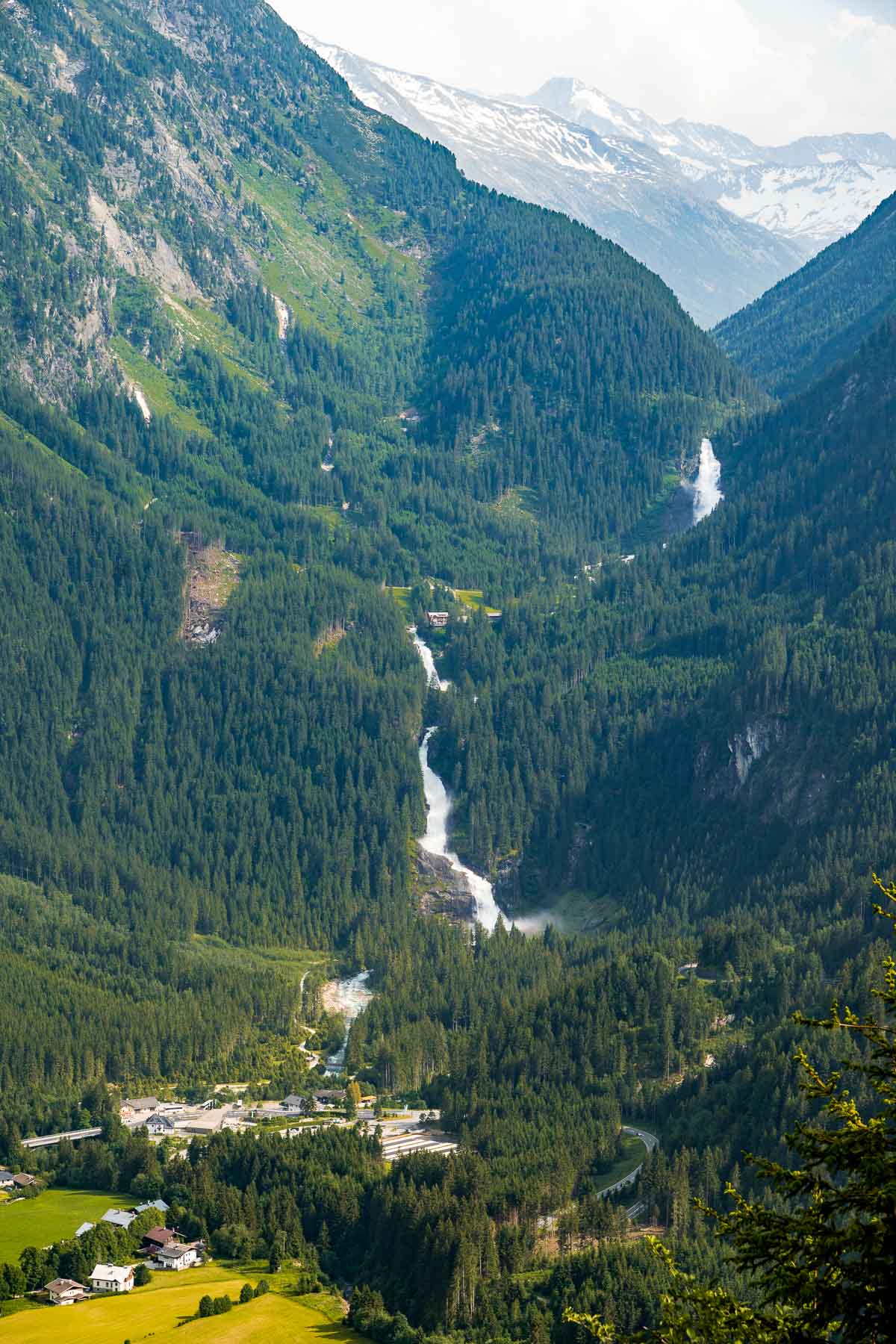
Driving time: 55 minutes (44 km/27 miles) from Krimml Waterfalls to Mayrhofen
After an intense morning, you can look forward to checking into your hotel in Mayrhofen and taking a leisurely afternoon. It’s a further hour to reach Mayrhofen from the waterfalls if you take Gerlos Strasse.
Since this is a private road, you’ll need to pay €11 per car for the road usage. Sometimes this road gets closed due to weather circumstances so it’s worth checking it in Google Maps in advance before you go in that direction.
If the road is closed or you don’t want to pay, you can take a detour and use another road to get to Mayrhofen, but it will take you 2 hour and 15 minutes this way.
Situated in the Zillertal Valley, in the province of Tyrol, Mayrhofen is another feeder town for the local ski resorts. You can ride the gondolas from the town up to the resorts where you’ll find loads of hiking trails if you have the energy, but the views are lovely on their own.
The Pfarrkirche Mayrhofen is a cute church and you can take a stroll along the river in town.
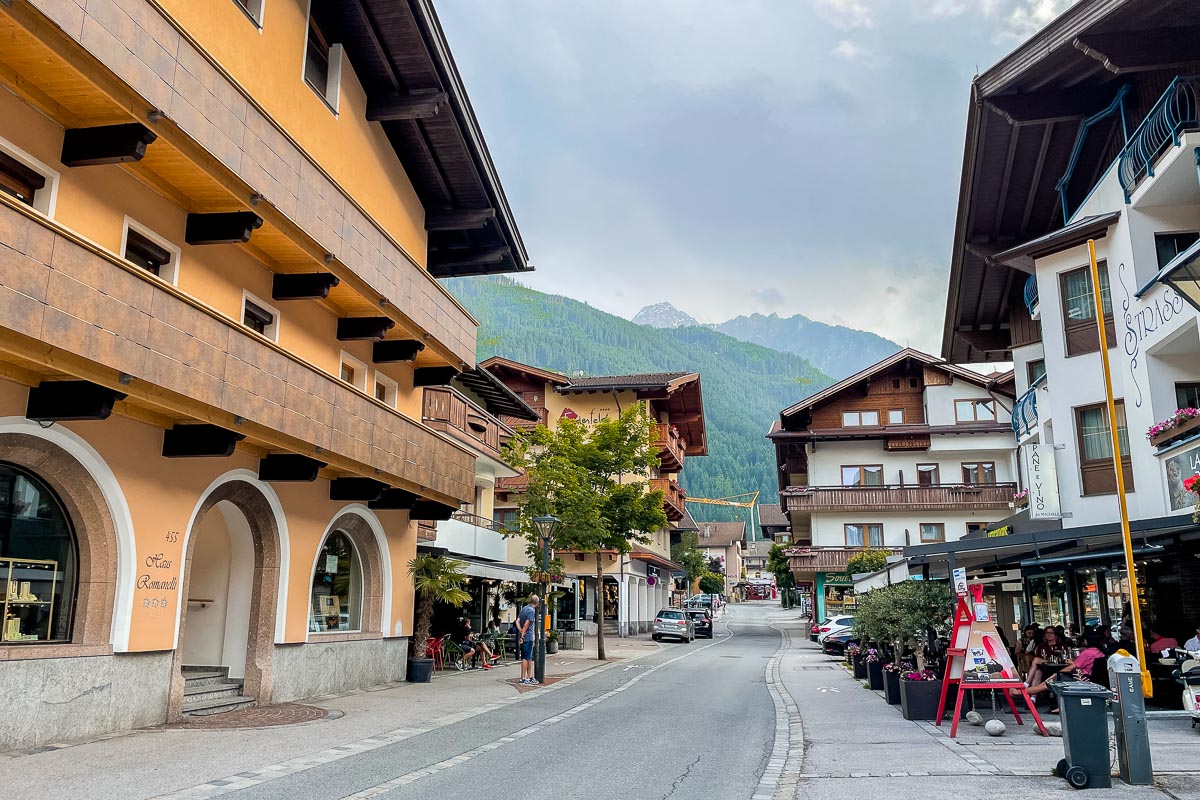
If you need a restaurant recommendation for dinner, check out Goldkind . They’re the number one restaurant in Mayrhofen according to TripAdvisor and let me tell you, they’re not wrong! The restaurant caters to everyone from vegans and vegetarians to meat lovers.
All the meals we tasted there were super delicious and the prices were reasonable as well (nothing too fancy or expensive). Give them a try, you won’t regret it!
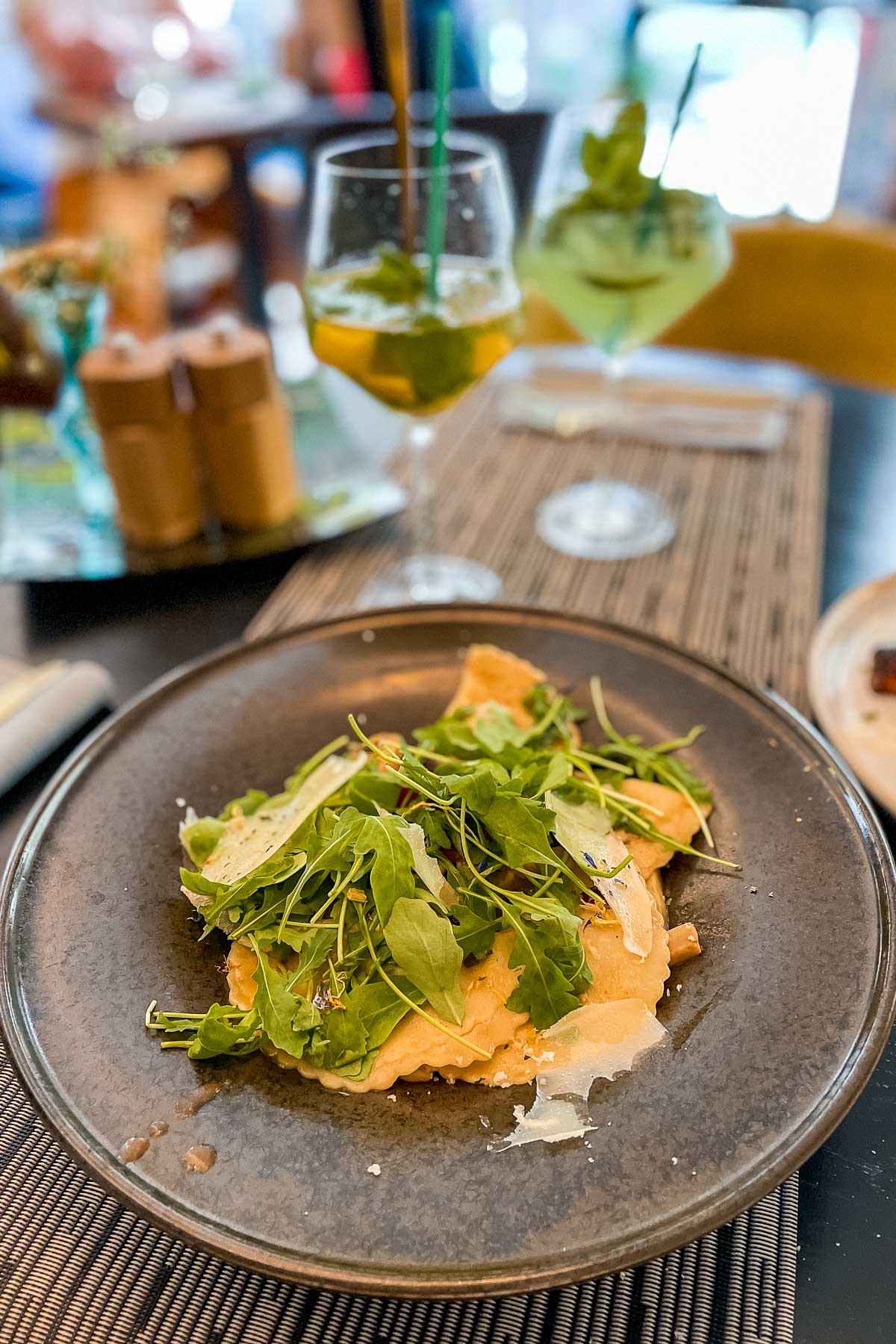
Where to stay in Mayrhofen
As a lively ski town, Mayrhofen features a good spread of accommodation options. The following places are all centrally located and provide free on-site parking which is perfect for your one night in Mayrhofen.
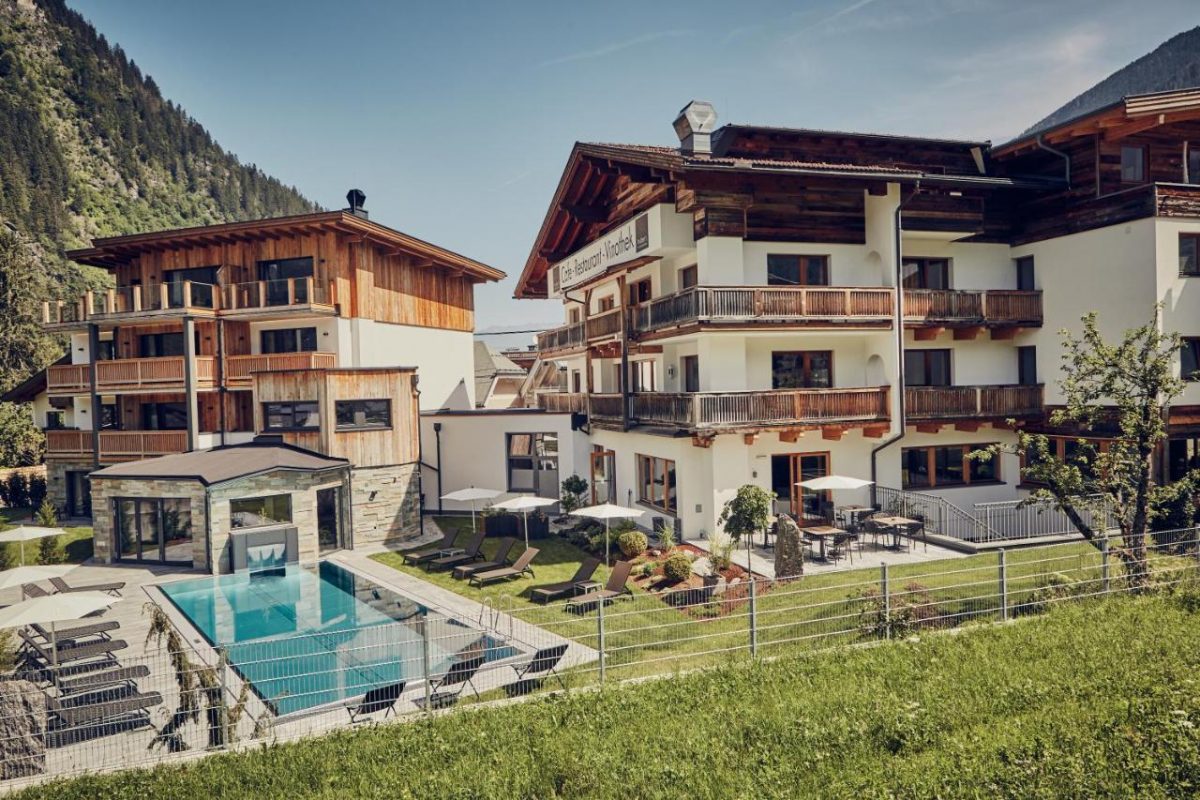
LUXURY – Huber’s Boutique Hotel
This stylish hotel comes with all the luxury trimmings including a pool, spa, and scrumptious breakfast. The top-tier suites feature idyllic freestanding bathtubs and spacious balconies.
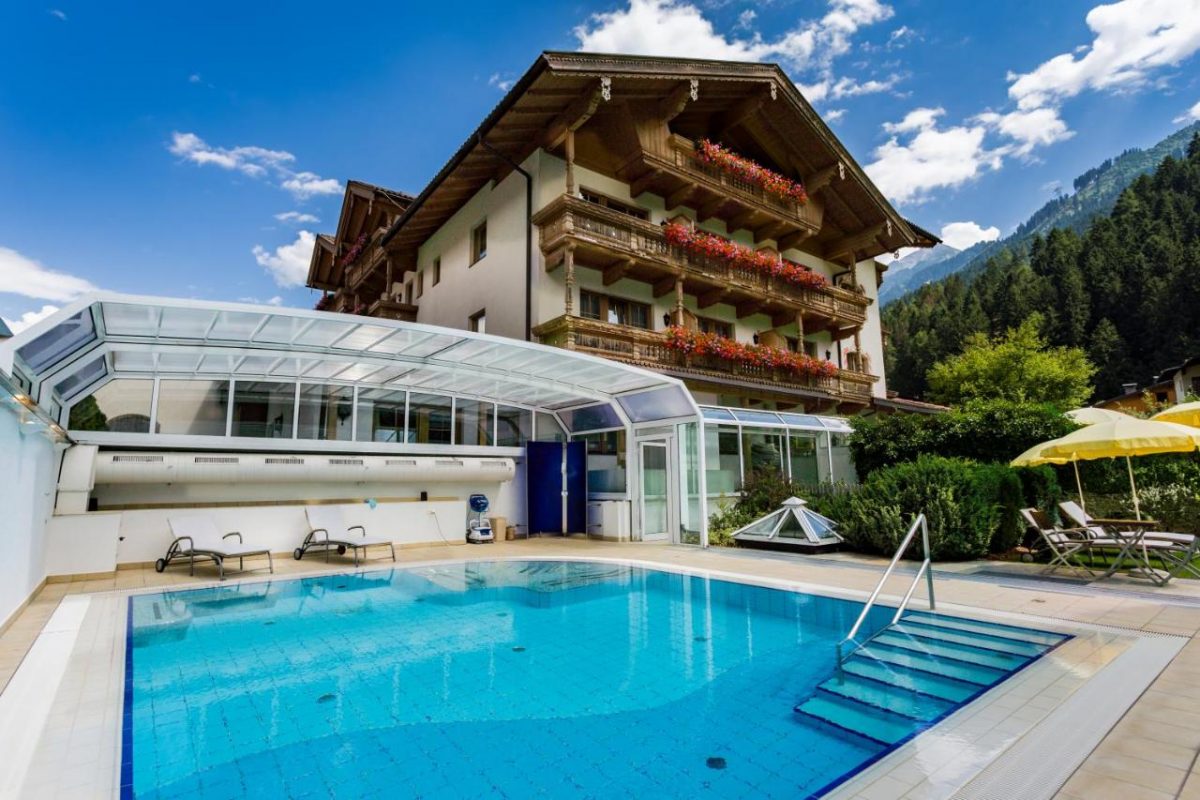
MID-RANGE – Gut Stiluppe
This beautiful lodge offers a spread of rooms and suites, including ‘Romantic’ and ‘Royal’ themed choices. There is a pool, sauna, spa, and garden terrace where you can unwind.
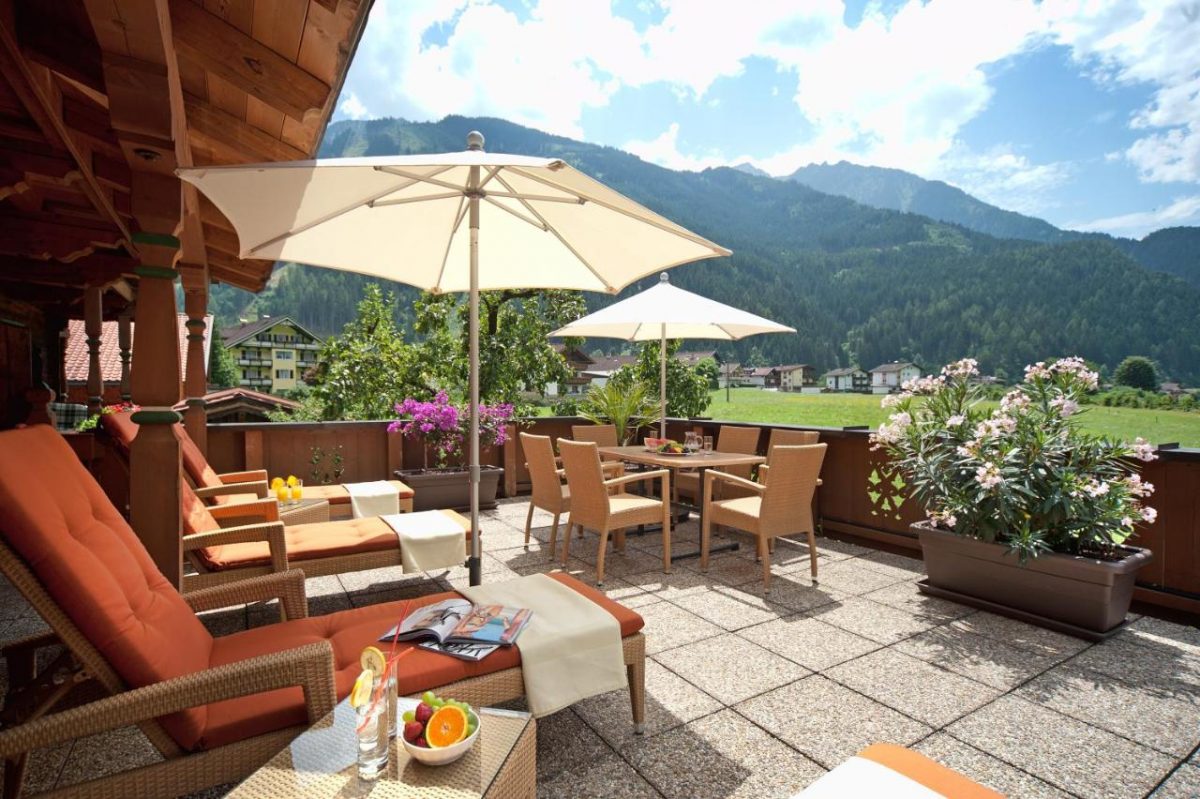
BUDGET – Brugger ApartHotel
Rooms at this inviting hotel are decorated in traditional Tyrolean style with wooden furnishings and feature a balcony, a private bathroom, and a seating area. Breakfast is included and the price is happily affordable.
Day 10: Mayrhofen to Innsbruck
Can you believe that it’s the final day of your Austrian road trip already? Today your final destination will be Innsbruck but first you’re going to take a little detour to reach one of the most epic viewpoints in Austria.
Once you get to Innsbruck, you’ll need to book a hotel for one night.
Olpererhütte
Driving time: 40 minutes (25 km/15.5 miles) from Mayrhofen to Parkplatz Schlegeis Stausee (Olpererhütte)
First up on the agenda today is a demanding hike up to Olpererhütte, a mountain refuge that sits 2,388 meters (1,273 feet) above sea level.
Olpererhütte is a 30-minute drive southwest of Mayrhofen. There is a parking lot marked as Parkplatz Schlegeis Stausee where you can leave your car as you tackle the Olpererhütte trailhead which starts a few minutes walk from the parking area.
This is another occasion where hiking boots are essential as the trail is steep and strewn with rocks and even some streams that trickle down the mountain which you’ll have to wade through.
The hike up will take between 2-2.5 hours and then you’ll need to make your way down carefully as well so you can factor in 4-5 hours for the whole hike. This is by far the most challenging hike on your Austria road trip itinerary but trust me, it’s so worth it for the views!
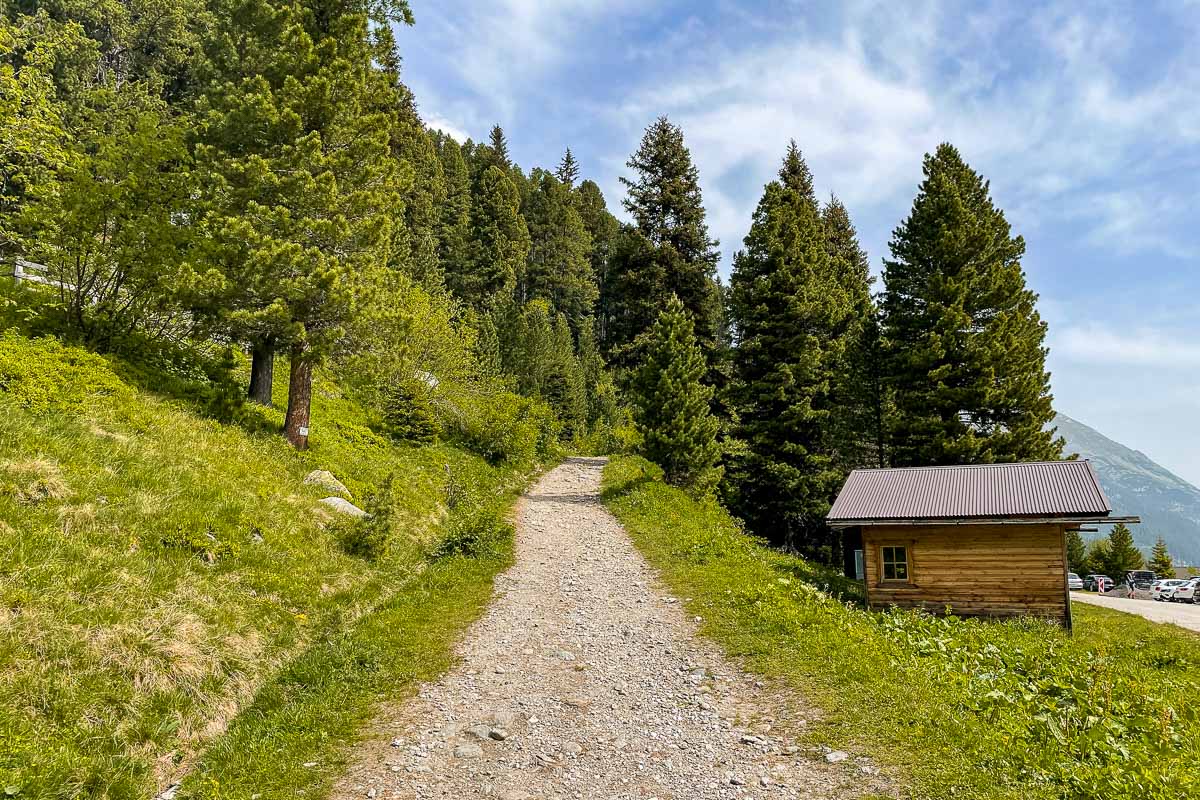
Once you reach the summit you are rewarded with breathtaking views of the landscape. You can appreciate the scenery from the Panoramabrücke Olpererhütte, which is a suspension bridge that overlooks the valley and turquoise Schlegeisspeicher down below. And of course, you can get a much-needed drink and snack at the hut.
If you do not fancy the hike then you can enjoy a more relaxing walk around the shore of Schlegeisspeicher, or even head straight to Innsbruck and spend longer there.
Ps: Before you think I’m crazy, I just wanted to let you know that I obviously did not hike up to Olpererhütte in a skirt! I was wearing proper hiking shoes with leggings and a top and I just changed to this red skirt at the bridge for the photos. Don’t underestimate this hike and please don’t try to complete it in pretty dresses!
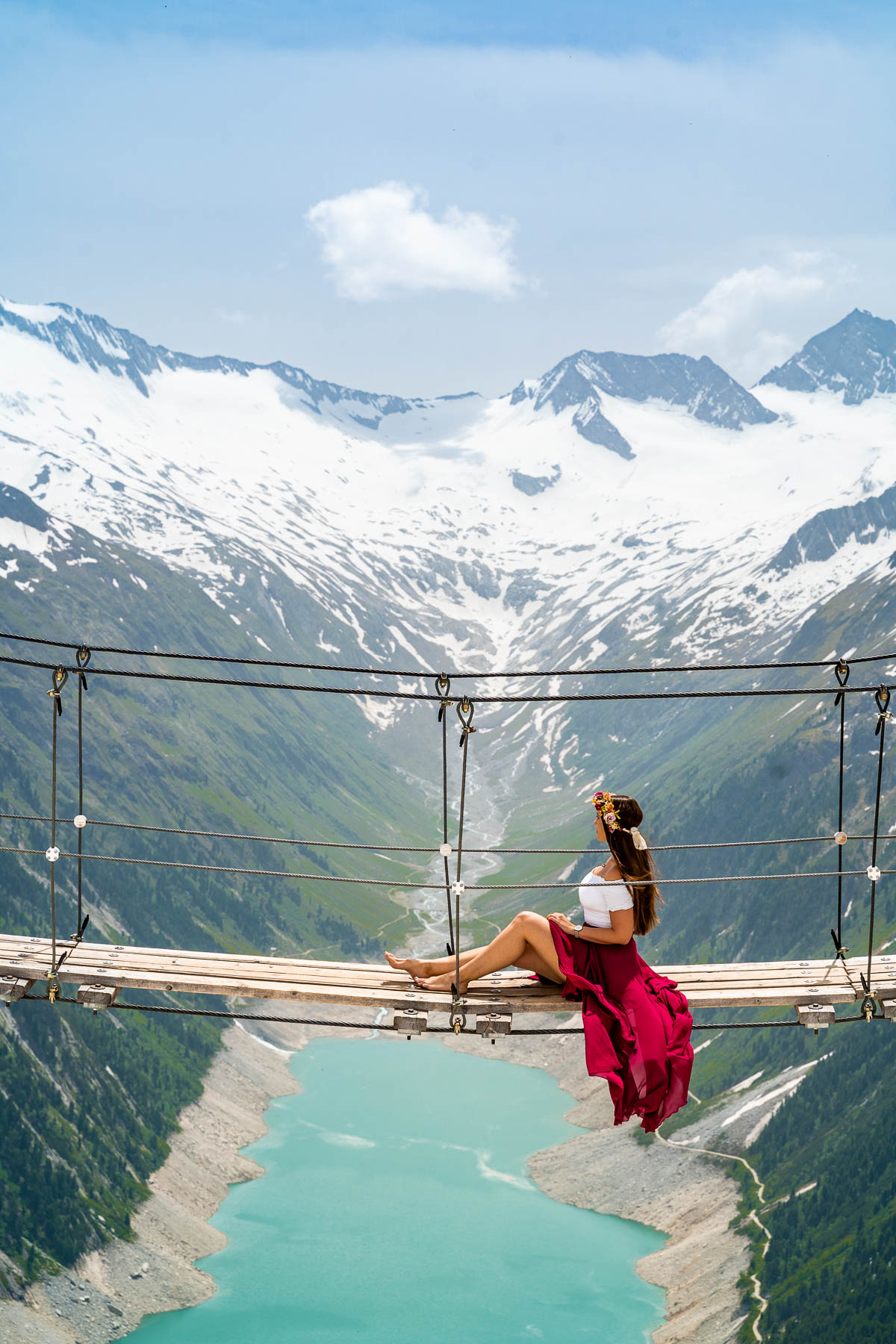
Driving time: 1 hour and 40 minutes (92 km/57 miles) from Parkplatz Schlegeis Stausee (Olpererhütte) to Innsbruck
The final destination on your Austria road trip (or first, if you’ve flipped the itinerary) is the colorful city of Innsbruck, the capital of the Tyrol province. Most of the touristic attractions are situated within the Altstadt (Old Town) and you will find monuments, museums, and restaurants galore here.
Notable sights include the 16th-century palace, the Hofburg, and the Roman-style Triumphpforte which was erected in 1765. You can walk along the River Inn or hire a bicycle while a series of cable cars whisk you away high into the Nordkette mountain range which is situated in the Karwendel Nature Park.
If you completed the whole Olpererhütte hike then you’ll probably feel super tired so I recommend just casually strolling around the Old Town and finding a great restaurant for dinner.
My personal recommendation is Gasthof Goldener Adler, which is allegedly the oldest restaurant in Innsbruck. They have a really nice terrace right in the heart of the historic old town and their menu is full of authentic Austrian delicacies.
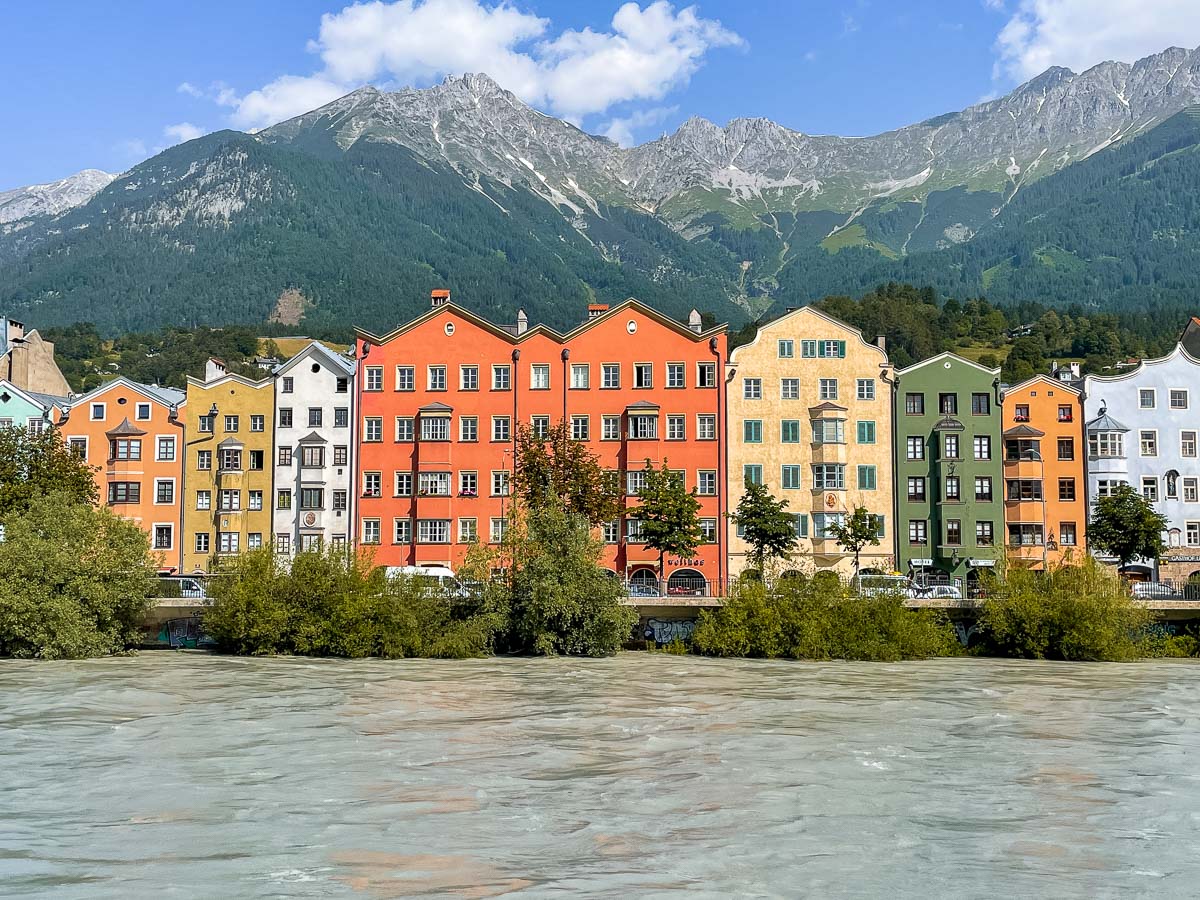
Where to stay in Innsbruck
Innsbruck is teeming with budget-friendly and luxury hotels and you can find decent deals in the city or elect to stay further afield if you are keeping your rental for the final night. Here are my top picks for where to stay in Innsbruck.
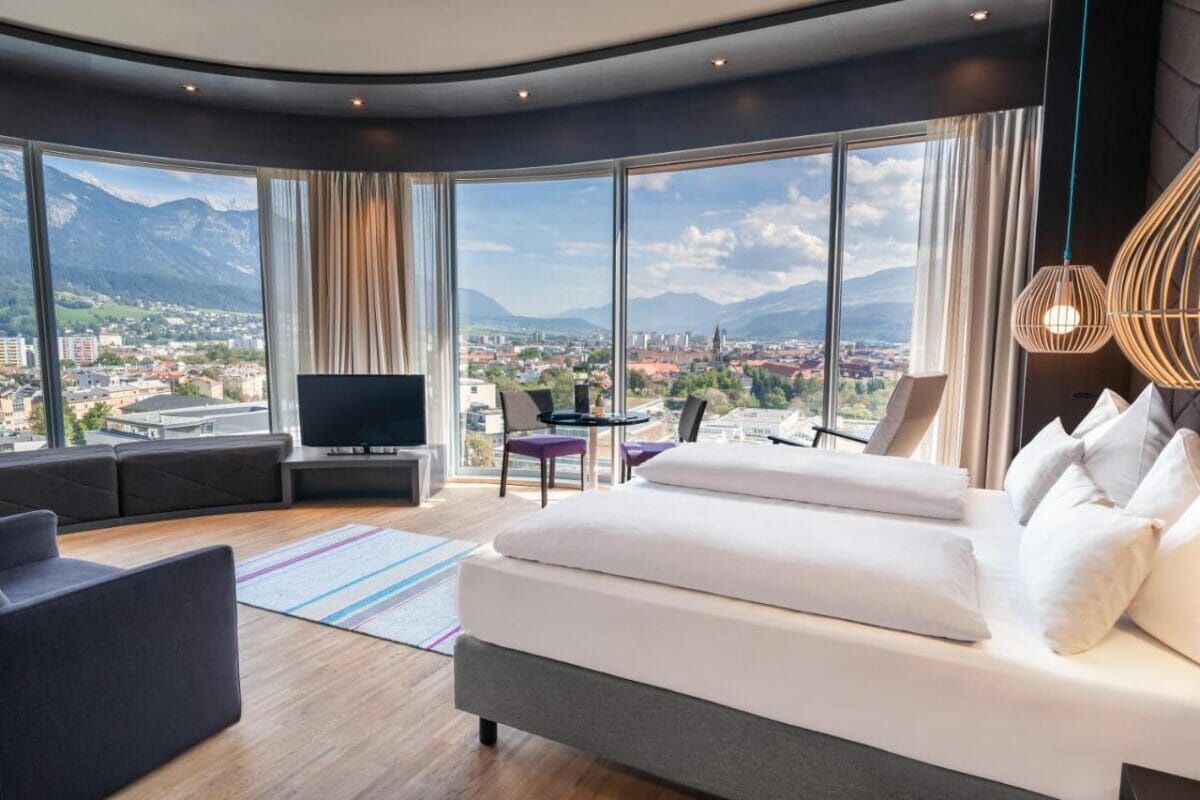
LUXURY – aDLERS Hotel Innsbruck
Being the tallest hotel in Innsbruck, aDLERS Hotel Innsbruck offers a breathtaking panorama from its stylish rooms. There is also a spa area on the 11th floor and guests can dine at the Panorama Restaurant and Bar on the 12th floor.
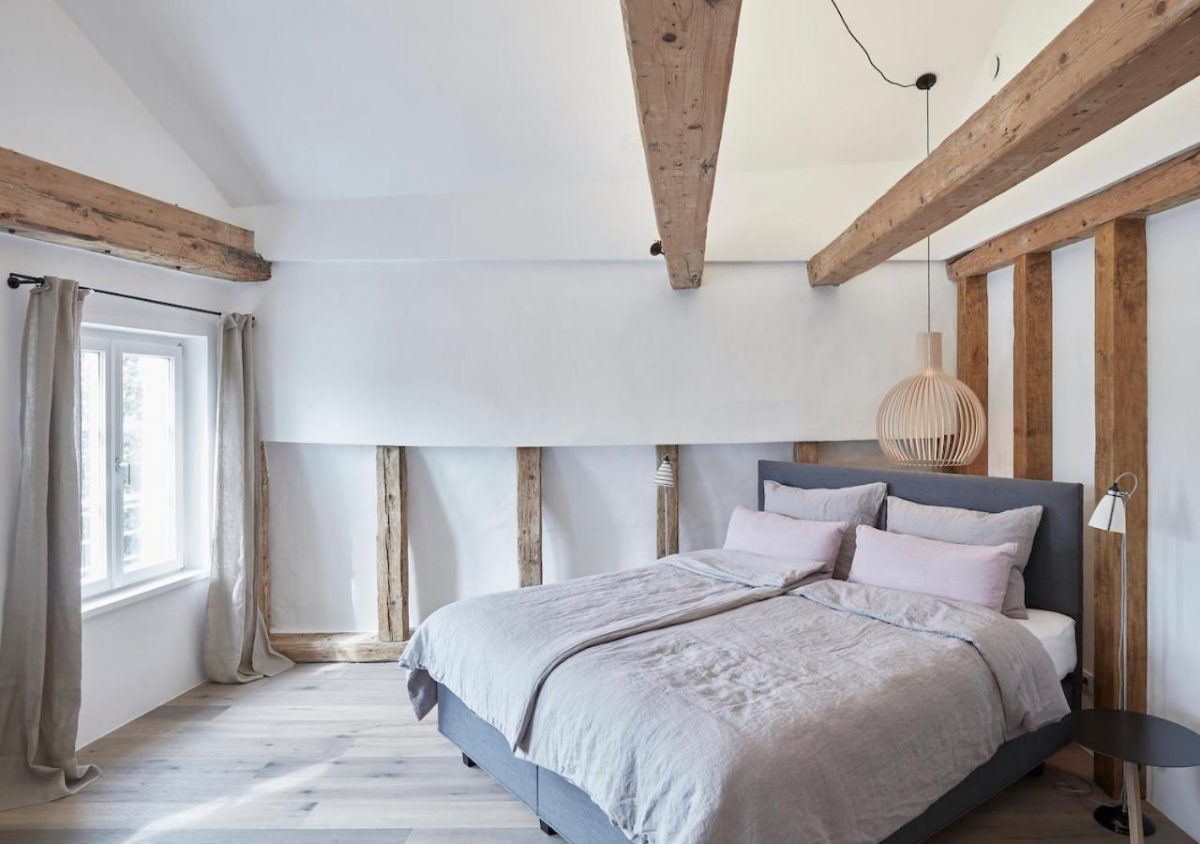
MID-RANGE – Faktorei
Sophisticated rooms weave minimalism with a rustic touch and a number are equipped with a balcony. On site you will find a bohemian cafe and a lovely bar where you can toast the end of your trip!
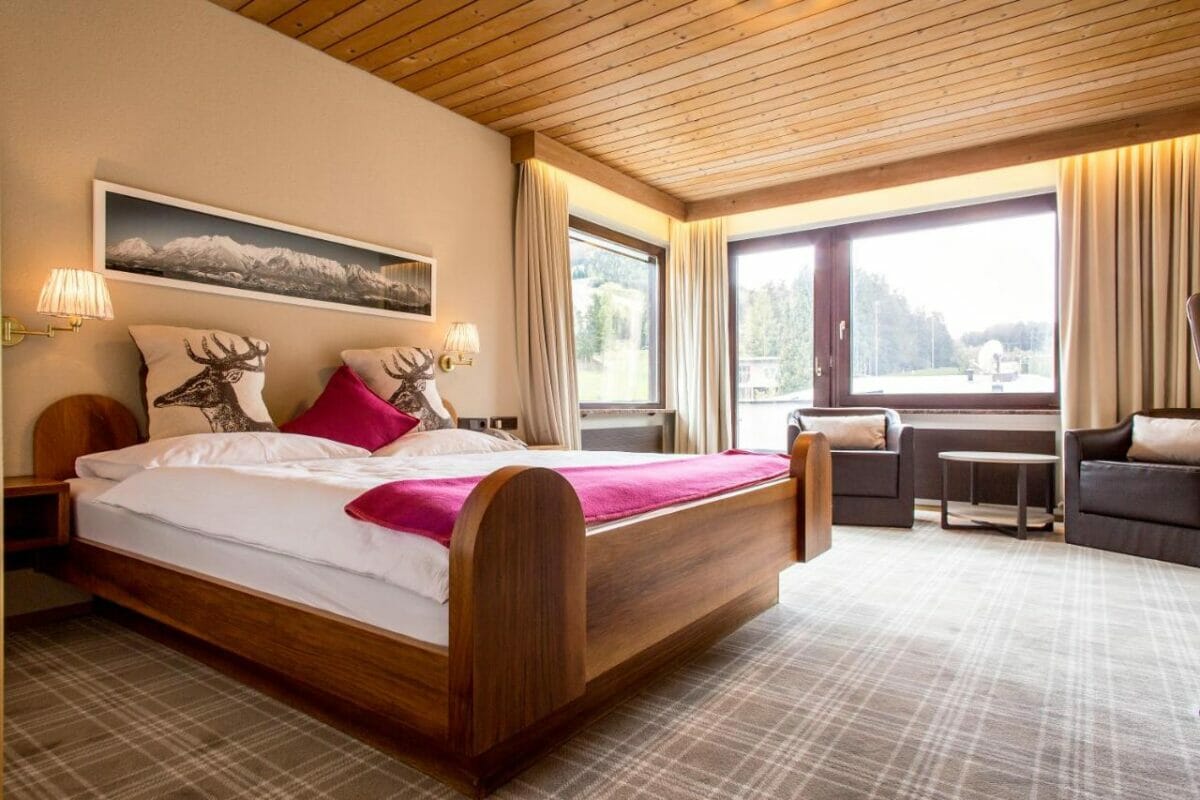
BUDGET – Hotel Garni Römerhof
Combining modern facilities with a traditional style, Hotel Römerhof enjoys a quiet location only 8 km from the center of Innsbruck. Stylish rooms offer amazing views of the surrounding woods and meadows and there is also a spa area on site.
Planning a trip to Austria?
Then you might want to take a look at all our other travel guides about Austria. I promise, they are just as awesome as this article was!
- Where to Stay in Vienna: 7 Best Areas & Hotels
- 2 Days in Vienna Itinerary: The Perfect Weekend in Vienna
- 19 Stunning Vienna Instagram Spots You Can’t Miss
- How to Spend One Day in Salzburg, Austria
- One Day in Hallstatt Itinerary: The Perfect Hallstatt Day Trip
- Hotel Review: Das Edelweiss Salzburg Mountain Resort
- Hotel Review: Hotel Post Lermoos, Austria
Pin It for Later!
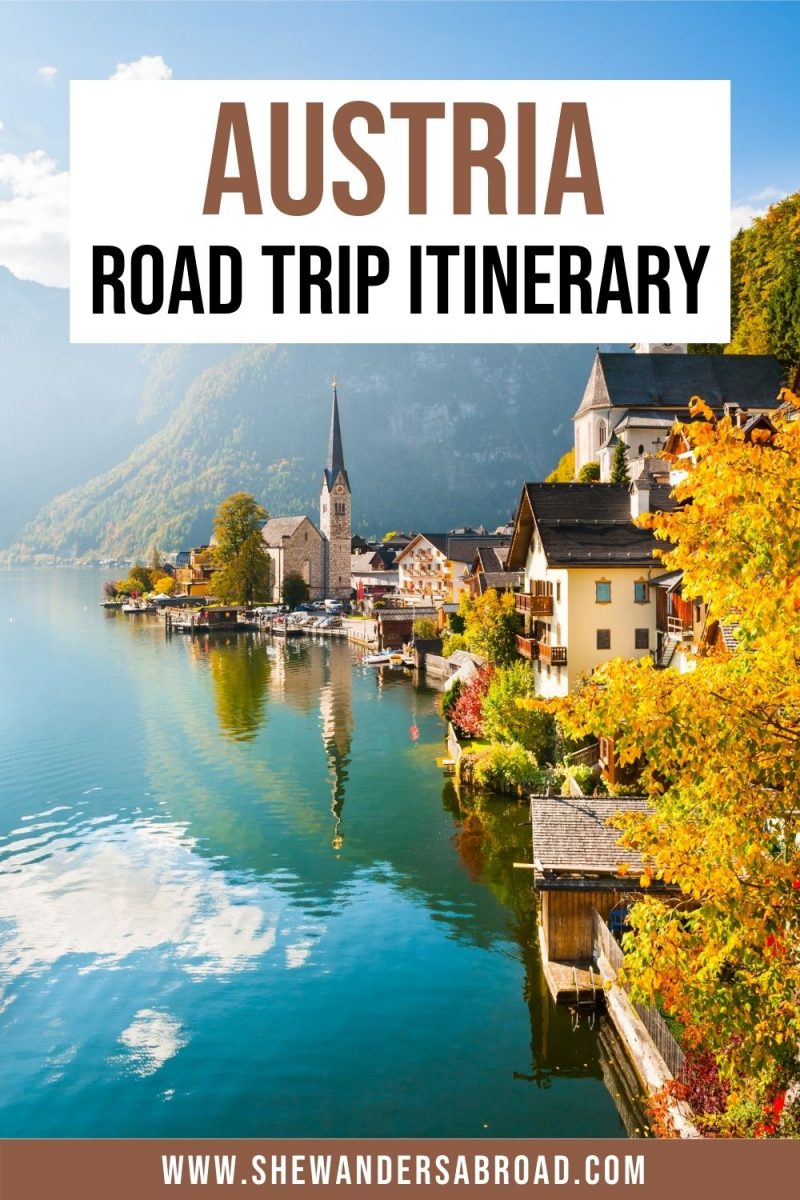
8 thoughts on “The Perfect 10 Day Austria Road Trip Itinerary”
Hi, we are planning to visit Austria from 26 Nov- 3rd Dec and kind of follow this itinerary. However, could you please tick-off routes and places to be avoided during this time of the year?
I’ve never been to Austria during that time of year so unfortunately I don’t have any first hand experience to help with.
Some good advice but all of these places can be visited by train without adding to green house gasses. I can only hope that this ridiculous trend of travel bloggers posing in long dresses and skirts is dead soon. Seriously, posing in a flowing dress on a hanging bridge or hiking trail just distracts from your articles. It also clogs up travel spots for the rest of us travelers as we have to wait around while you get the perfect photo. Isn’t this blog to serve other travelers? Help with our trips? You’re doing the opposite. Please. Just stop.
Well, yes, most of these places can be visited with a train but then you’ll need a lot more time and wouldn’t be able to complete this itinerary in 10 days. But if you have more free time, go for it! I’m sorry if the pictures bothered you but at the end of the day, did you find the information on this blog helpful? Did it help you to plan your trip? If yes, you are welcome, if you found it useless, then you can just click away and read another blog. I don’t think that by sharing some pictures I like makes the article unhelpful but again, sorry if you feel that way.
Hi! I have been to Austria a few time and I still learned a lot from this blog. Some I have done before and I totally agree with your suggestions so I trust the many suggestions and ideas that I have not heard of or tried. Thank you for your thorough research and clear, well thought out itinerary. I picked and chose what I liked from it and will definitely use it on my trip in May. Really great job. Glad I came across your page. Thank you. Thank you!
Thank you so much for your lovely comment, it really means a lot and I’m so happy I was able to help you plan your trip. Have fun in Austria in May!
Can You tell me please which time have you visited. Because the flow of waterfalls is insane. To witness the same experience I’m asking your travel month. And yes i love your article so much that everyday i come and read your blogs.
Sure! We’ve been to Austria multiple times but most of these photos were taken on a road trip in the middle of June. Hope that helps!
Leave a Comment Cancel reply
Welcome to the Holiday Information Service
Our holiday experts are here to assist you with your holiday planning. Send us a message and we will get back you as soon as we can.
Please fill in fields marked with *
Give us a call Monday to Friday from 8am to noon. Outside of our office hours please drop us an email and we'll be happy to answer your questions.
Telephone: 00800 400 200 00 Österreich Werbung Vordere Zollamtsstraße 13 A-1030 Wien Wien AT
*toll-free; calls from mobile networks may incur charges
Find information about travelling to Austria by plane, car, train, and coach.
- Service and Facts
- Getting There and Around
Up-to-date Information on the Coronavirus Situation
Find all current information about COVID-19 measures in Austria below.
Travelling by air - Sustainability Austrian Airlines media_content.tooltip.skipped
Austrian. The charming way to fly.
Enjoy Austrian hospitality and award-winning service on board. Fly from numerous cities around the world non-stop to Vienna with Austrian Airlines.
Austrian Airlines is Austria’s largest carrier and operates a global route network of around 130 destinations and 220 flights per day. 305 million passengers have used the airline since 1957. Thanks to its favourable geographical location in the heart of Europe, the company’s hub at Vienna International Airport is the perfect gateway between East and West. New this year are the so-called green fares , allowing passengers to reduce their CO2 emissions by 20% on European flights.
Austrian Airlines is part of the Lufthansa Group, Europe’s largest airline group, and a member of the Star Alliance, the first global alliance of international airlines.
Brexit and Travelling to Austria
One thing’s for certain: You can still travel to Austria after Brexit – and we look forward to welcoming you. However, there are a few things travellers might want to consider to be on the safe side.
Getting There & Around
Flying to austria, airport transfers, austria by rail, austria by road, austria by coach, passport & visa for austria, entry and customs regulations.
In order for you to enjoy a relaxed journey, we have compiled important information here about customs regulations, border formalities and entering Austria with pets.
The Vignette - Austria's Motorway Toll Sticker
All Austrian motorways (“Autobahn”) and expressways (“S” roads) are subject to toll. Find out where to get and how to display your vignette toll sticker here.
Members save 10% or more on over 100,000 hotels worldwide when you’re signed in
Elektrostal travel guide, visit elektrostal, check elektrostal hotel availability, popular places to visit, electrostal history and art museum.
You can spend time studying the exhibits at Electrostal History and Art Museum in Elektrostal. Take in the museums while you're in the area.
- Cities near Elektrostal

- Places of interest
- Ramenskii History and Art Museum
- Church of Our Lady of Kazan
- Malenky Puppet Theater
- Pavlovsky Posad Museum of Art and History
- Church of Vladimir
- Likino Dulevo Museum of Local Lore
- Shirokov House
- Fairy Tale Children's Model Puppet Theater
- Fifth House Gallery
- Art Gallery of The City District

'Archaeological Sensation': Austrian Winemaker Discovers 40,000-Year-Old Mammoth Bones in Wine Cellar
A local winemaker in Austria has stumbled upon the landmark discovery of hundreds of mammoth bones while renovating his wine cellar.
Experts believe that the discovered bones are approximately 30,000 to 40,000 years old, Knewz.com has learned.
Andreas Pernerstorfer is a local winegrower from the Gobelsburg region of Krems, Lower Austria, known for its wineries and vineyards .
However, no vineyard in the village can currently boast of a " treasure " even close to what Pernerstorfer has discovered in his cellar.
Upon discovering the massive bones, the local winemaker contacted the Federal Monuments Office and was subsequently referred to the Austrian Archaeological Institute of the Austrian Academy of Sciences.
Since the middle of May, archaeologists from the Austrian Academy of Sciences have been undertaking the project of recovering the bones, which they believe date back to the Stone Age .
The researchers involved in the recovery project have called the find an "archaeological sensation," according to a press release from the Austrian Academy of Sciences. They also believe that it "is the most significant find of this kind in more than 100 years."
"Such a dense bone layer of mammoths is rare... It's the first time we've been able to investigate something like this in Austria using modern methods," said archaeologist Hannah Parow-Souchon, who is leading the excavation.
It is worth noting that flint artifacts , jewelry fossils , and charcoal were discovered in the wine cellar adjacent to that of Pernerstorfer around 150 years ago, believed to be around 30,000 to 40,000 years old. The archaeologists involved in the project theorize that mammoth bones found in Pernerstorfer's wine cellar belong to the same archaeological site.
Parow-Souchon, an archaeologist from the Austrian Academy of Sciences, stated that the team found the bones of three different mammoths at this unexpectedly discovered site, and added that this could be where the animals were trapped and killed by humans.
"We know that humans hunted mammoths, but we still know very little about how they did it," she said, according to the press release.
In a statement she gave to CNN over call, she mentioned that the team has discovered at least 300 bones from the 129 square feet so far and that they would be back in August to continue their research further.
"We think we have mostly the complete animals. They’re not in anatomical connection but we do have probably all parts," she told CNN. This make the site all the more valuable, especially since Parow-Souchon mentioned that there are some "rare finds" here as well, like the lingual bone, or tongue bone, of a mammoth.
The site is also unique in the sene that all the other similar sites in Austria were discovered and excavated at least 100 years ago, and are therefore, "largely lost to modern research," per the press release.
Notably, this is not the first time mammoth remains have been discovered in Pernerstorfer's cellar. In her statement to CNN, Parow-Souchon noted that the winemaker's grandfather had extended the cellar in the sixties, during which he had found "some mammoth molars."

- Yekaterinburg
- Novosibirsk
- Vladivostok

- Tours to Russia
- Practicalities
- Russia in Lists
Rusmania • Deep into Russia
Out of the Centre
Savvino-storozhevsky monastery and museum.

Zvenigorod's most famous sight is the Savvino-Storozhevsky Monastery, which was founded in 1398 by the monk Savva from the Troitse-Sergieva Lavra, at the invitation and with the support of Prince Yury Dmitrievich of Zvenigorod. Savva was later canonised as St Sabbas (Savva) of Storozhev. The monastery late flourished under the reign of Tsar Alexis, who chose the monastery as his family church and often went on pilgrimage there and made lots of donations to it. Most of the monastery’s buildings date from this time. The monastery is heavily fortified with thick walls and six towers, the most impressive of which is the Krasny Tower which also serves as the eastern entrance. The monastery was closed in 1918 and only reopened in 1995. In 1998 Patriarch Alexius II took part in a service to return the relics of St Sabbas to the monastery. Today the monastery has the status of a stauropegic monastery, which is second in status to a lavra. In addition to being a working monastery, it also holds the Zvenigorod Historical, Architectural and Art Museum.
Belfry and Neighbouring Churches

Located near the main entrance is the monastery's belfry which is perhaps the calling card of the monastery due to its uniqueness. It was built in the 1650s and the St Sergius of Radonezh’s Church was opened on the middle tier in the mid-17th century, although it was originally dedicated to the Trinity. The belfry's 35-tonne Great Bladgovestny Bell fell in 1941 and was only restored and returned in 2003. Attached to the belfry is a large refectory and the Transfiguration Church, both of which were built on the orders of Tsar Alexis in the 1650s.

To the left of the belfry is another, smaller, refectory which is attached to the Trinity Gate-Church, which was also constructed in the 1650s on the orders of Tsar Alexis who made it his own family church. The church is elaborately decorated with colourful trims and underneath the archway is a beautiful 19th century fresco.
Nativity of Virgin Mary Cathedral

The Nativity of Virgin Mary Cathedral is the oldest building in the monastery and among the oldest buildings in the Moscow Region. It was built between 1404 and 1405 during the lifetime of St Sabbas and using the funds of Prince Yury of Zvenigorod. The white-stone cathedral is a standard four-pillar design with a single golden dome. After the death of St Sabbas he was interred in the cathedral and a new altar dedicated to him was added.

Under the reign of Tsar Alexis the cathedral was decorated with frescoes by Stepan Ryazanets, some of which remain today. Tsar Alexis also presented the cathedral with a five-tier iconostasis, the top row of icons have been preserved.
Tsaritsa's Chambers

The Nativity of Virgin Mary Cathedral is located between the Tsaritsa's Chambers of the left and the Palace of Tsar Alexis on the right. The Tsaritsa's Chambers were built in the mid-17th century for the wife of Tsar Alexey - Tsaritsa Maria Ilinichna Miloskavskaya. The design of the building is influenced by the ancient Russian architectural style. Is prettier than the Tsar's chambers opposite, being red in colour with elaborately decorated window frames and entrance.

At present the Tsaritsa's Chambers houses the Zvenigorod Historical, Architectural and Art Museum. Among its displays is an accurate recreation of the interior of a noble lady's chambers including furniture, decorations and a decorated tiled oven, and an exhibition on the history of Zvenigorod and the monastery.
Palace of Tsar Alexis

The Palace of Tsar Alexis was built in the 1650s and is now one of the best surviving examples of non-religious architecture of that era. It was built especially for Tsar Alexis who often visited the monastery on religious pilgrimages. Its most striking feature is its pretty row of nine chimney spouts which resemble towers.

Plan your next trip to Russia
Ready-to-book tours.
Your holiday in Russia starts here. Choose and book your tour to Russia.
REQUEST A CUSTOMISED TRIP
Looking for something unique? Create the trip of your dreams with the help of our experts.

IMAGES
VIDEO
COMMENTS
Discover the joy of life in the heart of Europe with Austria's nature, culture, and culinary delights. Find itineraries, hotels, tips, and events for your summer holiday in Austria.
Discover Austria's rich culture, stunning scenery and diverse attractions with Lonely Planet's expert tips and recommendations. Explore imperial Vienna, alpine peaks, salt mines, ice caves and more in this comprehensive guide.
Discover 12 of the most stunning and diverse destinations in Austria, from the Alpine resort of Zell am See to the futuristic city of Linz. Explore the culture, history, nature and cuisine of this Central European country with Lonely Planet's expert tips and insights.
Find out why Austria is a great destination for alpine scenery, culture, and cuisine. Learn about its history, attractions, and tips from Rick Steves, a trusted travel expert.
For additional travel information. Enroll in the Smart Traveler Enrollment Program (STEP) to receive security messages and make it easier to locate you in an emergency. Call us in Washington, D.C. at 1-888-407-4747 (toll-free in the United States and Canada) or 1-202-501-4444 (from all other countries) from 8:00 a.m. to 8:00 p.m., Eastern ...
Trains, ferries and bikes: our best tips for getting around in Austria. 5. Always buy a ticket for public transportation. In Austria, you can hop on any train or tram (and even most buses) without having to show a ticket, unlike other European cities such as London. Here it's a trust-based system.
Plan your visit to Austria with Rough Guides, the best guide to Austria. Find out where to go, what to do, where to stay and travel essentials for your trip.
Rick's Best Two-Week Austria Trip (by Train) Day 1: Fly into Vienna (sleep in Vienna) Day 2: Vienna (sleep in Vienna) Day 3: Vienna (sleep in Vienna) Day 4: Vienna (sleep in Vienna — or head to Melk in evening if biking or cruising Danube on Day 5) Day 5: Danube Valley (Melk to Krems and back) (sleep in Melk)
Accessible Travel Covid-19 Events in Austria Sustainability Further search suggestions. Please find information on holidays in Austria in your local language by selecting it here. Welcome to the Holiday Information Service. Contact. Our holiday experts are here to assist you with your holiday planning. Send us a message and we will get back you ...
Get the latest information on travelling to Austria from the UK government, including safety, entry requirements and legal differences. Find out about the risk of terrorism, travel insurance and email alerts.
Day 1 - Vienna. The perfect place to begin any visit to Austria is in the capital city of Vienna. Often considered to be one of the most liveable cities in the world, Vienna is an absolutely beautiful city that is packed with history and interesting things to do. Spend your first day in Vienna wandering around and taking in all of the top sites.
Learn from a former Munich resident's experience of Austria's culture, nature, and etiquette. Find out how to avoid common mistakes, discover offbeat destinations, and enjoy Christmas markets in this comprehensive guide.
All Covid-related entry requirements have been lifted in Austria. Find out more about travelling to Austria, staying in Austria and enjoying the summer in Austria.
Austria Travel Map. In the map below, we've marked must-visit cities, towns, river valleys, hiking destinations, mountain huts, and hotels in Austria. For a curated list of top places to visit, read Best Places to Visit in Austria. If you're traveling to Austria in summer, read Summer in Austria and if you're traveling to Austria in ...
Reissued with obsolete COVID-19 page links removed. Exercise normal precautions in Austria. Read the country information page for additional information on travel to Austria.. If you decide to travel to Austria: Enroll in the Smart Traveler Enrollment Program to receive Alerts and make it easier to locate you in an emergency.; Follow the Department of State on Facebook and Twitter.
Plugs: In Austria, the plugs are type F, the standard voltage is 230 V, and the standard frequency is 50 Hz. I recommend buying a universal adapter (make sure it has surge protection) and using a converter for hairdryers and hot tools. Safety: Austria is an extremely safe country, with the most dangerous crimes being pickpocketing and petty theft.
Traveling to Austria during COVID. Austria is currently experiencing a wave of COVID-19 cases due to the omicron variant. The Department of State has issued a Level 4 Travel Advisory for Austria, advising U.S. citizens not to travel to Austria due to very high levels of COVID-19 cases. U.S. Embassy Vienna has received numerous reports from U.S. citizen visitors who tested positive for COVID-19 ...
Travel during daylight hours only, especially in rural areas. If you choose to drive a vehicle in Austria, learn the local traffic laws and have the proper paperwork. Get any driving permits and insurance you may need. Get an International Driving Permit (IDP). Carry the IDP and a US-issued driver's license at all times.
In order to drive on the Austrian Autobahn and S Roads, your rental must display a vignette toll sticker. If your rental car doesn't have one, you must purchase a vignette before hitting the highways. For this Austria road trip itinerary, purchasing a 10-day vignette is the best option which costs €9.90.
Enjoy Austrian hospitality and award-winning service on board. Fly from numerous cities around the world non-stop to Vienna with Austrian Airlines. Austrian Airlines is Austria's largest carrier and operates a global route network of around 130 destinations and 220 flights per day. 305 million passengers have used the airline since 1957.
Uncover Elektrostal's best with our Travel Guide for 2024. Expert tips & must see recommendations. Whether a tourist or local, plan your holiday today with this tourist guide!
A local winemaker in Austria has stumbled upon the landmark discovery of hundreds of mammoth bones while renovating his wine cellar. Experts believe that the discovered bones are approximately ...
In 1938, it was granted town status. [citation needed]Administrative and municipal status. Within the framework of administrative divisions, it is incorporated as Elektrostal City Under Oblast Jurisdiction—an administrative unit with the status equal to that of the districts. As a municipal division, Elektrostal City Under Oblast Jurisdiction is incorporated as Elektrostal Urban Okrug.
Moscow Oblast (Russian: Московская область, romanized: Moskovskaya oblast, IPA: [mɐˈskofskəjə ˈobləsʲtʲ], informally known as Подмосковье, Podmoskovye, IPA: [pədmɐˈskovʲjə]) is a federal subject of Russia (an oblast).With a population of 8,524,665 (2021 Census) living in an area of 44,300 square kilometers (17,100 sq mi), it is one of the most densely ...
Zvenigorod's most famous sight is the Savvino-Storozhevsky Monastery, which was founded in 1398 by the monk Savva from the Troitse-Sergieva Lavra, at the invitation and with the support of Prince Yury Dmitrievich of Zvenigorod. Savva was later canonised as St Sabbas (Savva) of Storozhev. The monastery late flourished under the reign of Tsar ...